- Entertainment
- General Knowledge


10 Movie Adaptions That Brought Popular Songs to Life

10 Miraculous Advances Toward Curing Incurable Diseases

10 Undeniable Signs That People’s Views of Mushrooms Are Changing

10 Strange Attempts to Smuggle Animals

10 Natural Rock Formations That Will Make You Do a Double Take

10 Actors Hidden in Your Favorite Movies

10 Science Facts That Will Change How You Look at the World

10 Incredible Female Comic Book Artists

10 Terrifying Serial Killers from Centuries Ago

10 Hilariously Over-Engineered Solutions to Simple Problems
Who's behind listverse.

Jamie Frater
Head Editor
Jamie founded Listverse due to an insatiable desire to share fascinating, obscure, and bizarre facts. He has been a guest speaker on numerous national radio and television stations and is a five time published author.
Top 10 Unethical Psychological Experiments
Psychology is a relatively new science which gained popularity in the early 20th century with Wilhelm Wundt. In the zeal to learn about the human thought process and behavior, many early psychiatrists went too far with their experimentations, leading to stringent ethics codes and standards. Though these are highly unethical experiments, it should be mentioned that they did pave the way to induct our current ethical standards of experiments, and that should be seen as a positive. There is some crossover on this list with the Top 10 Evil Human Experiments . Three items from that list are reproduced here (items 8, 9, and 10) for the sake of completeness.

The Monster Study was a stuttering experiment on 22 orphan children in Davenport, Iowa, in 1939 conducted by Wendell Johnson at the University of Iowa. Johnson chose one of his graduate students, Mary Tudor, to conduct the experiment and he supervised her research. After placing the children in control and experimental groups, Tudor gave positive speech therapy to half of the children, praising the fluency of their speech, and negative speech therapy to the other half, belittling the children for every speech imperfection and telling them they were stutterers. Many of the normal speaking orphan children who received negative therapy in the experiment suffered negative psychological effects and some retained speech problems during the course of their life. Dubbed “The Monster Study” by some of Johnson’s peers who were horrified that he would experiment on orphan children to prove a theory, the experiment was kept hidden for fear Johnson’s reputation would be tarnished in the wake of human experiments conducted by the Nazis during World War II. The University of Iowa publicly apologized for the Monster Study in 2001.
South Africa’s apartheid army forced white lesbian and gay soldiers to undergo ‘sex-change’ operations in the 1970’s and the 1980’s, and submitted many to chemical castration, electric shock, and other unethical medical experiments. Although the exact number is not known, former apartheid army surgeons estimate that as many as 900 forced ‘sexual reassignment’ operations may have been performed between 1971 and 1989 at military hospitals, as part of a top-secret program to root out homosexuality from the service.
Army psychiatrists aided by chaplains aggressively ferreted out suspected homosexuals from the armed forces, sending them discretely to military psychiatric units, chiefly ward 22 of 1 Military Hospital at Voortrekkerhoogte, near Pretoria. Those who could not be ‘cured’ with drugs, aversion shock therapy, hormone treatment, and other radical ‘psychiatric’ means were chemically castrated or given sex-change operations.
Although several cases of lesbian soldiers abused have been documented so far—including one botched sex-change operation—most of the victims appear to have been young, 16 to 24-year-old white males drafted into the apartheid army.
Dr. Aubrey Levin (the head of the study) is now Clinical Professor in the Department of Psychiatry (Forensic Division) at the University of Calgary’s Medical School. He is also in private practice, as a member in good standing of the College of Physicians and Surgeons of Alberta.

This study was not necessarily unethical, but the results were disastrous, and its sheer infamy puts it on this list. Famed psychologist Philip Zimbardo led this experiment to examine that behavior of individuals when placed into roles of either prisoner or guard and the norms these individuals were expected to display.
Prisoners were put into a situation purposely meant to cause disorientation, degradation, and depersonalization. Guards were not given any specific directions or training on how to carry out their roles. Though at first, the students were unsure of how to carry out their roles, eventually they had no problem. The second day of the experiment invited a rebellion by the prisoners, which brought a severe response from the guards. Things only went downhill from there.
Guards implemented a privilege system meant to break solidarity between prisoners and create distrust between them. The guards became paranoid about the prisoners, believing they were out to get them. This caused the privilege system to be controlled in every aspect, even in the prisoners’ bodily functions. Prisoners began to experience emotional disturbances, depression, and learned helplessness. During this time, prisoners were visited by a prison chaplain. They identified themselves as numbers rather than their names, and when asked how they planned to leave the prison, prisoners were confused. They had completely assimilated into their roles.
Dr. Zimbardo ended the experiment after five days, when he realized just how real the prison had become to the subjects. Though the experiment lasted only a short time, the results are very telling. How quickly someone can abuse their control when put into the right circumstances. The scandal at Abu Ghraib that shocked the U.S. in 2004 is prime example of Zimbardo’s experiment findings.

While animal experimentation can be incredibly helpful in understanding man, and developing life saving drugs, there have been experiments which go well beyond the realms of ethics. The monkey drug trials of 1969 were one such case. In this experiment, a large group of monkeys and rats were trained to inject themselves with an assortment of drugs, including morphine, alcohol, codeine, cocaine, and amphetamines. Once the animals were capable of self-injecting, they were left to their own devices with a large supply of each drug.
The animals were so disturbed (as one would expect) that some tried so hard to escape that they broke their arms in the process. The monkeys taking cocaine suffered convulsions and in some cases tore off their own fingers (possible as a consequence of hallucinations), one monkey taking amphetamines tore all of the fur from his arm and abdomen, and in the case of cocaine and morphine combined, death would occur within 2 weeks.
The point of the experiment was simply to understand the effects of addiction and drug use; a point which, I think, most rational and ethical people would know did not require such horrendous treatment of animals.

In 1924, Carney Landis, a psychology graduate at the University of Minnesota developed an experiment to determine whether different emotions create facial expressions specific to that emotion. The aim of this experiment was to see if all people have a common expression when feeling disgust, shock, joy, and so on.
Most of the participants in the experiment were students. They were taken to a lab and their faces were painted with black lines, in order to study the movements of their facial muscles. They were then exposed to a variety of stimuli designed to create a strong reaction. As each person reacted, they were photographed by Landis. The subjects were made to smell ammonia, to look at pornography, and to put their hands into a bucket of frogs. But the controversy around this study was the final part of the test.
Participants were shown a live rat and given instructions to behead it. While all the participants were repelled by the idea, fully one third did it. The situation was made worse by the fact that most of the students had no idea how to perform this operation in a humane manner and the animals were forced to experience great suffering. For the one third who refused to perform the decapitation, Landis would pick up the knife and cut the animals head off for them.
The consequences of the study were actually more important for their evidence that people are willing to do almost anything when asked in a situation like this. The study did not prove that humans have a common set of unique facial expressions.

John Watson, father of behaviorism, was a psychologist who was apt to using orphans in his experiments. Watson wanted to test the idea of whether fear was innate or a conditioned response. Little Albert, the nickname given to the nine month old infant that Watson chose from a hospital, was exposed to a white rabbit, a white rat, a monkey, masks with and without hair, cotton wool, burning newspaper, and a miscellanea of other things for two months without any sort of conditioning. Then experiment began by placing Albert on a mattress in the middle of a room. A white laboratory rat was placed near Albert and he was allowed to play with it. At this point, the child showed no fear of the rat.
Then Watson would make a loud sound behind Albert’s back by striking a suspended steel bar with a hammer when the baby touched the rat. In these occasions, Little Albert cried and showed fear as he heard the noise. After this was done several times, Albert became very distressed when the rat was displayed. Albert had associated the white rat with the loud noise and was producing the fearful or emotional response of crying.
Little Albert started to generalize his fear response to anything fluffy or white (or both). The most unfortunate part of this experiment is that Little Albert was not desensitized to his fear. He left the hospital before Watson could do so.

In 1965, psychologists Mark Seligman and Steve Maier conducted an experiment in which three groups of dogs were placed in harnesses. Dogs from group one were released after a certain amount of time, with no harm done. Dogs from group two were paired up and leashed together, and one from each pair was given electrical shocks that could be ended by pressing a lever. Dogs from group three were also paired up and leashed together, one receiving shocks, but the shocks didn’t end when the lever was pressed. Shocks came randomly and seemed inevitable, which caused “learned helplessness,” the dogs assuming that nothing could be done about the shocks. The dogs in group three ended up displaying symptoms of clinical depression.
Later, group three dogs were placed in a box with by themselves. They were again shocked, but they could easily end the shocks by jumping out of the box. These dogs simply “gave up,” again displaying learned helplessness. The image above is a healthy pet dog in a science lab, not an animal used in experimentation.
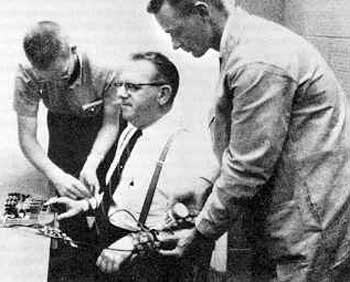
The notorious Milgrim Study is one of the most well known of psychology experiments. Stanley Milgram, a social psychologist at Yale University, wanted to test obedience to authority. He set up an experiment with “teachers” who were the actual participants, and a “learner,” who was an actor. Both the teacher and the learner were told that the study was about memory and learning.
Both the learner and the teacher received slips that they were told were given to them randomly, when in fact, both had been given slips that read “teacher.” The actor claimed to receive a “learner” slip, so the teacher was deceived. Both were separated into separate rooms and could only hear each other. The teacher read a pair of words, following by four possible answers to the question. If the learner was incorrect with his answer, the teacher was to administer a shock with voltage that increased with every wrong answer. If correct, there would be no shock, and the teacher would advance to the next question.
In reality, no one was being shocked. A tape recorder with pre-recorded screams was hooked up to play each time the teacher administered a shock. When the shocks got to a higher voltage, the actor/learner would bang on the wall and ask the teacher to stop. Eventually all screams and banging would stop and silence would ensue. This was the point when many of the teachers exhibited extreme distress and would ask to stop the experiment. Some questioned the experiment, but many were encouraged to go on and told they would not be responsible for any results.
If at any time the subject indicated his desire to halt the experiment, he was told by the experimenter, Please continue. The experiment requires that you continue. It is absolutely essential that you continue. You have no other choice, you must go on. If after all four orders the teacher still wished to stop the experiment, it was ended. Only 14 out of 40 teachers halted the experiment before administering a 450 volt shock, though every participant questioned the experiment, and no teacher firmly refused to stop the shocks before 300 volts.
In 1981, Tom Peters and Robert H. Waterman Jr. wrote that the Milgram Experiment and the later Stanford prison experiment were frightening in their implications about the danger lurking in human nature’s dark side.

Dr. Harry Harlow was an unsympathetic person, using terms like the “rape rack” and “iron maiden” in his experiments. He is most well-known for the experiments he conducted on rhesus monkeys concerning social isolation. Dr. Harlow took infant rhesus monkeys who had already bonded with their mothers and placed them in a stainless steel vertical chamber device alone with no contact in order to sever those bonds. They were kept in the chambers for up to one year. Many of these monkeys came out of the chamber psychotic, and many did not recover. Dr. Harlow concluded that even a happy, normal childhood was no defense against depression, while science writer Deborah Blum called these, “common sense results.”
Gene Sackett of the University of Washington in Seattle, one of Harlow’s doctoral students, stated he believes the animal liberation movement in the U.S. was born as a result of Harlow’s experiments. William Mason, one of Harlow’s students, said that Harlow “kept this going to the point where it was clear to many people that the work was really violating ordinary sensibilities, that anybody with respect for life or people would find this offensive. It’s as if he sat down and said, ‘I’m only going to be around another ten years. What I’d like to do, then, is leave a great big mess behind.’ If that was his aim, he did a perfect job.”

In 1965, a baby boy was born in Canada named David Reimer. At eight months old, he was brought in for a standard procedure: circumcision. Unfortunately, during the process his penis was burned off. This was due to the physicians using an electrocautery needle instead of a standard scalpel. When the parents visited psychologist John Money, he suggested a simple solution to a very complicated problem: a sex change. His parents were distraught about the situation, but they eventually agreed to the procedure. They didn’t know that the doctor’s true intentions were to prove that nurture, not nature, determined gender identity. For his own selfish gain, he decided to use David as his own private case study.
David, now Brenda, had a constructed vagina and was given hormonal supplements. Dr. Money called the experiment a success, neglecting to report the negative effects of Brenda’s surgery. She acted very much like a stereotypical boy and had conflicting and confusing feelings about an array of topics. Worst of all, her parents did not inform her of the horrific accident as an infant. This caused a devastating tremor through the family. Brenda’s mother was suicidal, her father was alcoholic, and her brother was severely depressed.
Finally, Brenda’s parents gave her the news of her true gender when she was fourteen years old. Brenda decided to become David again, stopped taking estrogen, and had a penis reconstructed. Dr. Money reported no further results beyond insisting that the experiment had been a success, leaving out many details of David’s obvious struggle with gender identity. At the age of 38, David committed suicide.
This article is licensed under the GFDL because it contains quotations from Wikipedia.
More Great Lists

- 30 Most Unethical Psychology Human Experiments

Disturbing human experiments aren’t something the average person thinks too much about. Rather, the progress achieved in the last 150 years of human history is an accomplishment we’re reminded of almost daily. Achievements made in biomedicine and the f ield of psychology mean that we no longer need to worry about things like deadly diseases or masturbation as a form of insanity. For better or worse, we have developed more effective ways to gather information, treat skin abnormalities, and even kill each other. But what we are not constantly reminded of are the human lives that have been damaged or lost in the name of this progress. The following is a list of the 30 most disturbing human experiments in history.
30. The Tearoom Sex Study

Image Source Sociologist Laud Humphreys often wondered about the men who commit impersonal sexual acts with one another in public restrooms. He wondered why “tearoom sex” — fellatio in public restrooms — led to the majority of homosexual arrests in the United States. Humphreys decided to become a “watchqueen” (the person who keeps watch and coughs when a cop or stranger get near) for his Ph.D. dissertation at Washington University. Throughout his research, Humphreys observed hundreds of acts of fellatio and interviewed many of the participants. He found that 54% of his subjects were married, and 38% were very clearly neither bisexual or homosexual. Humphreys’ research shattered a number of stereotypes held by both the public and law enforcement.
29. Prison Inmates as Test Subjects
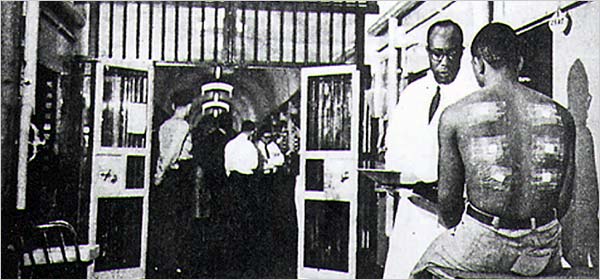
Image Source In 1951, Dr. Albert M. Kligman, a dermatologist at the University of Pennsylvania and future inventor of Retin-A, began experimenting on inmates at Philadelphia’s Holmesburg Prison. As Kligman later told a newspaper reporter, “All I saw before me were acres of skin. It was like a farmer seeing a field for the first time.” Over the next 20 years, inmates willingly allowed Kligman to use their bodies in experiments involving toothpaste, deodorant, shampoo, skin creams, detergents, liquid diets, eye drops, foot powders, and hair dyes. Though the tests required constant biopsies and painful procedures, none of the inmates experienced long-term harm.
28. Henrietta Lacks
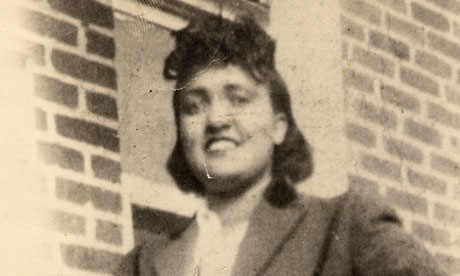
Image Source In 1955, Henrietta Lacks, a poor, uneducated African-American woman from Baltimore, was the unwitting source of cells which where then cultured for the purpose of medical research. Though researchers had tried to grow cells before, Henrietta’s were the first successfully kept alive and cloned. Henrietta’s cells, known as HeLa cells, have been instrumental in the development of the polio vaccine, cancer research, AIDS research, gene mapping, and countless other scientific endeavors. Henrietta died penniless and was buried without a tombstone in a family cemetery. For decades, her husband and five children were left in the dark about their wife and mother’s amazing contribution to modern medicine.
27. Project QKHILLTOP
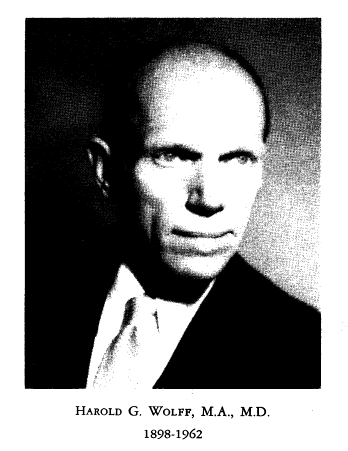
Image Source In 1954, the CIA developed an experiment called Project QKHILLTOP to study Chinese brainwashing techniques, which they then used to develop new methods of interrogation. Leading the research was Dr. Harold Wolff of Cornell University Medical School. After requesting that the CIA provide him with information on imprisonment, deprivation, humiliation, torture, brainwashing, hypnoses, and more, Wolff’s research team began to formulate a plan through which they would develop secret drugs and various brain damaging procedures. According to a letter he wrote, in order to fully test the effects of the harmful research, Wolff expected the CIA to “make available suitable subjects.”
26. Stateville Penitentiary Malaria Study
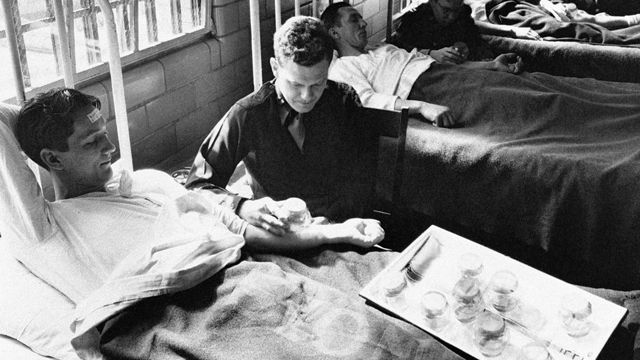
Image Source During World War II, malaria and other tropical diseases were impeding the efforts of American military in the Pacific. In order to get a grip, the Malaria Research Project was established at Stateville Penitentiary in Joliet, Illinois. Doctors from the University of Chicago exposed 441 volunteer inmates to bites from malaria-infected mosquitos. Though one inmate died of a heart attack, researchers insisted his death was unrelated to the study. The widely-praised experiment continued at Stateville for 29 years, and included the first human test of Primaquine, a medication still used in the treatment of malaria and Pneumocystis pneumonia.
25. Emma Eckstein and Sigmund Freud
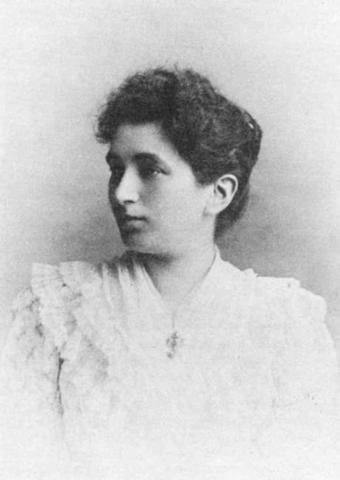
Image Source Despite seeking the help of Sigmund Freud for vague symptoms like stomach ailments and slight depression, 27-year old Emma Eckstein was “treated” by the German doctor for hysteria and excessive masturbation, a habit then considered dangerous to mental health. Emma’s treatment included a disturbing experimental surgery in which she was anesthetized with only a local anesthetic and cocaine before the inside of her nose was cauterized. Not surprisingly, Emma’s surgery was a disaster. Whether Emma was a legitimate medical patient or a source of more amorous interest for Freud, as a recent movie suggests, Freud continued to treat Emma for three years.
24. Dr. William Beaumont and the Stomach
Image Source In 1822, a fur trader on Mackinac Island in Michigan was accidentally shot in the stomach and treated by Dr. William Beaumont. Despite dire predictions, the fur trader survived — but with a hole (fistula) in his stomach that never healed. Recognizing the unique opportunity to observe the digestive process, Beaumont began conducting experiments. Beaumont would tie food to a string, then insert it through the hole in the trader’s stomach. Every few hours, Beaumont would remove the food to observe how it had been digested. Though gruesome, Beaumont’s experiments led to the worldwide acceptance that digestion was a chemical, not a mechanical, process.
23. Electroshock Therapy on Children

Image Source In the 1960s, Dr. Lauretta Bender of New York’s Creedmoor Hospital began what she believed to be a revolutionary treatment for children with social issues — electroshock therapy. Bender’s methods included interviewing and analyzing a sensitive child in front of a large group, then applying a gentle amount of pressure to the child’s head. Supposedly, any child who moved with the pressure was showing early signs of schizophrenia. Herself the victim of a misunderstood childhood, Bender was said to be unsympathetic to the children in her care. By the time her treatments were shut down, Bender had used electroshock therapy on over 100 children, the youngest of whom was age three.
22. Project Artichoke
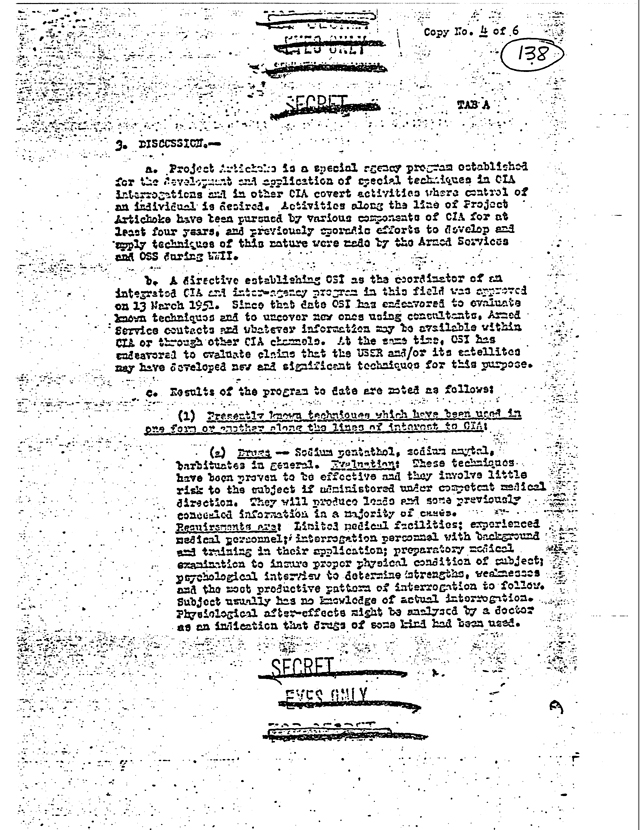
Image Source In the 1950s, the CIA’s Office of Scientific Intelligence ran a series of mind control projects in an attempt to answer the question “Can we get control of an individual to the point where he will do our bidding against his will and even against fundamental laws of nature?” One of these programs, Project Artichoke, studied hypnosis, forced morphine addiction, drug withdrawal, and the use of chemicals to incite amnesia in unwitting human subjects. Though the project was eventually shut down in the mid-1960s, the project opened the door to extensive research on the use of mind-control in field operations.
21. Hepatitis in Mentally Disabled Children

Image Source In the 1950s, Willowbrook State School, a New York state-run institution for mentally handicapped children, began experiencing outbreaks of hepatitis. Due to unsanitary conditions, it was virtually inevitable that these children would contract hepatitis. Dr. Saul Krugman, sent to investigate the outbreak, proposed an experiment that would assist in developing a vaccine. However, the experiment required deliberately infecting children with the disease. Though Krugman’s study was controversial from the start, critics were eventually silenced by the permission letters obtained from each child’s parents. In reality, offering one’s child to the experiment was oftentimes the only way to guarantee admittance into the overcrowded institution.
20. Operation Midnight Climax
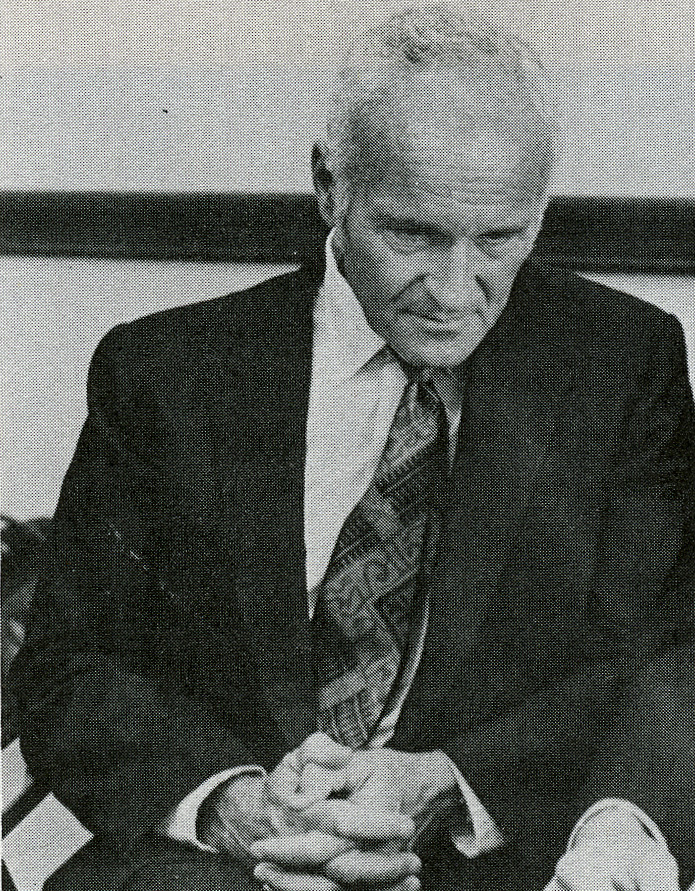
Image Source Initially established in the 1950s as a sub-project of a CIA-sponsored, mind-control research program, Operation Midnight Climax sought to study the effects of LSD on individuals. In San Francisco and New York, unconsenting subjects were lured to safehouses by prostitutes on the CIA payroll, unknowingly given LSD and other mind-altering substances, and monitored from behind one-way glass. Though the safehouses were shut down in 1965, when it was discovered that the CIA was administering LSD to human subjects, Operation Midnight Climax was a theater for extensive research on sexual blackmail, surveillance technology, and the use of mind-altering drugs on field operations.
19. Study of Humans Accidentally Exposed to Fallout Radiation
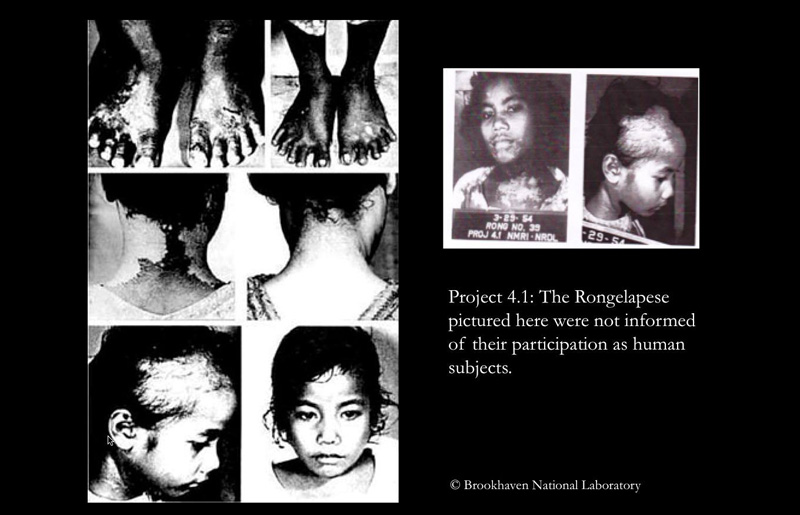
Image Source The 1954 “Study of Response of Human Beings exposed to Significant Beta and Gamma Radiation due to Fall-out from High-Yield Weapons,” known better as Project 4.1, was a medical study conducted by the U.S. of residents of the Marshall Islands. When the Castle Bravo nuclear test resulted in a yield larger than originally expected, the government instituted a top secret study to “evaluate the severity of radiation injury” to those accidentally exposed. Though most sources agree the exposure was unintentional, many Marshallese believed Project 4.1 was planned before the Castle Bravo test. In all, 239 Marshallese were exposed to significant levels of radiation.
18. The Monster Study
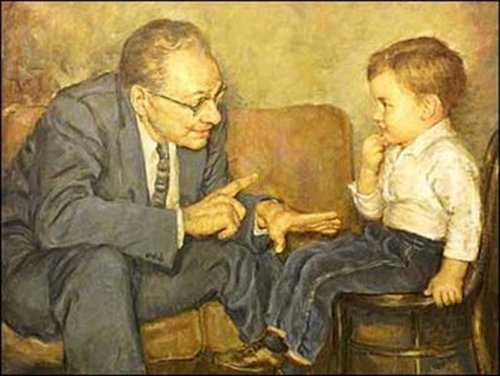
Image Source In 1939, University of Iowa researchers Wendell Johnson and Mary Tudor conducted a stuttering experiment on 22 orphan children in Davenport, Iowa. The children were separated into two groups, the first of which received positive speech therapy where children were praised for speech fluency. In the second group, children received negative speech therapy and were belittled for every speech imperfection. Normal-speaking children in the second group developed speech problems which they then retained for the rest of their lives. Terrified by the news of human experiments conducted by the Nazis, Johnson and Tudor never published the results of their “Monster Study.”
17. Project MKUltra

Image Source Project MKUltra is the code name of a CIA-sponsored research operation that experimented in human behavioral engineering. From 1953 to 1973, the program employed various methodologies to manipulate the mental states of American and Canadian citizens. These unwitting human test subjects were plied with LSD and other mind-altering drugs, hypnosis, sensory deprivation, isolation, verbal and sexual abuse, and various forms of torture. Research occurred at universities, hospitals, prisons, and pharmaceutical companies. Though the project sought to develop “chemical […] materials capable of employment in clandestine operations,” Project MKUltra was ended by a Congress-commissioned investigation into CIA activities within the U.S.
16. Experiments on Newborns
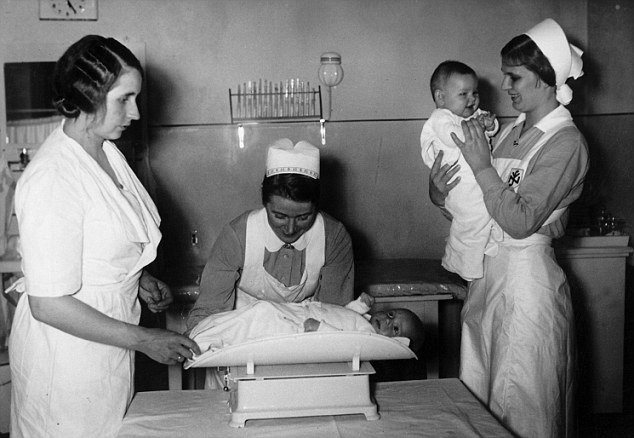
Image Source In the 1960s, researchers at the University of California began an experiment to study changes in blood pressure and blood flow. The researchers used 113 newborns ranging in age from one hour to three days old as test subjects. In one experiment, a catheter was inserted through the umbilical arteries and into the aorta. The newborn’s feet were then immersed in ice water for the purpose of testing aortic pressure. In another experiment, up to 50 newborns were individually strapped onto a circumcision board, then tilted so that their blood rushed to their head and their blood pressure could be monitored.
15. The Aversion Project

Image Source In 1969, during South Africa’s detestable Apartheid era, thousands of homosexuals were handed over to the care of Dr. Aubrey Levin, an army colonel and psychologist convinced he could “cure” homosexuals. At the Voortrekkerhoogte military hospital near Pretoria, Levin used electroconvulsive aversion therapy to “reorientate” his patients. Electrodes were strapped to a patient’s upper arm with wires running to a dial calibrated from 1 to 10. Homosexual men were shown pictures of a naked man and encouraged to fantasize, at which point the patient was subjected to severe shocks. When Levin was warned that he would be named an abuser of human rights, he emigrated to Canada where he currently works at a teaching hospital.
14. Medical Experiments on Prison Inmates
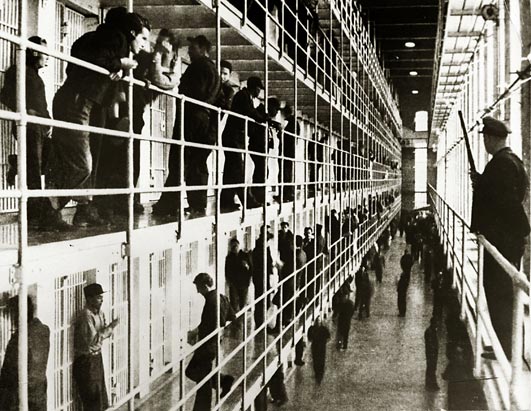
Image Source Perhaps one benefit of being an inmate at California’s San Quentin prison is the easy access to acclaimed Bay Area doctors. But if that’s the case, then a downside is that these doctors also have easy access to inmates. From 1913 to 1951, Dr. Leo Stanley, chief surgeon at San Quentin, used prisoners as test subjects in a variety of bizarre medical experiments. Stanley’s experiments included sterilization and potential treatments for the Spanish Flu. In one particularly disturbing experiment, Stanley performed testicle transplants on living prisoners using testicles from executed prisoners and, in some cases, from goats and boars.
13. Sexual Reassignment

Image Source In 1965, Canadian David Peter Reimer was born biologically male. But at seven months old, his penis was accidentally destroyed during an unconventional circumcision by cauterization. John Money, a psychologist and proponent of the idea that gender is learned, convinced the Reimers that their son would be more likely to achieve a successful, functional sexual maturation as a girl. Though Money continued to report only success over the years, David’s own account insisted that he had never identified as female. He spent his childhood teased, ostracized, and seriously depressed. At age 38, David committed suicide by shooting himself in the head.
12. Effect of Radiation on Testicles

Image Source Between 1963 and 1973, dozens of Washington and Oregon prison inmates were used as test subjects in an experiment designed to test the effects of radiation on testicles. Bribed with cash and the suggestion of parole, 130 inmates willingly agreed to participate in the experiments conducted by the University of Washington on behalf of the U.S. government. In most cases, subjects were zapped with over 400 rads of radiation (the equivalent of 2,400 chest x-rays) in 10 minute intervals. However, it was much later that the inmates learned the experiments were far more dangerous than they had been told. In 2000, the former participants settled a $2.4 million class-action settlement from the University.
11. Stanford Prison Experiment
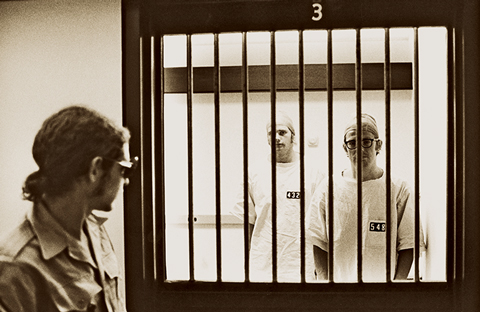
Image Source Conducted at Stanford University from August 14-20, 1971, the Stanford Prison Experiment was an investigation into the causes of conflict between military guards and prisoners. Twenty-four male students were chosen and randomly assigned roles of prisoners and guards. They were then situated in a specially-designed mock prison in the basement of the Stanford psychology building. Those subjects assigned to be guards enforced authoritarian measures and subjected the prisoners to psychological torture. Surprisingly, many of the prisoners accepted the abuses. Though the experiment exceeded the expectations of all of the researchers, it was abruptly ended after only six days.
10. Syphilis Experiments in Guatemala
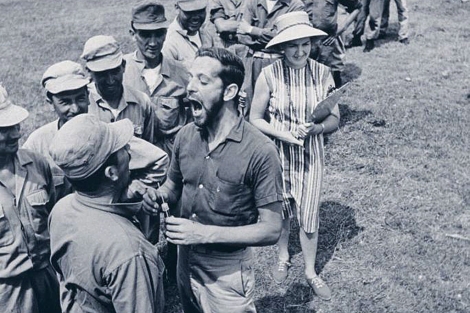
Image Source From 1946 to 1948, the United States government, Guatemalan president Juan José Arévalo, and some Guatemalan health ministries, cooperated in a disturbing human experiment on unwitting Guatemalan citizens. Doctors deliberately infected soldiers, prostitutes, prisoners, and mental patients with syphilis and other sexually transmitted diseases in an attempt to track their untreated natural progression. Treated only with antibiotics, the experiment resulted in at least 30 documented deaths. In 2010, the United States made a formal apology to Guatemala for their involvement in these experiments.
9. Tuskegee Syphilis Study
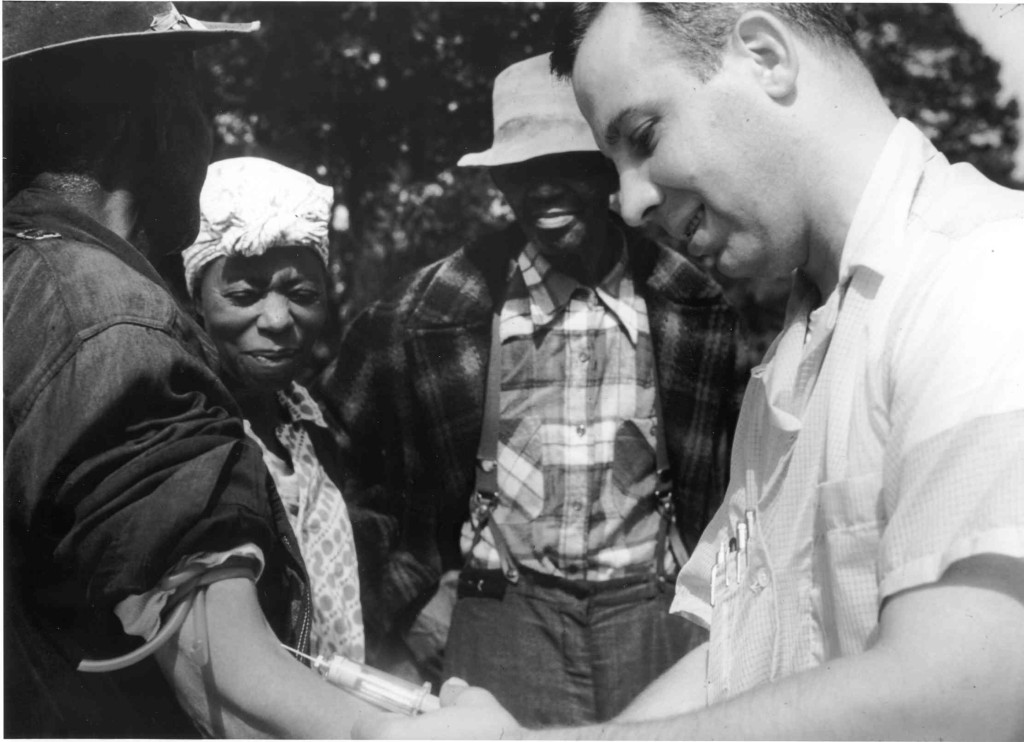
Image Source In 1932, the U.S. Public Health Service began working with the Tuskegee Institute to track the natural progression of untreated syphilis. Six hundred poor, illiterate, male sharecroppers were found and hired in Macon County, Alabama. Of the 600 men, only 399 had previously contracted syphilis, and none were told they had a life threatening disease. Instead, they were told they were receiving free healthcare, meals, and burial insurance in exchange for participating. Even after Penicillin was proven an effective cure for syphilis in 1947, the study continued until 1972. In addition to the original subjects, victims of the study included wives who contracted the disease, and children born with congenital syphilis. In 1997, President Bill Clinton formally apologized to those affected by what is often called the “most infamous biomedical experiment in U.S. history.”
8. Milgram Experiment
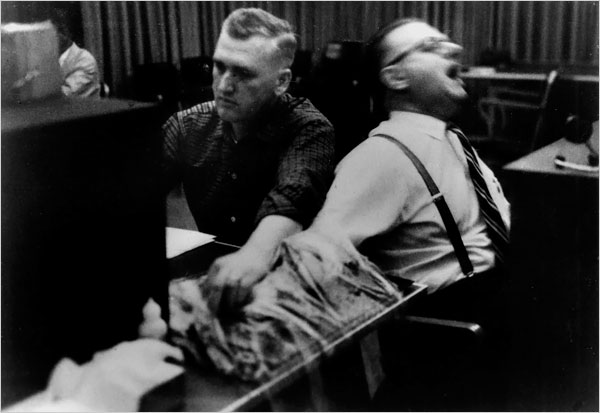
In 1961, Stanley Milgram, a psychologist at Yale University, began a series of social psychology experiments that measured the willingness of test subjects to obey an authority figure. Conducted only three months after the start of the trial of German Nazi war criminal Adolf Eichmann, Milgram’s experiment sought to answer the question, “Could it be that Eichmann and his million accomplices in the Holocaust were just following orders?” In the experiment, two participants (one secretly an actor and one an unwitting test subject) were separated into two rooms where they could hear, but not see, each other. The test subject would then read a series of questions to the actor, punishing each wrong answer with an electric shock. Though many people would indicate their desire to stop the experiment, almost all subjects continued when they were told they would not be held responsible, or that there would not be any permanent damage.
7. Infected Mosquitos in Towns

In 1956 and 1957, the United States Army conducted a number of biological warfare experiments on the cities of Savannah, Georgia and Avon Park, Florida. In one such experiment, millions of infected mosquitos were released into the two cities, in order to see if the insects could spread yellow fever and dengue fever. Not surprisingly, hundreds of researchers contracted illnesses that included fevers, respiratory problems, stillbirths, encephalitis, and typhoid. In order to photograph the results of their experiments, Army researchers pretended to be public health workers. Several people died as a result of the research.
6. Human Experimentation in the Soviet Union

Beginning in 1921 and continuing for most of the 21st century, the Soviet Union employed poison laboratories known as Laboratory 1, Laboratory 12, and Kamera as covert research facilities of the secret police agencies. Prisoners from the Gulags were exposed to a number of deadly poisons, the purpose of which was to find a tasteless, odorless chemical that could not be detected post mortem. Tested poisons included mustard gas, ricin, digitoxin, and curare, among others. Men and women of varying ages and physical conditions were brought to the laboratories and given the poisons as “medication,” or part of a meal or drink.
5. Human Experimentation in North Korea

Image Source Several North Korean defectors have described witnessing disturbing cases of human experimentation. In one alleged experiment, 50 healthy women prisoners were given poisoned cabbage leaves — all 50 women were dead within 20 minutes. Other described experiments include the practice of surgery on prisoners without anesthesia, purposeful starvation, beating prisoners over the head before using the zombie-like victims for target practice, and chambers in which whole families are murdered with suffocation gas. It is said that each month, a black van known as “the crow” collects 40-50 people from a camp and takes them to an known location for experiments.
4. Nazi Human Experimentation
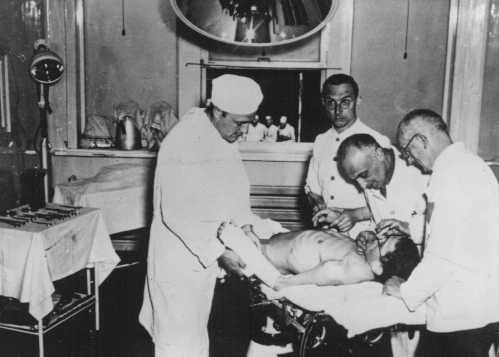
Image Source Over the course of the Third Reich and the Holocaust, Nazi Germany conducted a series of medical experiments on Jews, POWs, Romani, and other persecuted groups. The experiments were conducted in concentration camps, and in most cases resulted in death, disfigurement, or permanent disability. Especially disturbing experiments included attempts to genetically manipulate twins; bone, muscle, and nerve transplantation; exposure to diseases and chemical gasses; sterilization, and anything else the infamous Nazi doctors could think up. After the war, these crimes were tried as part of the Nuremberg Trial and ultimately led to the development of the Nuremberg Code of medical ethics.
3. Unit 731

Image Source From 1937 to 1945, the imperial Japanese Army developed a covert biological and chemical warfare research experiment called Unit 731. Based in the large city of Harbin, Unit 731 was responsible for some of the most atrocious war crimes in history. Chinese and Russian subjects — men, women, children, infants, the elderly, and pregnant women — were subjected to experiments which included the removal of organs from a live body, amputation for the study of blood loss, germ warfare attacks, and weapons testing. Some prisoners even had their stomachs surgically removed and their esophagus reattached to the intestines. Many of the scientists involved in Unit 731 rose to prominent careers in politics, academia, business, and medicine.
2. Radioactive Materials in Pregnant Women
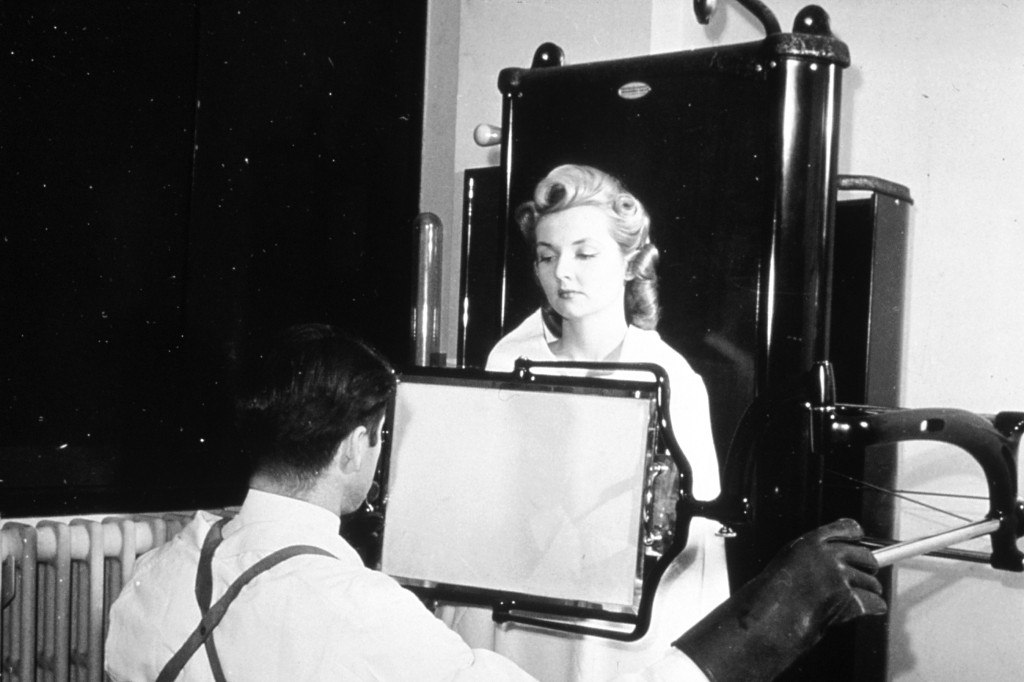
Image Source Shortly after World War II, with the impending Cold War forefront on the minds of Americans, many medical researchers were preoccupied with the idea of radioactivity and chemical warfare. In an experiment at Vanderbilt University, 829 pregnant women were given “vitamin drinks” they were told would improve the health of their unborn babies. Instead, the drinks contained radioactive iron and the researchers were studying how quickly the radioisotope crossed into the placenta. At least seven of the babies later died from cancers and leukemia, and the women themselves experienced rashes, bruises, anemia, loss of hair and tooth, and cancer.
1. Mustard Gas Tested on American Military

Image Source In 1943, the U.S. Navy exposed its own sailors to mustard gas. Officially, the Navy was testing the effectiveness of new clothing and gas masks against the deadly gas that had proven so terrifying in the first World War. The worst of the experiments occurred at the Naval Research Laboratory in Washington. Seventeen and 18-year old boys were approached after eight weeks of boot camp and asked if they wanted to participate in an experiment that would help shorten the war. Only when the boys reached the Research Laboratory were they told the experiment involved mustard gas. The participants, almost all of whom suffered severe external and internal burns, were ignored by the Navy and, in some cases, threatened with the Espionage Act. In 1991, the reports were finally declassified and taken before Congress.
28. Prison Inmates as Test Subjects Henrietta Lacks 26. Project QKHILLTOP 25. Stateville Penitentiary Malaria Study Stateville Penitentiary Malaria Study: Primaquine 24. Emma Eckstein 23. Dr. William Beaumont Dr. William Beaumont 21. Electroshock Therapy on Children 21. Project Artichoke 20. Operation Midnight Climax 19. Study of Humans Accidentally Exposed to Fallout Radiation 18. The Monster Experiment 17. Project MKUltra 16. Experiments on Newborns 15. The Aversion Project 14. Medical Experiments on Prison Inmates 13. Sexual Reassignment 12. Effect of Radiation on Testicles 11. Stanford Prison Experiment 10. Syphilis Experiment in Guatemala 9. Tuskegee Syphilis Study 8. Milgram Experiment 7. Infected Mosquitos in Towns 6. Human Experimentation in the Soviet Union 5. Human Experimentation in North Korea 4. Nazi Human Experimentation 3. Unit 731 2. Radioactive Materials in Pregnant Women 1. Mustard Gas Tested on American Military
- Psychology Education
- Bachelors in Psychology
- Masters in Psychology
- Doctorate in Psychology
- Psychology Resources
- Psychology License
- Psychology Salary
- Psychology Career
- Psychology Major
- What is Psychology
- Up & Coming Programs
- Top 10 Up and Coming Undergraduate Psychology Programs in the South
- Top 10 Up and Coming Undergraduate Psychology Programs in the Midwest
- Top 10 Up and Coming Undergraduate Psychology Programs in the West
- Top 10 Up and Coming Undergraduate Psychology Programs in the East
- Best Psychology Degrees Scholarship Opportunity
- The Pursuit of Excellence in Psychology Scholarship is Now Closed
- Meet Gemma: Our First Psychology Scholarship Winner
- 50 Most Affordable Clinical Psychology Graduate Programs
- 50 Most Affordable Selective Small Colleges for a Psychology Degree
- The 50 Best Schools for Psychology: Undergraduate Edition
- 30 Great Small Colleges for a Counseling Degree (Bachelor’s)
- Top 10 Best Online Bachelors in Psychology Degree Programs
- Top 10 Online Child Psychology Degree Programs
- 10 Best Online Forensic Psychology Degree Programs
- Top 10 Online Master’s in Psychology Degree Programs
- Top 15 Most Affordable School Psychology Programs
- Top 20 Most Innovative Graduate Psychology Degree Programs
- Top 8 Online Sports Psychology Degree Programs
- Recent Posts
- Does Psychology Require Math? – Requirements for Psychology Majors
- 10 Classes You Will Take as a Psychology Major
- Top 15 Highest-Paying Jobs with a Master’s Degree in Psychology
- The Highest Paying Jobs with an Associate’s Degree in Psychology
- The Highest-Paying Jobs with a Bachelor’s in Psychology
- Should I Major in Psychology?
- How to Become a CBT Therapist
- What is a Social Psychologist?
- How to Become a Clinical Neuropsychologist
- MA vs. MS in Psychology: What’s the Difference?
- PsyD vs. PhD in Psychology: What’s the Difference?
- What Can You Do with a Master’s in Psychology?
- What Can You Do With A PhD in Psychology?
- Master’s in Child Psychology Guide
- Master’s in Counseling Psychology – A Beginner’s Guide
- Master’s in Forensic Psychology – A Beginner’s Guide
- 8 Reasons to Become a Marriage and Family Therapist
- What Do Domestic Violence & Abuse Counselors Do?
- What Training is Needed to Be a Psychologist for People of the LGBTQ Community?
- 15 Inspiring TED Talks on Intelligence and Critical Thinking
- The 30 Most Inspiring Personal Growth and Development Blogs
- 30 Most Prominent Psychologists on Twitter
- New Theory Discredits the Myth that Individuals with Asperger’s Syndrome Lack Empathy
- 10 Crazy Things Famous People Have Believed
- Psychology Infographics
- Top Infographics About Psychology
- The Birth Order Effect [Infographic]
- The Psychology of Dogs [Infographic]
- Can Going Green Improve Your Mental Health? [Infographic]
- Surprising Alternative Treatments for Mental Disorders [Infographic]
- What Can Humans Learn From Animals? [Infographic]
10 Psychological Experiments That Could Never Happen Today
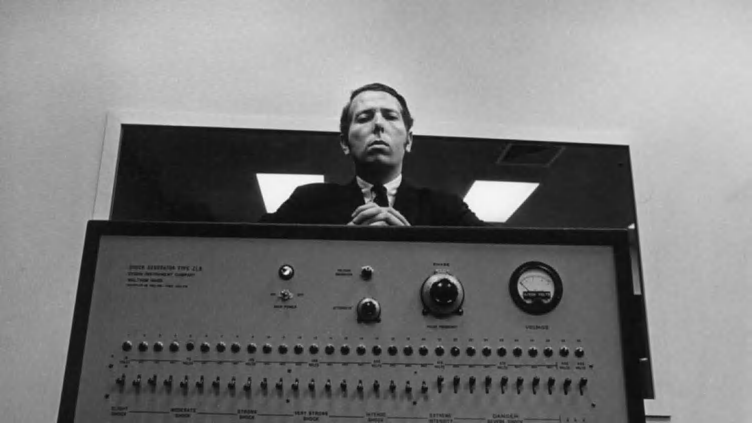
Nowadays, the American Psychological Association has a Code of Conduct in place when it comes to ethics in psychological experiments. Experimenters must adhere to various rules pertaining to everything from confidentiality to consent to overall beneficence. Review boards are in place to enforce these ethics. But the standards were not always so strict, which is how some of the most famous studies in psychology came about.
1. The Little Albert Experiment
At Johns Hopkins University in 1920, John B. Watson conducted a study of classical conditioning, a phenomenon that pairs a conditioned stimulus with an unconditioned stimulus until they produce the same result. This type of conditioning can create a response in a person or animal towards an object or sound that was previously neutral. Classical conditioning is commonly associated with Ivan Pavlov, who rang a bell every time he fed his dog until the mere sound of the bell caused his dog to salivate.
Watson tested classical conditioning on a 9-month-old baby he called Albert B. The young boy started the experiment loving animals, particularly a white rat. Watson started pairing the presence of the rat with the loud sound of a hammer hitting metal. Albert began to develop a fear of the white rat as well as most animals and furry objects. The experiment is considered particularly unethical today because Albert was never desensitized to the phobias that Watson produced in him. (The child died of an unrelated illness at age 6, so doctors were unable to determine if his phobias would have lasted into adulthood.)
2. Asch Conformity Experiments
Solomon Asch tested conformity at Swarthmore College in 1951 by putting a participant in a group of people whose task was to match line lengths. Each individual was expected to announce which of three lines was the closest in length to a reference line. But the participant was placed in a group of actors, who were all told to give the correct answer twice then switch to each saying the same incorrect answer. Asch wanted to see whether the participant would conform and start to give the wrong answer as well, knowing that he would otherwise be a single outlier.
Thirty-seven of the 50 participants agreed with the incorrect group despite physical evidence to the contrary. Asch used deception in his experiment without getting informed consent from his participants, so his study could not be replicated today.
3. The Bystander Effect
Some psychological experiments that were designed to test the bystander effect are considered unethical by today’s standards. In 1968, John Darley and Bibb Latané developed an interest in crime witnesses who did not take action. They were particularly intrigued by the murder of Kitty Genovese , a young woman whose murder was witnessed by many, but still not prevented.
The pair conducted a study at Columbia University in which they would give a participant a survey and leave him alone in a room to fill out the paper. Harmless smoke would start to seep into the room after a short amount of time. The study showed that the solo participant was much faster to report the smoke than participants who had the exact same experience, but were in a group.
The studies became progressively unethical by putting participants at risk of psychological harm. Darley and Latané played a recording of an actor pretending to have a seizure in the headphones of a person, who believed he or she was listening to an actual medical emergency that was taking place down the hall. Again, participants were much quicker to react when they thought they were the sole person who could hear the seizure.
4. The Milgram Experiment
Yale psychologist Stanley Milgram hoped to further understand how so many people came to participate in the cruel acts of the Holocaust. He theorized that people are generally inclined to obey authority figures, posing the question , “Could it be that Eichmann and his million accomplices in the Holocaust were just following orders? Could we call them all accomplices?” In 1961, he began to conduct experiments of obedience.
Participants were under the impression that they were part of a study of memory . Each trial had a pair divided into “teacher” and “learner,” but one person was an actor, so only one was a true participant. The drawing was rigged so that the participant always took the role of “teacher.” The two were moved into separate rooms and the “teacher” was given instructions. He or she pressed a button to shock the “learner” each time an incorrect answer was provided. These shocks would increase in voltage each time. Eventually, the actor would start to complain followed by more and more desperate screaming. Milgram learned that the majority of participants followed orders to continue delivering shocks despite the clear discomfort of the “learner.”
Had the shocks existed and been at the voltage they were labeled, the majority would have actually killed the “learner” in the next room. Having this fact revealed to the participant after the study concluded would be a clear example of psychological harm.
5. Harlow’s Monkey Experiments
In the 1950s, Harry Harlow of the University of Wisconsin tested infant dependency using rhesus monkeys in his experiments rather than human babies. The monkey was removed from its actual mother which was replaced with two “mothers,” one made of cloth and one made of wire. The cloth “mother” served no purpose other than its comforting feel whereas the wire “mother” fed the monkey through a bottle. The monkey spent the majority of his day next to the cloth “mother” and only around one hour a day next to the wire “mother,” despite the association between the wire model and food.
Harlow also used intimidation to prove that the monkey found the cloth “mother” to be superior. He would scare the infants and watch as the monkey ran towards the cloth model. Harlow also conducted experiments which isolated monkeys from other monkeys in order to show that those who did not learn to be part of the group at a young age were unable to assimilate and mate when they got older. Harlow’s experiments ceased in 1985 due to APA rules against the mistreatment of animals as well as humans . However, Department of Psychiatry Chair Ned H. Kalin, M.D. of the University of Wisconsin School of Medicine and Public Health has recently begun similar experiments that involve isolating infant monkeys and exposing them to frightening stimuli. He hopes to discover data on human anxiety, but is meeting with resistance from animal welfare organizations and the general public.
6. Learned Helplessness
The ethics of Martin Seligman’s experiments on learned helplessness would also be called into question today due to his mistreatment of animals. In 1965, Seligman and his team used dogs as subjects to test how one might perceive control. The group would place a dog on one side of a box that was divided in half by a low barrier. Then they would administer a shock, which was avoidable if the dog jumped over the barrier to the other half. Dogs quickly learned how to prevent themselves from being shocked.
Seligman’s group then harnessed a group of dogs and randomly administered shocks, which were completely unavoidable. The next day, these dogs were placed in the box with the barrier. Despite new circumstances that would have allowed them to escape the painful shocks, these dogs did not even try to jump over the barrier; they only cried and did not jump at all, demonstrating learned helplessness.
7. Robbers Cave Experiment
Muzafer Sherif conducted the Robbers Cave Experiment in the summer of 1954, testing group dynamics in the face of conflict. A group of preteen boys were brought to a summer camp, but they did not know that the counselors were actually psychological researchers. The boys were split into two groups, which were kept very separate. The groups only came into contact with each other when they were competing in sporting events or other activities.
The experimenters orchestrated increased tension between the two groups, particularly by keeping competitions close in points. Then, Sherif created problems, such as a water shortage, that would require both teams to unite and work together in order to achieve a goal. After a few of these, the groups became completely undivided and amicable.
Though the experiment seems simple and perhaps harmless, it would still be considered unethical today because Sherif used deception as the boys did not know they were participating in a psychological experiment. Sherif also did not have informed consent from participants.
8. The Monster Study
At the University of Iowa in 1939, Wendell Johnson and his team hoped to discover the cause of stuttering by attempting to turn orphans into stutterers. There were 22 young subjects, 12 of whom were non-stutterers. Half of the group experienced positive teaching whereas the other group dealt with negative reinforcement. The teachers continually told the latter group that they had stutters. No one in either group became stutterers at the end of the experiment, but those who received negative treatment did develop many of the self-esteem problems that stutterers often show. Perhaps Johnson’s interest in this phenomenon had to do with his own stutter as a child , but this study would never pass with a contemporary review board.
Johnson’s reputation as an unethical psychologist has not caused the University of Iowa to remove his name from its Speech and Hearing Clinic .
9. Blue Eyed versus Brown Eyed Students
Jane Elliott was not a psychologist, but she developed one of the most famously controversial exercises in 1968 by dividing students into a blue-eyed group and a brown-eyed group. Elliott was an elementary school teacher in Iowa, who was trying to give her students hands-on experience with discrimination the day after Martin Luther King Jr. was shot, but this exercise still has significance to psychology today. The famous exercise even transformed Elliott’s career into one centered around diversity training.
After dividing the class into groups, Elliott would cite phony scientific research claiming that one group was superior to the other. Throughout the day, the group would be treated as such. Elliott learned that it only took a day for the “superior” group to turn crueler and the “inferior” group to become more insecure. The blue eyed and brown eyed groups then switched so that all students endured the same prejudices.
Elliott’s exercise (which she repeated in 1969 and 1970) received plenty of public backlash, which is probably why it would not be replicated in a psychological experiment or classroom today. The main ethical concerns would be with deception and consent, though some of the original participants still regard the experiment as life-changing .
10. The Stanford Prison Experiment
In 1971, Philip Zimbardo of Stanford University conducted his famous prison experiment, which aimed to examine group behavior and the importance of roles. Zimbardo and his team picked a group of 24 male college students who were considered “healthy,” both physically and psychologically. The men had signed up to participate in a “ psychological study of prison life ,” which would pay them $15 per day. Half were randomly assigned to be prisoners and the other half were assigned to be prison guards. The experiment played out in the basement of the Stanford psychology department where Zimbardo’s team had created a makeshift prison. The experimenters went to great lengths to create a realistic experience for the prisoners, including fake arrests at the participants’ homes.
The prisoners were given a fairly standard introduction to prison life, which included being deloused and assigned an embarrassing uniform. The guards were given vague instructions that they should never be violent with the prisoners, but needed to stay in control. The first day passed without incident, but the prisoners rebelled on the second day by barricading themselves in their cells and ignoring the guards. This behavior shocked the guards and presumably led to the psychological abuse that followed. The guards started separating “good” and “bad” prisoners, and doled out punishments including push ups, solitary confinement, and public humiliation to rebellious prisoners.
Zimbardo explained , “In only a few days, our guards became sadistic and our prisoners became depressed and showed signs of extreme stress.” Two prisoners dropped out of the experiment; one eventually became a psychologist and a consultant for prisons . The experiment was originally supposed to last for two weeks, but it ended early when Zimbardo’s future wife, psychologist Christina Maslach, visited the experiment on the fifth day and told him , “I think it’s terrible what you’re doing to those boys.”
Despite the unethical experiment, Zimbardo is still a working psychologist today. He was even honored by the American Psychological Association with a Gold Medal Award for Life Achievement in the Science of Psychology in 2012 .
Shopping Cart

Articles & Insights
Expand your mind and be inspired with Achology's paradigm-shifting articles. All inspired by the world's greatest minds!
The Dark Side of Psychology: 10 Ethically Dubious Psychology Experiments
By charlotte avery, this article is divided into the following sections:, introduction.
The realm of psychology, with its deep delve into the enigma of the human mind, has been a constant source of intrigue and discovery. Yet, in its quest to unravel the intricacies of human behavior, it has sometimes crossed the lines of ethical conduct. Some experiments, now etched in the annals of psychology, have triggered widespread controversy due to their dubious ethical standards. This article embarks on a journey through ten such psychological experiments that have blurred the lines between scientific pursuit and ethical integrity.
These studies, though significantly contributing to our understanding of human nature, have also sparked intense debates about the moral boundaries within which psychological research should operate. They serve as potent reminders of the delicate balance between the thirst for knowledge and the imperative respect for human rights.
10 Ethically Dubious Psychology Experiments
1. the stanford prison experiment (1971).
One of the most infamous experiments in psychology, the Stanford Prison Experiment was led by psychologist Philip Zimbardo . He recruited college students to play the roles of prisoners and guards in a mock prison. However, the experiment quickly spiraled out of control as the “guards” began to psychologically torment the “prisoners,” leading to severe emotional distress. The study was halted after just six days due to the extreme psychological effects on the participants.
2. The Milgram Experiment (1961)
After the horrors of the Second World War, psychological researchers like Stanley Milgram wondered what made average citizens act like those in Germany who had committed atrocities. Milgram wanted to determine how far people would go carrying out actions that might be detrimental to others if they were ordered or encouraged to do so by an authority figure. The Milgram experiment showed the tension between that obedience to the orders of the authority figure and personal conscience.
In each experiment, Milgram designated three people as either a teacher, learner or experimenter. The “learner” was an actor planted by Milgram and stayed in a room separate from the experimenter and teacher. The teacher attempted to teach the learner how to perform small sets of word associations. When the learner got a pair wrong, the teacher delivered an electric shock to the learner. In reality, there was no shock given. The learner pretended to be in increasingly greater amounts of distress. When some teachers expressed hesitation about increasing the level of shocks, the experimenter encouraged them to do so. Many of the subjects experienced severe psychological distress. The Milgram Conformity Experiment has become the byword for well-intentioned psychological experiments gone wrong.
3. The Little Albert Experiment (1920)
John Watson , the founder of the psychological school of behaviorism, believed that all human behavior was primarily learned. Eager to test his hypothesis, he used an orphan called “Little Albert” as a test subject. He exposed the child to a laboratory rat for several months, which caused no fear response from the boy what-so-ever. Next, at the same time, the child was exposed to the rat, he struck a steel bar with a hammer, scaring the little boy and causing a fear response. By associating the appearance of the rat with the loud noise, Little Albert became afraid of the rat. Naturally, the fear was a condition that needed to be fixed, but the boy left the facility before Watson could remedy things.
4. The Monster Study (1939)
Conducted by Wendell Johnson at the University of Iowa, this study aimed to investigate whether stuttering could be learned. Johnson and his team divided 22 orphan children into two groups – one group received positive speech therapy, praising the fluency of their speech, while the other group received negative speech therapy, criticising every speech imperfection. The latter group developed speech problems, leading to lifelong psychological effects. The experiment earned its nickname “The Monster Study” due to its cruel and unethical methods.

5. Project MK-Ultra (1953-1973)
Project MK-Ultra, also called the CIA mind control program, was a covert operation run by the U.S. Central Intelligence Agency from 1953 to 1973. The project aimed to develop mind control techniques that could be used against enemies during the Cold War. It involved several unethical and non-consensual experiments on human subjects, often involving substances like LSD and other chemicals, hypnosis, sensory deprivation, isolation, verbal and sexual abuse.
The objective was to explore various ways to manipulate people’s mental states and alter brain functions, including the potential to extract information from resistant subjects during interrogation or even create programmed assassins. The project was officially sanctioned in 1953, reduced in scope in 1964, further curtailed in 1967, and officially halted in 1973. The information about MK-Ultra came to public light in 1975 through investigations by the Church Committee and the Rockefeller Commission, and the project became a symbol for illegal and unethical government experiments.
6. The Robbers Cave Experiment (1954)
In this study conducted by Muzafer Sherif, 22 twelve-year-old boys were unknowingly pitted against each other in a summer camp setting. The boys were divided into two separate groups, the Rattlers and the Eagles, and encouraged to compete. The competition escalated into serious conflict, demonstrating how easily ordinary individuals can become adversaries due to group conflict. The experiment raised ethical concerns as the participants were intentionally subjected to psychological stress without their knowledge or consent.
7. The Asch Conformity Experiments (1951)
Solomon Asch conducted a series of studies to investigate the degree to which individuals would conform to a group. Participants were asked to match the length of lines. They were seated with actors who intentionally gave incorrect answers. Surprisingly, a significant number of participants also gave incorrect answers in order to conform to the group. While not as harmful as some others on this list, the experiment was ethically dubious as it involved deception.
8. David Reimer Case (1965-2004)
After a botched circumcision, psychologist John Money suggested that David Reimer be raised as a girl, arguing that gender identity was primarily learned. However, despite being raised as a girl, Reimer struggled with his identity and eventually transitioned back to living as a male in his teens. The case is considered one of psychology’s most compassionless ethically dubious experiments due to the lifelong psychological suffering caused to Reimer, who tragically took his own life in 2004.
9. The Aversion Project (1970s-1980s)
During apartheid in South Africa, the military conducted what came to be known as The Aversion Project. Gay soldiers were forced to undergo “aversion therapy” to “cure” them of their homosexuality. This included administering electric shocks while showing the soldiers homosexual pornography. The project is widely criticized for its gross violation of human rights and unethical treatment of individuals based on their sexual orientation.
10. The Third Wave Experiment (1967)
High school teacher Ron Jones conducted this experiment to demonstrate how the German populace could accept the actions of the Nazi regime during the Second World War. He created a movement called “The Third Wave” and implemented strict rules and salutes in his classroom. Within days, the movement spread throughout the school, with students policing each other. The experiment ended after five days when students began to take the movement too seriously. The lack of informed consent and the potential psychological effects on the students raised serious ethical questions.
These experiments, while providing valuable insights into human behavior, underscore the necessity of ethical guidelines in psychological research. They serve as reminders of the potential harm that can occur when the pursuit of knowledge outweighs the respect for human dignity and rights.
The Ethical Paradoxes in Psychology’s Past
Reflecting on these 10 ethically dubious psychological experiments, we are confronted with a paradox. Each study, despite its ethical shortcomings, has contributed significantly to our understanding of human behavior and thought. They have provided valuable insights into conformity, obedience, group dynamics, and even the nature of evil. Yet, the cost at which these insights were obtained is profoundly unsettling.
These experiments serve as stark reminders of the potential for harm when the pursuit of knowledge supersedes the respect for human dignity and rights. They underscore the vital importance of ethical oversight in research, ensuring that the quest for understanding never compromises the wellbeing of individuals involved.
In scrutinising these studies, we do not merely expose psychology’s darker past but also illuminate the path forward. They act as cautionary tales, guiding current and future researchers to conduct their work with the utmost regard for ethics. As we continue to delve into the mysteries of the human mind , let these experiments serve as our moral compass, reminding us that the ends do not always justify the means, especially when it comes to the sanctity of human life.

Browse Achology Quotes:

► Book Recommendation of the Month
The ultimate life coaching handbook by kain ramsay.
A Comprehensive Guide to the Methodology, Principles and practice of Life Coaching
Misconceptions and industry shortcomings make life coaching frequently misunderstood, as many so-called coaches fail to achieve real results. The lack of wise guidance further fuels this widespread skepticism and distrust.

Get updates from the Academy of Modern Applied Psychology

About Achology
Useful links, our policies, our 7 schools, connect with us, © 2024 achology.
There was a problem reporting this post.
Block Member?
Please confirm you want to block this member.
You will no longer be able to:
- Mention this member in posts
Please allow a few minutes for this process to complete.

We've updated our Privacy Policy to make it clearer how we use your personal data. We use cookies to provide you with a better experience. You can read our Cookie Policy here.
Neuroscience News & Research
Stay up to date on the topics that matter to you
Three Psychology Experiments That Pushed the Limit of Ethics

Complete the form below to unlock access to ALL audio articles.
Last month, a team of volunteers emerged from 40 days of isolation in the Lombrives cave in south-west France. This ordeal was part of a scientific study called the Deep Time experiment. The volunteers were tasked with going without sunlight, phones or clocks for the duration of the experiment. The study aimed to understand how the human brain would be affected as it lost its grasp on time and space. Putting human subjects, even volunteers, through this might seem ethically dubious, but pales in comparison to the questions raised by these three studies.
The ultimate isolation: Hebb’s “pathological boredom”

In 2008, the BBC attempted to re-enact Hebb's experiments. Credit: BBC Horizon
Hebb and his team wanted to see how this environment, one that wasn’t entirely devoid of sensory information, but that was incredibly monotonous and boring, would affect the volunteers. Initially, the participants, who were all university students, thought about their results, or the papers they had due. But after a while, their minds instead drifted onto memories from their childhood. Eventually, most of the participants reported that they became unable to think about anything for any length of time. These details were reported by Hebb’s collaborator Woodburn Heron in an article published in Scientific American . The subjects also showed impaired mental performance, registering lower results on tests of mental arithmetic and word association. Most strikingly of all, the subjects reported that, despite their complete absence of sensory stimulation, they experienced an array of hallucinations, including one participant who saw endless images of babies. These hallucinations, which Heron compared to the effects of the hallucinogenic drug mescaline, grew in complexity over time – one participant eventually reported “a procession of squirrels with sacks over their shoulders marching ‘purposefully’across the visual field.” The hallucinations were accompanied by sounds and even sensations across the volunteers’ bodies. Summing up these weird and distressing effects, Heron concluded that “a changing sensory environment seems essential for human beings.”
How malleable is our willpower?
The facebook study: how contagious are emotions.

Credit: Pixabay
This study started huge controversy when it was ascertained that the only consent Facebook sought was signing up for the platform. Facebook's Data Use Policy, the company said, gave them all the permission they needed to play around with users’ feeds. Whilst these findings were interesting, the ethically dubious way in which the study was conducted makes for uncomfortable reading. The ethical quandaries involved, and the reasons why the study was able to bypass certain regulations, were summed up by bioethicist Michelle N. Meyer in an article for WIRED .


The 10 Most Controversial Psychology Studies Ever Published
Controversy is essential to scientific progress - here we digest ten of the most controversial studies in psychology’s history.
19 September 2014
By Christian Jarrett
Controversy is essential to scientific progress. As Richard Feynman said, "science is the belief in the ignorance of experts." Nothing is taken on faith, all assumptions are open to further scrutiny. It's a healthy sign therefore that psychology studies continue to generate great controversy. Often the heat is created by arguments about the logic or ethics of the methods, other times it's because of disagreements about the implications of the findings to our understanding of human nature. Here we digest ten of the most controversial studies in psychology's history. Please use the comments to have your say on these controversies, or to highlight provocative studies that you think should have made it onto our list.
The Stanford Prison Experiment
Conducted in 1971, Philip Zimbardo's experiment had to be aborted when students allocated to the role of prison guards began abusing students who were acting as prisoners. Zimbardo interpreted the events as showing that certain situations inevitably turn good people bad, a theoretical stance he later applied to the acts of abuse that occurred at the Abu Ghraib prison camp in Iraq from 2003 to 2004. This situationist interpretation has been challenged , most forcibly by the British psychologists Steve Reicher and Alex Haslam. The pair argue, on the basis of their own BBC Prison study and real-life instances of prisoner resistance, that people do not yield mindlessly to toxic environments. Rather, in any situation, power resides in the group that manages to establish a sense of shared identity. Critics also point out that Zimbardo led and inspired his abusive prison guards; that the Stanford Prison Experiment (SPE) may have attracted particular personality types; and that many guards did behave appropriately. The debate continues, as does the influence of the SPE on popular culture, so far inspiring at least two feature length movies .
Further reading
Zimbardo, P. G. (1972). Comment: Pathology of imprisonment . Society, 9(6), 4-8.
Haney, C., Banks, W. C., & Zimbardo, P. G. (1973). Study of prisoners and guards in a simulated prison . Naval Research Reviews, 9(1-17).
The Milgram "Shock Experiments"
Stanley Milgram's studies conducted in the 1960s appeared to show that many people are incredibly obedient to authority. Given the instruction from a scientist, many participants applied what they thought were deadly levels of electricity to an innocent person. Not one study, but several, Milgram's research has inspired many imitations, including in virtual reality and in the form of a French TV show . The original studies have attracted huge controversy , not only because of their ethically dubious nature, but also because of the way they have been interpreted and used to explain historical events such as the supposedly blind obedience to authority in the Nazi era. Haslam and Reicher have again been at the forefront of counter-arguments. Most recently, based on archived feedback from Milgram's participants, the pair argue that the observed obedience was far from blind – in fact many participants were pleased to have taken part, so convinced were they that their efforts were making an important contribution to science. It's also notable that many participants in fact disobeyed instructions, and in such cases, verbal prompts from the scientist were largely ineffective .
Milgram, S. (1963). Behavioral study of obedience . The Journal of Abnormal and Social Psychology, 67(4), 371.
The "Elderly-related Words Provoke Slow Walking" Experiment (and other social priming research)
One of the experiments in a 1996 paper published by John Bargh and colleagues showed that when people were exposed to words that pertained to being old, they subsequently walked away from the lab more slowly. This finding is just one of many in the field of "social priming" research, all of which suggest our minds are far more open to influence than we realise. In 2012, a different lab tried to replicate the elderly words study and failed. Professor Bargh reacted angrily . Ever since, the controversy over his study and other related findings has only intensified. Highlights of the furore include an open letter from Nobel Laureate Daniel Kahneman to researchers working in the area, and a mass replication attempt of several studies in social psychology, including social priming effects. Much of the disagreement centres around whether replication attempts in this area fail because the original effects don't exist, or because those attempting a replication lack the necessary research skills, make statistical errors, or fail to perfectly match the original research design.
Bargh, J. A., Chen, M., & Burrows, L. (1996). Automaticity of social behavior: Direct effects of trait construct and stereotype activation on action . Journal of personality and social psychology, 71(2), 230.
The Conditioning of Little Albert
Back in 1920 John Watson and his future wife Rosalie Rayner deliberately induced fears in an 11-month-old baby. They did this by exposing him to a particular animal, such as a white rat, at the same time as banging a steel bar behind his head. The research is controversial not just because it seems so unethical, but also because the results have tended to be reported in an inaccurate and overly simplified way . Many textbooks claim the study shows how fears are easily conditioned and generalised to similar stimuli; they say that after being conditioned to fear a white rat, Little Albert subsequently feared all things that were white and fluffy. In fact, the results were far messier and more inconsistent than that, and the methodology was poorly controlled. Over the last few years, controversy has also developed around the identity of poor Little Albert. In 2009, a team led by Hall Beck claimed that the baby was in fact Douglas Merritte. They later claimed that Merritte was neurologically impaired, which if true would only add to the unethical nature of the original research. However, a new paper published this year by Ben Harris and colleagues argues that Little Albert was actually a child known as Albert Barger.
Watson, J. B., & Rayner, R. (1920). Conditioned emotional reactions . Journal of Experimental Psychology, 3(1), 1.
Loftus' "Lost in The Mall" Study
In 1995 and ' 96 , Elizabeth Loftus , James Coan and Jacqueline Pickrell documented how easy it was to implant in people a fictitious memory of having been lost in a shopping mall as a child. The false childhood event is simply described to a participant alongside true events, and over a few interviews it soon becomes absorbed into the person's true memories, so that they think the experience really happened. The research and other related findings became hugely controversial because they showed how unreliable and suggestible memory can be. In particular, this cast doubt on so-called "recovered memories" of abuse that originated during sessions of psychotherapy. This is a highly sensitive area and experts continue to debate the nature of false memories, repression and recovered memories . One challenge to the "lost in the mall" study was that participants may really have had the childhood experience of having been lost, in which case Loftus' methodology was recovering lost memories of the incident rather than implanting false memories. This criticism was refuted in a later study ( pdf ) in which Loftus and her colleagues implanted in people the memory of having met Bugs Bunny at Disneyland. Cartoon aficionados will understand why this memory was definitely false.
Loftus, E. F., & Pickrell, J. E. (1995). The formation of false memories . Psychiatric annals, 25(12), 720-725.
Loftus, E. F., Coan, J. A., & Pickrell, J. E. (1996). Manufacturing false memories using bits of reality. Implicit memory and metacognition, 195-220.
Loftus, E. F. (1993). The reality of repressed memories . American psychologist, 48(5), 518.
The Daryl Bem Pre-cognition Study
In 2010 social psychologist Daryl Bem attracted huge attention when he claimed to have shown that many established psychological phenomena work backwards in time. For instance, in one of his experiments, he found that people performed better at a memory task for words they revised in the future. Bem interpreted this as evidence for pre-cognition, or psi – that is, effects that can't be explained by current scientific understanding. Superficially at least, Bem's methodology appeared robust, and he took the laudable step of making his procedures readily available to other researchers. However, many experts have since criticised Bem's methods and statistical analyses ( pdf ), and many replication attempts have failed to support the original findings .
Further controversy came from the the fact that the journal that published Bem's results refused at first to publish any replication attempts. This prompted uproar in the research community and contributed to what's become known as the " replication crisis " or "replication wars" in psychology. Unabashed, Bem published a meta-analysis this year (an analysis that collated results from 90 attempts to replicate his 2010 findings) and he concluded that overall there was solid support for his earlier work. Where will this controversy head next? If Bem's right, you probably know the answer already.
Bem, D. J. (2011). Feeling the future: experimental evidence for anomalous retroactive influences on cognition and affect . Journal of personality and social psychology, 100(3), 407.
The Voodoo Correlations in Social Neuroscience study
This paper was released online before print, where it initially bore the provocative title "Voodoo correlations in social neuroscience". Voodoo in this sense meant non-existent or spurious. Ed Vul and his colleagues had analysed over 50 studies that linked localised patterns of brain activity with specific aspects of behaviour or emotion, such as one that reported feelings of rejection were correlated highly with activity in the anterior cingulate cortex. Vul and his team said the high correlations reported in these papers were due to the use of inappropriate analyses – a form of "double-dipping" in which researchers took two or more steps: first identifying a region, or even a single voxel, linked with a certain behaviour, and then performing further analyses on just that area. The paper caused great offence to the many brain imaging researchers in social neuroscience whose work had been targeted. "Several of [Vul et al's] conclusions are incorrect due to flawed reasoning, statistical errors, and sampling anomalies," said the authors of one rebuttal paper . However, concerns about the statistical analyses used in imaging neuroscience haven't gone away. For example, in 2012 Joshua Carp wrote a paper claiming that most imaging papers fail to provide enough methodological detail to allow others to attempt replications.
Vul, E., Harris, C., Winkielman, P., & Pashler, H. (2009). Puzzlingly high correlations in fMRI studies of emotion, personality, and social cognition . Perspectives on psychological science, 4(3), 274-290.
The Kirsch Anti-Depressant Placebo Effect Study
In 2008 Irving Kirsch, a psychologist who was then based at the University of Hull in the UK, analysed all the trial data on anti-depressants, published and unpublished, submitted to the US Food and Drug Administration. He and his colleagues concluded that for most people with mild or moderate depression, the extra benefit of anti-depressants versus placebo is not clinically meaningful. The results led to headlines like "Depression drugs don't work" and provided ammunition for people concerned with the overprescription of antidepressant medication. But there was also a backlash. Other experts analysed Kirsch's dataset using different methods and came to different conclusions . Another group made similar findings to Kirsch, but interpreted them very differently – as showing that drugs are more effective than placebo. Kirsch is standing his ground. Writing earlier this year, he said : "Instead of curing depression, popular antidepressants may induce a biological vulnerability making people more likely to become depressed in the future."
Kirsch, I., Deacon, B. J., Huedo-Medina, T. B., Scoboria, A., Moore, T. J., & Johnson, B. T. (2008). Initial severity and antidepressant benefits: a meta-analysis of data submitted to the Food and Drug Administration . PLoS medicine, 5(2), e45.
Judith Rich Harris and the "Nurture Assumption"
You could fill a library or two with all the books that have been published on how to be a better parent. The implicit assumption, of course, is that parents play a profound role in shaping their offspring. Judith Rich Harris challenged this idea with a provocative paper published in 1995 in which she proposed that children are shaped principally by their peer groups and their experiences outside of the home. She followed this up with two best-selling books: The Nurture Assumption and No Two Alike .
Writing for the BPS Research Digest in 2007 , Harris described some of the evidence that supports her claims: "identical twins reared by different parents are (on average) as similar in personality as those reared by the same parents … adoptive siblings reared by the same parents are as dissimilar as those reared by different parents … [and] … children reared by immigrant parents have the personality characteristics of the country they were reared in, rather than those of their parents' native land."
Harris has powerful supporters, Steven Pinker among them, but her ideas also unleashed a storm of controversy and criticism. " I am embarrassed for psychology ," Jerome Kagan told Newsweek after the publication of Harris' Nurture Assumption.
Harris, J. R. (1995). Where is the child's environment? A group socialization theory of development . Psychological review, 102(3), 458.
Libet's Challenge to Free Will
Your decisions feel like your own, but Benjamin Libet's study using electroencephalography (EEG) appeared to show that preparatory brain activity precedes your conscious decisions of when to move. One controversial interpretation is that this challenges the notion that you have free will. The decision of when to move is made non-consciously, so the argument goes, and then your subjective sense of having willed that act is tagged on afterwards. Libet's study and others like it have inspired deep philosophical debate. Some philosophers like Daniel Dennett believe that neuroscientists have overstated the implications of these kinds of findings for people's conception of free will. Other researchers have pointed out flaws in Libet's research, such as people's inaccuracy in judging the instant of their own will. However, the principle of non-conscious neural activity preceding conscious will has been replicated using fMRI , and influential neuroscientists like Sam Harris continue to argue that Libet's work undermines the idea of free will.
Libet, B., Gleason, C. A., Wright, E. W., & Pearl, D. K. (1983). Time of conscious intention to act in relation to onset of cerebral activity (readiness-potential) the unconscious initiation of a freely voluntary act . Brain, 106(3), 623-642.
Related articles

30 July 2015
- Methods and statistics

26 March 2015
- Ethics and morality

27 November 2015
- BPS updates
- Bipolar Disorder
- Therapy Center
- When To See a Therapist
- Types of Therapy
- Best Online Therapy
- Best Couples Therapy
- Managing Stress
- Sleep and Dreaming
- Understanding Emotions
- Self-Improvement
- Healthy Relationships
- Student Resources
- Personality Types
- Sweepstakes
- Guided Meditations
- Verywell Mind Insights
- 2024 Verywell Mind 25
- Mental Health in the Classroom
- Editorial Process
- Meet Our Review Board
- Crisis Support
Understanding the Milgram Experiment in Psychology
A closer look at Milgram's controversial studies of obedience
Isabelle Adam (CC BY-NC-ND 2.0) via Flickr
Factors That Influence Obedience
- Ethical Concerns
- Replications
How far do you think people would go to obey an authority figure? Would they refuse to obey if the order went against their values or social expectations? Those questions were at the heart of an infamous and controversial study known as the Milgram obedience experiments.
Yale University psychologist Stanley Milgram conducted these experiments during the 1960s. They explored the effects of authority on obedience. In the experiments, an authority figure ordered participants to deliver what they believed were dangerous electrical shocks to another person. These results suggested that people are highly influenced by authority and highly obedient . More recent investigations cast doubt on some of the implications of Milgram's findings and even the results and procedures themselves. Despite its problems, the study has, without question, made a significant impact on psychology .
At a Glance
Milgram's experiments posed the question: Would people obey orders, even if they believed doing so would harm another person? Milgram's findings suggested the answer was yes, they would. The experiments have long been controversial, both because of the startling findings and the ethical problems with the research. More recently, experts have re-examined the studies, suggesting that participants were often coerced into obeying and that at least some participants recognized that the other person was just pretending to be shocked. Such findings call into question the study's validity and authenticity, but some replications suggest that people are surprisingly prone to obeying authority.
History of the Milgram Experiments
Milgram started his experiments in 1961, shortly after the trial of the World War II criminal Adolf Eichmann had begun. Eichmann’s defense that he was merely following instructions when he ordered the deaths of millions of Jews roused Milgram’s interest.
In his 1974 book "Obedience to Authority," Milgram posed the question, "Could it be that Eichmann and his million accomplices in the Holocaust were just following orders? Could we call them all accomplices?"
Procedure in the Milgram Experiment
The participants in the most famous variation of the Milgram experiment were 40 men recruited using newspaper ads. In exchange for their participation, each person was paid $4.50.
Milgram developed an intimidating shock generator, with shock levels starting at 15 volts and increasing in 15-volt increments all the way up to 450 volts. The many switches were labeled with terms including "slight shock," "moderate shock," and "danger: severe shock." The final three switches were labeled simply with an ominous "XXX."
Each participant took the role of a "teacher" who would then deliver a shock to the "student" in a neighboring room whenever an incorrect answer was given. While participants believed that they were delivering real shocks to the student, the “student” was a confederate in the experiment who was only pretending to be shocked.
As the experiment progressed, the participant would hear the learner plead to be released or even complain about a heart condition. Once they reached the 300-volt level, the learner would bang on the wall and demand to be released.
Beyond this point, the learner became completely silent and refused to answer any more questions. The experimenter then instructed the participant to treat this silence as an incorrect response and deliver a further shock.
Most participants asked the experimenter whether they should continue. The experimenter then responded with a series of commands to prod the participant along:
- "Please continue."
- "The experiment requires that you continue."
- "It is absolutely essential that you continue."
- "You have no other choice; you must go on."
Results of the Milgram Experiment
In the Milgram experiment, obedience was measured by the level of shock that the participant was willing to deliver. While many of the subjects became extremely agitated, distraught, and angry at the experimenter, they nevertheless continued to follow orders all the way to the end.
Milgram's results showed that 65% of the participants in the study delivered the maximum shocks. Of the 40 participants in the study, 26 delivered the maximum shocks, while 14 stopped before reaching the highest levels.
Why did so many of the participants in this experiment perform a seemingly brutal act when instructed by an authority figure? According to Milgram, there are some situational factors that can explain such high levels of obedience:
- The physical presence of an authority figure dramatically increased compliance .
- The fact that Yale (a trusted and authoritative academic institution) sponsored the study led many participants to believe that the experiment must be safe.
- The selection of teacher and learner status seemed random.
- Participants assumed that the experimenter was a competent expert.
- The shocks were said to be painful, not dangerous.
Later experiments conducted by Milgram indicated that the presence of rebellious peers dramatically reduced obedience levels. When other people refused to go along with the experimenter's orders, 36 out of 40 participants refused to deliver the maximum shocks.
More recent work by researchers suggests that while people do tend to obey authority figures, the process is not necessarily as cut-and-dried as Milgram depicted it.
In a 2012 essay published in PLoS Biology , researchers suggested that the degree to which people are willing to obey the questionable orders of an authority figure depends largely on two key factors:
- How much the individual agrees with the orders
- How much they identify with the person giving the orders
While it is clear that people are often far more susceptible to influence, persuasion , and obedience than they would often like to be, they are far from mindless machines just taking orders.
Another study that analyzed Milgram's results concluded that eight factors influenced the likelihood that people would progress up to the 450-volt shock:
- The experimenter's directiveness
- Legitimacy and consistency
- Group pressure to disobey
- Indirectness of proximity
- Intimacy of the relation between the teacher and learner
- Distance between the teacher and learner
Ethical Concerns in the Milgram Experiment
Milgram's experiments have long been the source of considerable criticism and controversy. From the get-go, the ethics of his experiments were highly dubious. Participants were subjected to significant psychological and emotional distress.
Some of the major ethical issues in the experiment were related to:
- The use of deception
- The lack of protection for the participants who were involved
- Pressure from the experimenter to continue even after asking to stop, interfering with participants' right to withdraw
Due to concerns about the amount of anxiety experienced by many of the participants, everyone was supposedly debriefed at the end of the experiment. The researchers reported that they explained the procedures and the use of deception.
Critics of the study have argued that many of the participants were still confused about the exact nature of the experiment, and recent findings suggest that many participants were not debriefed at all.
Replications of the Milgram Experiment
While Milgram’s research raised serious ethical questions about the use of human subjects in psychology experiments , his results have also been consistently replicated in further experiments. One review further research on obedience and found that Milgram’s findings hold true in other experiments. In one study, researchers conducted a study designed to replicate Milgram's classic obedience experiment. The researchers made several alterations to Milgram's experiment.
- The maximum shock level was 150 volts as opposed to the original 450 volts.
- Participants were also carefully screened to eliminate those who might experience adverse reactions to the experiment.
The results of the new experiment revealed that participants obeyed at roughly the same rate that they did when Milgram conducted his original study more than 40 years ago.
Some psychologists suggested that in spite of the changes made in the replication, the study still had merit and could be used to further explore some of the situational factors that also influenced the results of Milgram's study. But other psychologists suggested that the replication was too dissimilar to Milgram's original study to draw any meaningful comparisons.
One study examined people's beliefs about how they would do compared to the participants in Milgram's experiments. They found that most people believed they would stop sooner than the average participants. These findings applied to both those who had never heard of Milgram's experiments and those who were familiar with them. In fact, those who knew about Milgram's experiments actually believed that they would stop even sooner than other people.
Another novel replication involved recruiting participants in pairs and having them take turns acting as either an 'agent' or 'victim.' Agents then received orders to shock the victim. The results suggest that only around 3.3% disobeyed the experimenter's orders.
Recent Criticisms and New Findings
Psychologist Gina Perry suggests that much of what we think we know about Milgram's famous experiments is only part of the story. While researching an article on the topic, she stumbled across hundreds of audiotapes found in Yale archives that documented numerous variations of Milgram's shock experiments.
Participants Were Often Coerced
While Milgram's reports of his process report methodical and uniform procedures, the audiotapes reveal something different. During the experimental sessions, the experimenters often went off-script and coerced the subjects into continuing the shocks.
"The slavish obedience to authority we have come to associate with Milgram’s experiments comes to sound much more like bullying and coercion when you listen to these recordings," Perry suggested in an article for Discover Magazine .
Few Participants Were Really Debriefed
Milgram suggested that the subjects were "de-hoaxed" after the experiments. He claimed he later surveyed the participants and found that 84% were glad to have participated, while only 1% regretted their involvement.
However, Perry's findings revealed that of the 700 or so people who took part in different variations of his studies between 1961 and 1962, very few were truly debriefed.
A true debriefing would have involved explaining that the shocks weren't real and that the other person was not injured. Instead, Milgram's sessions were mainly focused on calming the subjects down before sending them on their way.
Many participants left the experiment in a state of considerable distress. While the truth was revealed to some months or even years later, many were simply never told a thing.
Variations Led to Differing Results
Another problem is that the version of the study presented by Milgram and the one that's most often retold does not tell the whole story. The statistic that 65% of people obeyed orders applied only to one variation of the experiment, in which 26 out of 40 subjects obeyed.
In other variations, far fewer people were willing to follow the experimenters' orders, and in some versions of the study, not a single participant obeyed.
Participants Guessed the Learner Was Faking
Perry even tracked down some of the people who took part in the experiments, as well as Milgram's research assistants. What she discovered is that many of his subjects had deduced what Milgram's intent was and knew that the "learner" was merely pretending.
Such findings cast Milgram's results in a new light. It suggests that not only did Milgram intentionally engage in some hefty misdirection to obtain the results he wanted but that many of his participants were simply playing along.
An analysis of an unpublished study by Milgram's assistant, Taketo Murata, found that participants who believed they were really delivering a shock were less likely to obey, while those who did not believe they were actually inflicting pain were more willing to obey. In other words, the perception of pain increased defiance, while skepticism of pain increased obedience.
A review of Milgram's research materials suggests that the experiments exerted more pressure to obey than the original results suggested. Other variations of the experiment revealed much lower rates of obedience, and many of the participants actually altered their behavior when they guessed the true nature of the experiment.
Impact of the Milgram Experiment
Since there is no way to truly replicate the experiment due to its serious ethical and moral problems, determining whether Milgram's experiment really tells us anything about the power of obedience is impossible to determine.
So why does Milgram's experiment maintain such a powerful hold on our imaginations, even decades after the fact? Perry believes that despite all its ethical issues and the problem of never truly being able to replicate Milgram's procedures, the study has taken on the role of what she calls a "powerful parable."
Milgram's work might not hold the answers to what makes people obey or even the degree to which they truly obey. It has, however, inspired other researchers to explore what makes people follow orders and, perhaps more importantly, what leads them to question authority.
Recent findings undermine the scientific validity of the study. Milgram's work is also not truly replicable due to its ethical problems. However, the study has led to additional research on how situational factors can affect obedience to authority.
Milgram’s experiment has become a classic in psychology , demonstrating the dangers of obedience. The research suggests that situational variables have a stronger sway than personality factors in determining whether people will obey an authority figure. However, other psychologists argue that both external and internal factors heavily influence obedience, such as personal beliefs and overall temperament.
Milgram S. Obedience to Authority: An Experimental View. Harper & Row.
Russell N, Gregory R. The Milgram-Holocaust linkage: challenging the present consensus . State Crim J. 2015;4(2):128-153.
Russell NJC. Milgram's obedience to authority experiments: origins and early evolution . Br J Soc Psychol . 2011;50:140-162. doi:10.1348/014466610X492205
Haslam SA, Reicher SD. Contesting the "nature" of conformity: What Milgram and Zimbardo's studies really show . PLoS Biol. 2012;10(11):e1001426. doi:10.1371/journal.pbio.1001426
Milgram S. Liberating effects of group pressure . J Person Soc Psychol. 1965;1(2):127-234. doi:10.1037/h0021650
Haslam N, Loughnan S, Perry G. Meta-Milgram: an empirical synthesis of the obedience experiments . PLoS One . 2014;9(4):e93927. doi:10.1371/journal.pone.0093927
Perry G. Deception and illusion in Milgram's accounts of the obedience experiments . Theory Appl Ethics . 2013;2(2):79-92.
Blass T. The Milgram paradigm after 35 years: some things we now know about obedience to authority . J Appl Soc Psychol. 1999;29(5):955-978. doi:10.1111/j.1559-1816.1999.tb00134.x
Burger J. Replicating Milgram: Would people still obey today? . Am Psychol . 2009;64(1):1-11. doi:10.1037/a0010932
Elms AC. Obedience lite . American Psychologist . 2009;64(1):32-36. doi:10.1037/a0014473
Miller AG. Reflections on “replicating Milgram” (Burger, 2009) . American Psychologist . 2009;64(1):20-27. doi:10.1037/a0014407
Grzyb T, Dolinski D. Beliefs about obedience levels in studies conducted within the Milgram paradigm: Better than average effect and comparisons of typical behaviors by residents of various nations . Front Psychol . 2017;8:1632. doi:10.3389/fpsyg.2017.01632
Caspar EA. A novel experimental approach to study disobedience to authority . Sci Rep . 2021;11(1):22927. doi:10.1038/s41598-021-02334-8
Haslam SA, Reicher SD, Millard K, McDonald R. ‘Happy to have been of service’: The Yale archive as a window into the engaged followership of participants in Milgram’s ‘obedience’ experiments . Br J Soc Psychol . 2015;54:55-83. doi:10.1111/bjso.12074
Perry G, Brannigan A, Wanner RA, Stam H. Credibility and incredulity in Milgram’s obedience experiments: A reanalysis of an unpublished test . Soc Psychol Q . 2020;83(1):88-106. doi:10.1177/0190272519861952
By Kendra Cherry, MSEd Kendra Cherry, MS, is a psychosocial rehabilitation specialist, psychology educator, and author of the "Everything Psychology Book."
11+ most controversial psychological experiments in history
Here is a glimpse at some of the most controversial, unethical psychological experiments in history..
Kashyap Vyas

Scientific experimentation is a staple of human progress. Academic researchers are usually required to abide by rules and regulations governing the ethics of conducting studies. However, there has always been a very small number of researchers that have moved far beyond what many consider ethical.
Today, there are strict rules that must be followed when conducting such psychological experiments. For example, the American Psychological Association (APA) has a binding Code of Conduct that must be followed when conducting any kind of experiment. Experimenters are bound to adhere to everything from consent to confidentiality of the experiments.
Moreover, there are review boards and panels that are in charge of reinforcing these strict ethics. Having said that, the norms were not always this stern. That is precisely how some of the following controversial psychological experiments came to be conducted.
1. The Facebook experiment

hocus- focus/iStock
The Facebook Experiment of 2012 created quite an uproar amongst indignant users. Nearly 700,000 Facebook users were subjected to secret psychological tests to gauge the effects of different types of posts.
The details of the experiment came out in a scientific paper published in the Proceedings of the National Academy of Sciences . The paper revealed that, unbeknownst to users, Facebook had tampered with the news feeds of nearly 700,000 people, showing them an abnormally low number of either positive or negative posts. The experiment aimed to determine whether the company could alter the emotional state of its users.
The experiment was designed to determine whether the number of positive or negative comments in a Facebook newsfeed would have any effect on how the user updated their own page.
News of the research led to outrage from people who felt they had been secretly manipulated by the company.
The researchers revealed that social media users were prone to “emotional contagion” in which they mimicked the type of content of others who posted on their feed. For example, those shown more negative comments posted more negative comments themselves.
Although the results were interesting, Facebook suffered a storm of criticism , with many referring to the social media platform as “terrifying” and “creepy.” The ethics of the experiment have since been debated heavily.
2. The O peration Midnight Climax
The US Military and CIA have an extensive history of conducting unusual psychological experiments.
One research project, dubbed Operation Midnight Climax, was conducted in the 1950s under the direction of Allen Dulles, the CIA Director at the time. It was a part of Project MKULTRA, the controversial series of experiments aimed at developing mind control techniques.
This operation was conducted with the motive of exploring the use of “mind-control” drugs and testing the effects of psychoactive drugs like LSD on individuals.
Unknowingly, clients were lured to CIA-run brothels by CIA-paid prostitutes, and psychoactive substances such as LSD were slipped into their drinks. These individuals were then monitored from behind a two-way mirror while they engaged in sexual activities.
The project’s activities expanded over the years to test other agents, such as stink bombs and heroin, on many unsuspecting people. The brothels were also popular with agents, who used them for “quickies.”
The agency shut down MKULTRA in the late 1960s after the CIA’s inspector general’s office discovered the experiments . However, two related programs, MKSEARCH and Project OFTEN, continued until 1972 and 1973, respectively.
3. The Aversion Project
The South African Aversion Project was yet another unethical psychology experiment that was conducted on people. Apartheid South Africa was an extremely dangerous place for homosexuals — both black and white. During that time, the government had strict anti-homosexual laws. Being gay was defined as abnormal and homosexuality was considered a mental illness. As a result, aversion therapies and techniques were applied to many South Africans to “cure” them of this illness.
Homosexuals were also often forced to join the military against their will. The Aversion Project mainly consisted of drugging lesbians and gay men, after which they were shown photos of same-sex erotica as they were subjected to electroconvulsive behavior therapy.
Thereafter, they were electrically shocked, and they were shown pictures of the opposite sex erotica. The technique obviously did not work, and the victims were then subjected to hormone therapy.
In some cases, this therapy also included chemical castration. Moreover, more than 900 men and women were forced to undergo a gender reassignment surgery to reorient them, without their consent, of course.
4. Unnecessary sexual reassignment experiments

One tragic case came about as the result of poor decisions made after a surgical accident, when a seven-month-old Canadian boy was “accidentally castrated” while undergoing a routine circumcision.
After the penis of David Peter Reimer was accidentally maimed, a psychologist convinced his parents that the boy was more likely to successfully reach sexual maturation if he underwent sexual reassignment surgery as a female.
The psychologist, John Money, reported the reassignment was successful and used it as evidence that gender identity is primarily learned. However, as Reimer grew older, he came to realize that he was not a girl and at the age of 15, he transitioned to living as a male. Reimer eventually went public with his story to help discourage similar medical practices and the resulting furor changed medical practices in similar cases. Reimer killed himself at the age of 38, after suffering severe depression.
5. The Milgram Experiments

A psychologist from Yale University named Stanley Milgram conducted one of the most notorious studies on obedience.
His psychological experiment consisted of analyzing the conflict between personal conscience and obedience to authority. In 1963, Milgram examined justifications that were offered by people accused of performing acts of genocide during World War II .
More often than not, they offered a defense based on the notion of “obedience” and argued that they were merely following their superior’s orders. Therefore, Milgram wanted to examine whether the Germans were somehow naturally obedient, or if there was another reason behind the cruelty.
Based on this experiment, Milgram chose participants through newspaper advertising, urging them to participate in a study at Yale University.
Each participant was then paired with another participant. One was the “learner”, and the other was the “teacher”. In each case, the learner was actually a confederate of Milgram who was pretending to be an actual participant.
The learner was taken to one room and the teacher was taken to the other. The teacher’s room consisted of an electric shock device, along with a row of switches labeled from 15 volts to 450 volts.
The aim of the experiment was to research exactly how far people were willing to go in order to obey an instruction, even if that entailed harming another person. The teacher was instructed to “shock” the student with increasingly high voltages. However, unbeknownst to the teacher, the switches were not real and the learner was faking their reaction. The fake electric shocks gradually increased to levels that would have been fatal had they been real.
The experiment found, unexpectedly, that a very high proportion of subjects would fully obey the instructions, albeit reluctantly.
6. The Stanford Prison Experiment

Eric. E Castro/Wikimedia
The SPE experiment was conducted in 1971 at Stanford University. It was one of the most compelling psychological studies and has become particularly notorious.
In the study, participants were assigned as either guards or inmates in a mock prison at the university.
The premise of the experiment was that when people are given a certain amount of power over others, they will eventually start to abuse that power. On the flip side, people who are put in a powerless situation will often be driven to submission or even madness.
The experiment found that people who were assigned the role of guards became progressively more cruel and even became willing to inflict psychological torture, while many of the “inmates” passively accepted psychological abuse and actively harassed other prisoners who tried to stop it.
The experiment was abandoned early and has been criticized for using an unscientific methodology, such as instructing the participants on how to behave. Its findings have been called into question, too.
7. The Monster Study
The Monster Study experiment of 1939 was an admirable experiment on the part of Dr. Wendell Johnson, who was a speech pathologist. He wanted to understand the cause of stuttering. Therefore, he conducted an experiment on a group of children at an orphanage in Davenport Iowa. Johnson did not agree with the prevalent belief that stuttering was an inborn trait that therefore could not be corrected.
As a part of the study, Johnson experimented on 22 orphans and put them into two groups of stutterers and non-stutterers.
Only half of the kids in the stuttering group were actually stutterers. Throughout the experiment, the non-stutterers enjoyed heavy praise, thanks to their conventional speech patterns.
On the other hand, the stuttering group continually received negative reinforcement, and they were always put on edge as a reminder not to stutter. Johnson concluded afterward that the kids who did have stutters in the stuttering group were actually worse off than before and the ones in the stuttering group who hadn’t stuttered before the experiment started stuttering by the end of the experiment.
Johnson established that the problem of stuttering was developmental instead of an innate trait, but he left many children with a lifelong struggle.
8. The 1969 Monkey Drug Trials

13160449/iStock
The Monkey Drug Trial in 1969 is another one of those psychological experiments that entirely crossed the line.
Despite this trial helping psychologists understand drug addiction better, the three researchers who conducted this experiment at the University of Michigan Medical School completely overstepped their mark, making it another psychological experiment gone wrong.
The researchers hooked Macaque monkeys on illegal substances by injecting the unwitting primates with drugs such as cocaine, morphine, amphetamines, and alcohol.
They did this to see if the monkeys would later actively administer doses of these substances to themselves.
Many monkeys did, and the researchers were able to establish a link between psychological dependence and drug abuse . However, the experiment had questionable scientific value, as the same results might not be reproducible in humans.
In addition to that, despite the establishment of a link, the method was definitely unethical as well as cruel because some of the monkeys died during the experiment.
9. The Robbers Cave Experiment

Cummings Center for the History of Psychology/YouTube
The Robbers Cave Experiment was organized by psychologist Muzafer Sherif in the Robbers Cave State Park, Oklahoma.
Sherif recruited boys of the age group of 11 and 12 for the experiment and split them into two groups. The boys developed an attachment to their groups throughout the first week of the camp by doing various activities together, such as hiking, swimming, etc.
The two groups then spent four days competing with each other in many games. During the competitions, Sherif manipulated the results of the game to bring the game scores exceptionally close. Prejudice between the groups began to become apparent.
Then followed a two-day cooling-off period, where the boys tended to characterize their own group in very favorable terms, and the other group in very unfavorable terms.
Sherif then attempted to reduce the prejudice or inter-group conflict. However, simply increasing the contact of the two groups only made the situation worse, whereas forcing the groups to work together to reach common goals, eased prejudice and tension among the groups.
The experiment confirmed Sherif’s realistic conflict theory (also called realistic group conflict theory) — the idea that group conflict can result from competition over resources.
This experiment is clearly controversial as it uses children as test subjects without their consent or even awareness.
10. The Brown-Eyed vs. Blue-Eyed Student Experiments

Jane Elliott was a third-grade teacher who became known for her brown eyes/blue eyes exercise. This experiment went on to demonstrate the impact of racism on education .
The morning after the assassination of Martin Luther King, Elliott told her class that the way in which things were done was going to change. She placed the blue-eyed children at the front of the classroom.
They were given additional recess time , the pride of place in the front of the classroom, a second helping of food during lunch, and active participation in class discussions.
At the same time, the brown-eyed children had to sit at the back of the class; moreover, they were severely reprimanded for all those things that the blue-eyed kids usually got away with. Elliott even went through all the trouble of making up a scientific fact that supposedly stated blue-eyed people are more intelligent than brown-eyed ones, thanks to the presence of melanin.
The results of the study were stunning. The blue-eyed students performed much better in the assignments whereas those brown-eyed students who usually showed a much better performance in the class were found struggling.
The blue-eyed students also became vicious toward the brown-eyed ones. The next day, Elliott reversed the exercise, and the same results were found. However, the brown-eyed students were not as vicious with their taunts. At the end of the exercise, both groups of children hugged each other and cried. They had learned an essential lesson in racism, even though the process was completely unethical.
11. The Little Albert Experiment

John B Watson/Wikimedia
John Watson is a popular psychologist, and people know him as the “Father of Behaviorism.” He was known to use orphans in many of his experiments.
In one of these especially unethical and well-known experiments, Watson employed Little Albert, a nine-month-old orphan.
In this experiment, Watson exposed Little Albert to many sights and sounds. This included monkeys, rabbits, different masks, and a burning newspaper. In the second part of the experiment, Little Albert was introduced to a white rat.
Much like the earlier things, Little Albert was not scared of the rat. But then, every time Albert touched the rat, Watson made loud noises with a bar made of steel.
This distressed Little Albert as he thought that the noise was coming from the rat. Over time, he showed fear of anything white and/or fluffy. This demonstrated Watson’s hypothesis that it was possible to condition the element of fear in people.
12. Project QKHILLTOP

Mike Mcclaughry
Project QKHILLTOP was a CIA-developed experiment to study Chinese brainwashing techniques. This shocking psychological experiment was born out of the CIA’s desire to create more effective methods of interrogation. Led by Dr. Harold Wolff of Cornell University Medical School, the controversial experiments explored drugs, imprisonment, deprivation, humiliation, torture, brainwashing, and hypnoses on various subjects.
13. University of Pennsylvania testing prison inmates

In 1951, researchers from the University of Pennsylvania began experimenting on inmates at Philadelphia’s Holmesburg Prison. For 20 years, Dr. Albert M. Kligman tested toothpaste, deodorant, shampoo, skin creams, detergents, liquid diets, eye drops, foot powders, and hair dyes on inmates’ skin, to determine if they were safe to use. The tests required constant skin biopsies and painful procedures.
RECOMMENDED ARTICLES
History has shown the cruelty of humans towards other human beings and species in their quest to find answers to some questions. In this quest, they forgot about ethics and morals which led to severe repercussions and in some cases, scarred adulthood where children are involved.
However, it is good that people have learned from history and now, researchers need to seek prior permission before conducting experiments with human subjects.
The Blueprint Daily
Stay up-to-date on engineering, tech, space, and science news with The Blueprint.
By clicking sign up, you confirm that you accept this site's Terms of Use and Privacy Policy
ABOUT THE EDITOR
Kashyap Vyas <p>Kashyap Vyas is an entrepreneur, marketer and writer. He holds a Master’s degree in Thermal Engineering with several research papers to his credit. Kashyap primarily authors in-depth content in the science & technology space. You can find more about him on LinkedIn.</p>
POPULAR ARTICLES
New brain tech turns paralyzed patient’s thoughts into speech with 97% accuracy, mit’s new ai-driven brain mapping platform sparks hope for alzheimer’s treatment, around 11,000-year-old intact mammoth tusk found in mississippi.
- beyond earth
Opinion: Europe’s space sector is 10 years behind the competition
Related articles.

AC energy costs cut by 50% with spacecraft tech that’s 8 times more effective

US firm plans ‘super tough’ hydrogen cells to power heavy-duty trucks


Junk genius: Students build humanoid robot with a ‘beating heart’ from scrap

‘World’s smallest disco’ spins diamonds 1.2 billion RPM for quantum gravity

10 Bizarre Psychology Experiments That Completely Crossed the Line
- Published Apr 11, 2014
- Updated Nov 22, 2023
- In Psychology & Pop Culture

Experimental psychology and psychological experiments can be key to understanding what makes people tick. Cognitive dissonance, false consensus effect, and classical conditioning are important parts of psychological experiments. However, some individuals have gone about their research and famous psychology experiments in rather unusual, and sometimes morally dubious, ways. These researchers’ findings may increase the sum of knowledge on human behavior; however, the methods that a number of psychologists have used in order to test theories have at times overstepped ethical boundaries. Some might even appear somewhat sadistic. Those taking part in such studies have not always escaped unscathed. In fact, as a result some have suffered lasting emotional damage, or worse. Here are ten bizarre psychology experiments that totally crossed the line.
10. Milgram Experiment (1961)

The Milgram Experiment is one of the controversial experiments. Yale University social psychology professor Stanley Milgram embarked on his now infamous series of experiments in 1961. Prompted by the trial of high-ranking Nazi and Holocaust-coordinator Adolf Eichmann, Milgram wished to assess whether people really would carry out acts that clashed with their conscience if so directed by an authority figure. For each test, Milgram lined up three people, who were split into the roles of “experimenter” (or authority figure), “teacher” and “learner” (actually an actor). After that, the teacher was separated from the learner. They were then told to comply with the experimenter. The teacher would attempt to tutor the learner in sets of word pairs. The penalty for wrong answers by the learner was shocking in more ways than one. The learner pretended to receive painful and increasingly strong jolts of electricity that the teacher thought they were delivering. Even though no real shocks were inflicted, the ethics of the experiment came under close scrutiny owing to the severe psychological stress placed on its volunteer subjects.
9. Little Albert Experiment (1920)
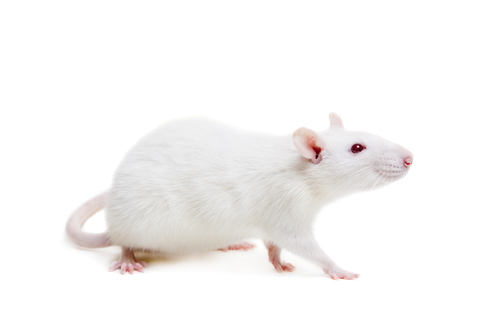
The Little Albert Experiment is one of the psychological experiments gone wrong . Things were different in 1920. Back then, you could take a healthy baby and scare it silly in the name of science. That is exactly what American social psychologist John B. Watson did at Johns Hopkins University. Watson was interested to learn if he would be able to condition a child to fear something ordinary. He coupled it with something else that he supposed triggered inborn fear. Watson borrowed eight-month-old baby Albert for an unethical psychological experiment. First, Watson introduced the child to a white rat. Observing that it didn’t scare Albert, Watson then reintroduced the rat, only this time together with a sudden loud noise. Naturally, the noise frightened Albert. Watson then deliberately got Albert to associate the rat with the noise, until the baby couldn’t even see the rat without bursting into tears. Essentially, the psychologist gave Albert a pretty unpleasant phobia. Moreover, Watson went on to make the infant distressed when seeing a rabbit, a dog, and even the furry white beard of Santa Claus. By the end of the experiment, Albert might well have been traumatized for life!
8. Stanford Prison Experiment (1971)

In August 1971 Stanford University psychology professor Philip Zimbardo decided to test the theory that conflict and ill-treatment involving prisoners and prison guards is chiefly down to individuals’ personality traits. This experiment came to be known as the Stanford Prison Experiment. Zimbardo and his team set up a simulated prison in the Stanford psychology building and gave 24 volunteers the roles of either prisoner or guard. The participants were then dressed according to their assigned roles. Zimbardo gave himself the part of superintendent. While Zimbardo had steered the guards towards creating “a sense of powerlessness” among the mock prisoners, what happened was pretty disturbing. Around four of the dozen prison guards became actively sadistic. Prisoners were stripped and humiliated, left in unsanitary conditions and forced to sleep on concrete floors. One was shut in a cupboard. Zimbardo himself was so immersed in his role that he did not notice the severity of what was going on. After six days, his girlfriend’s protests persuaded him to halt the experiment; but, that was not before at least five of the prisoners had suffered emotional trauma.
7. Monkey Drug Trials (1969)

The Monkey Drug Trials is a psychology experiment gone wrong . While their findings may have shed light on the psychological aspect of drug addiction, three researchers at the University of Michigan Medical School arguably completely overstepped the mark in 1969 by getting macaque monkeys hooked on illegal substances. G.A. Deneau, T. Yanagita and M.H. Seevers injected the primates with drugs. These drugs included cocaine, amphetamines, morphine, LSD, and alcohol. Why? In order to see if the animals would then go on to freely administer doses of the psychoactive and, in some cases, potentially deadly substances themselves. Many of the monkeys did, which the researchers claimed established a link between drug abuse and psychological dependence. Still, given the fact that the conclusions cannot necessarily be applied to humans, the experiment may have had questionable scientific value. Moreover, even if a link was determined, the method was quite possibly unethical and undoubtedly cruel, especially since some of the monkeys became a danger to themselves and died.
6. Bobo Doll Experiment (1961, 1963)

In the early 1960s, Stanford University psychologist Albert Bandura attempted to demonstrate that human behavior can be learned through observation of reward and punishment. To do this, he acquired 72 nursery-age children together with a large, inflatable toy known as a Bobo doll. He then made a subset of the children watch an aggressive model of behavior. An adult violently beat and verbally abused the toy for around ten minutes. Alarmingly, Bandura found that out of the two-dozen children who witnessed this display, in many cases the behavior was imitated. Left alone in the room with the Bobo doll once the adult had gone, the children exposed to the violence became verbally and physically aggressive towards the doll, attacking it with an intensity arguably frightening to see in ones so young. In 1963 Bandura carried out another Bobo doll experiment that yielded similar results. Nevertheless, the psychology research has since come under fire on ethical grounds, seeing as its subjects were basically trained to act aggressively with possible longer-term consequences and not healthy childhood development.
5. Homosexual Aversion Therapy (1967)
Aversion therapy to “cure” homosexuality was once a prominent subject of research at various universities. A study detailing attempts at “treating” one group of 43 homosexual men was published in the British Medical Journal in 1967. The study recounted researchers M.J. MacCulloch and M.P. Feldman’s experiments in aversion therapy at Manchester, U.K.’s Crumpsall Hospital. The participants watched slides of men that they were told to keep looking at for as long as they considered it appealing. After eight seconds of such a slide being shown, however, the test subjects were given an electric shock. Slides showing women were also presented, and the volunteers were able to look at them without any punishment involved. Although the researchers suggested that the trials had some success in “curing” their participants, in 1994 the American Psychological Association deemed homosexual aversion therapy dangerous and ineffective.
4. The Third Wave (1967)
“How was the Holocaust allowed to happen?” It’s one of history’s burning questions. And when Ron Jones, a teacher at Palo Alto’s Cubberley High School, was struggling to answer it for his sophomore students in 1967, he resolved to show them instead. On the first day of his social experiment, Jones created an authoritarian atmosphere in his class, positioning himself as a sort of World War II-style supreme leader. But as the week progressed, Jones’ one-man brand of fascism turned into a school-wide club. Students came up with their own insignia and adopted a Nazi-like salute. They were taught to firmly obey Jones’ commands and become anti-democratic to the core, even “informing” on one another. Jones’ new ideology was dubbed “The Third Wave” and spread like wildfire. By the fourth day, the teacher was concerned that the movement he had unleashed was getting out of hand. He brought the experiment to a halt. On the fifth day, he told the students that they had invoked a similar feeling of supremacy to that of the German people under the Nazi regime. Thankfully, there were no repercussions.
3. UCLA Schizophrenia Medication Experiment (1983–1994)
UCLA Schizophrenia Medication Experiment is another of the famous psychological studies . From 1983 psychologist Keith H. Nuechterlein and psychiatrist Michael Gitlin from the UCLA Medical Center commenced a now controversial study into the mental processes of schizophrenia. Specifically, they were looking into the ways in which sufferers of the mental disorder relapse. They were trying to find out if there are any predictors of psychosis. To achieve this, they had schizophrenics, from a group of hundreds involved in the program, taken off their medication. Such medication is not without its nasty side effect. The research may hold important findings about the condition. Nevertheless, the experiment has been criticized for not sufficiently protecting the patients in the event of schizophrenic symptoms returning; nor did it clearly determine the point at which the patients should be treated again. What is more, this had tragic consequences in 1991 when former program participant Antonio Lamadrid killed himself by jumping from nine floors up despite having been open about his suicidal state of mind and supposedly under the study’s watch.
2. The Monster Study (1939)
Appropriately branded the “Monster Study” by its contemporaries, psychologist Dr. Wendell Johnson’s speech therapy experiment was at first kept a secret in case it damaged his professional reputation. It is now one of the famous experiments . The University of Iowa’s Johnson drafted in graduate student Mary Tudor to carry out the 1939 experiment for her master’s thesis, whilst Johnson himself supervised. Twenty-two orphaned children, ten of whom had issues with stuttering, were put into two groups, each containing a mix of those with and without speech disorders. One of the two groups was given positive, encouraging feedback about their verbal communication, while the other was utterly disparaged for their (sometimes-non-existent) speech problems. The findings were recorded. This six-month study had a major impact on the human subjects. It even had impact on those who had no prior talking difficulties, making some insecure and withdrawn. In 2007 half a dozen of the former subjects were given a large payout by the state of Iowa for what they had endured, with the claimants reporting “lifelong psychological and emotional scars.”
1. David Reimer (1967–1977)
Canadian David Reimer’s life was changed drastically on account of one Johns Hopkins University professor and one of these famous psychology studies . After a botched circumcision procedure left Reimer with disfiguring genital damage at six months old, his parents took him to be seen by John Money. Money was a professor of medical psychology and pediatrics who advocated the theory of gender neutrality. He argued that gender identity is first and foremost learned socially from a young age. Money suggested that although Reiner’s penis could not be repaired, he could and should undergo sex reassignment surgery and be raised as a female. In 1967 Reimer began the treatment that would turn him into “Brenda.” However, despite further visits to Money over the next ten years, Reimer was never really able to identify himself as female and lived as a male from the age of 14. He would go on to have treatment to undo the sex reassignment, but the ongoing experiment had prompted extreme depression in him – an underlying factor that contributed to his 2004 suicide. John Money, meanwhile, was mired in controversy.
These shocking psychological experiments were quite bizarre and damaging. Psychological research studies examine possible cause-and-effect relationships between variables. Experimental research involves careful manipulation of one variable (the independent variable) and measuring changes in another variable (the dependent variable). The most simple experimental design uses a control group and an experimental group. The experimental group experiences whatever treatment or condition that’s under investigation while the control group does not. Even with these guidelines followed, we can see that ethics still needs to be part of interesting psychology studies as well.
Related Resources:
- 20 Famous People with Schizophrenia
- Ranking Top 25 Graduate Programs in Experimental Psychology
- What Are The Best Experimental Psychology Programs in the Country?
- Tips For Designing Psychology Experiments
- What Are The Top 10 Unethical Psychology Experiments?
- The Most Groundbreaking Psychology Experiments of All Time
Trending now
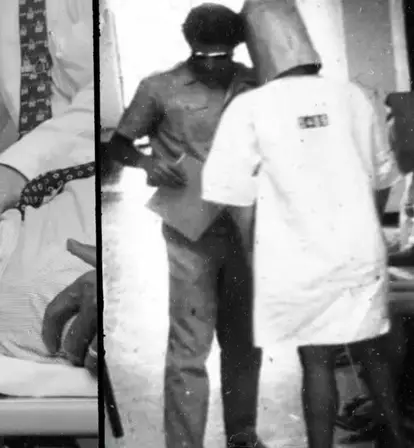
Inside 7 Of The Most Horrific Psychological Experiments Ever Performed
From the little albert experiment that terrorized a helpless infant to the monster study that tried to turn non-stuttering children into stutterers, these are some of the most disturbing psychology experiments ever performed on humans..
Psychology is a relatively new scientific field. While inquiries into the workings of the human mind technically trace back to the ancient Greeks, psychology did not officially become a field of academic and scientific study until the 1800s, with many citing Wilhelm Wundt’s 1873 book, Principles of Physiological Psychology and his subsequent founding of the first psychology lab in 1879 as the modern origin of the field.
Wundt primarily focused on the study of human consciousness, and he applied several experimental methods to move his research forward. The German professor’s work was very much “of the time” and can be viewed as unscientific by today’s standards, but his influence on the field is undeniable.
Over a century after Wundt opened his psychology lab, the field of psychology has grown exponentially, and researchers have gained a far deeper understanding of the human mind and human behavior. However, there have been some serious missteps along the way.
The American Psychological Association (APA) didn’t establish its first Code of Ethics until 1953. Before that, human psychology experiments had far more potential risk. The original guidelines have, of course, been adapted and added to over the past 70 years as well — and for good reason.
Below, you’ll find seven examples of disturbing and highly unethical psychology experiments conducted on human subjects.
Disturbing Psychology Experiments: The Little Albert Experiment (1920)

YouTube Psychologist John Watson wearing a Santa Claus mask and scaring “Little Albert.”
Ivan Pavlov’s experiments into classical conditioning are perhaps the most famous psychology experiments of all time. The Russian psychologist found that he could condition dogs to drool when they heard a dinner bell ring — even if there was no dinner in front of them — by creating an association in their minds between the bell being rung and dinner being served.
About 20 years later, in 1920, Johns Hopkins University researchers John Watson and Rosalie Rayner sought to prove that classical conditioning could work on humans just as effectively as it had on Pavlov’s dogs.
Their tests are now known as the Little Albert Experiment .
Throughout the course of the study, Watson and Rayner presented a nine-month-old baby, whom they called “Little Albert,” with several fluffy animals like a rabbit and a white rat. At first, the infant showed no negative reaction to any of the animals and even tried to pet them.
But then, when he was presented with one of the animals again, the researchers would strike a hammer against a steel pipe. The sudden and loud noise scared the baby, and he would start to cry.
Eventually, Albert came to fear anything that resembled the fluffy animals, including his family’s dogs and a bearded Santa Claus mask. His mother, who realized how traumatized he was, pulled him from the study before Watson and Rayner could attempt to reverse the conditioning.
The study is controversial for several reasons. First, creating a fear response is a form of psychological harm that is prohibited in modern experiments — and it was heavily critiqued at the time, as well. Second, the study only had one subject, which effectively rendered it pointless as studies of this nature need a much larger sample size in order for conclusions to be drawn.
Worst of all, however, is that Albert’s ultimate fate remains unknown to this day, and since his conditioning was never reversed, he quite possibly spent the rest of his life afraid of harmless objects and animals.

PO Box 24091 Brooklyn, NY 11202-4091
5 Forgotten (and Ethically Questionable) Experiments on Social Isolation
David Sandwich
Forgotten Psychology
Human beings may be social animals, but if aliens visited our planet amid the COVID-19 pandemic, they might come to a different conclusion. Around the world, people have been practicing all kinds of safety measures to stop the spread of the novel coronavirus and “flatten the curve.” Unfortunately, this has required many decidedly a social behaviors, like social distancing, isolation, and quarantines. While introverts may be enjoying their time in solitude, there’s no denying that the sharp drop in daily social interactions has taken its toll on our collective mental health.
There are some reasons to be grateful, however. We live in a time of a remarkable technology. While we keep our distance in a physical sense, we have various tools at our fingertips that allow us to stay in touch with family and friends. We have cell phones, social media, FaceTime, Zoom conferencing, and other advanced platforms that closely mimic the rapid exchanges of real, face-to-face conversations. They’re not perfect, and problems like “Zoom fatigue” are on the rise. But technology has greatly minimized the mental health impact of what would otherwise be a period of extreme social isolation.
And, let’s face it. Things could be worse. At least we’re not subjects in a social isolation experiment from the 1950s and ’60s. These experiments began as a way to investigate how social isolation could be used as a brainwashing technique. From there, other scientists took an interest in social isolation as it was believed to have strong implications for theories on perception and the etiology of psychological disorders. Most of these experiments took place before ethical guidelines for human research were in place. Therefore, the procedures were at times unreasonably harsh and often involved the complete isolation of individuals for days or weeks at a time.
While many of these experiments were no doubt dangerous and unethical, some were more innocent and led to valuable insights regarding how social isolation affects our perceptions, behaviors, and mental health. These studies underscore the importance of maintaining social relationships, even when it’s difficult to do so. Here is a curated list of the most intriguing (or downright unethical) studies on the effects of isolation.
1. The Hallucination Experiment at McGill University
Length of isolation: 3 days.
The first studies of social isolation were performed at McGill University in the early 1950s. At the time, there were rumors that China and Korea had developed brainwashing techniques that succeeded in converting American POWs to communists. Dr. Donald Hebb at McGill University wanted to find out whether such a thing were actually possible under the right conditions. So, the eminent professor, along with three other scientists — Drs. Bexton, Heron, and Scott — began looking into how people responded to social isolation coupled with sensory deprivation . However, while rumors of brainwashing overseas served as the impetus for these experiments, the investigators didn’t try to manipulate the beliefs and opinions of their subjects. Instead, they focused broadly on how isolation affected one’s cognitive processes. What the investigators actually found caught everyone by surprise.
For the experiment, each subject spent three days alone in a cubicle. They were paid $20 per day. For sensory deprivation, subjects were blindfolded and wore cardboard arm cuffs that began at the elbows and extended past the fingertips. This latter contraption prevented the subjects from touching anything in the cubicle. A pair of earphones and several running fans were also used to dampen their sense of hearing. As expected, the time in isolation temporarily impaired several cognitive functions. It also made the subjects more irritable and prone to erratic, compulsive movements. But the strangest effect of the isolation was the experiencing of vivid imagery and absurd, dream-like hallucinations.
One subject drew this picture to explain the strange feeling of there being two of him during isolation. He couldn’t decide if he was A or B. All the subjects experienced hallucinations in one form or another. Some subjects reported seeing “wallpaper-like” patterns or geometric shapes. Others experienced more elaborate hallucinations like prehistoric animals or little yellow men. One subject saw a procession of marching squirrels with knapsacks slung over their shoulders. The squirrels were moving “purposefully” across a snowy field. Subjects also reported vague feelings of “otherness” or “strangeness” with respect to their bodies. One subject sensed that two of him existed in the cubicle, and he couldn’t tell which body actually belonged to him. While the experiment yielded several findings of great interest, it was the hallucinations that piqued the attention of the scientific community. Soon, other laboratories began using isolation as a means to study a range of psychological topics.
2. The Princeton University Experiments
Length of isolation: 4 days.
Dr. Hebb’s experiments inspired a team of researchers at Princeton University to further examine the consequences of isolation and sensory deprivation. The experiments were led by Dr. Jack Vernon and focused on what could be done to maximize the number of hallucinations . Unexpectedly, when Dr. Vernon and his team began their work, they had trouble getting their subjects to hallucinate. Only a few subjects experienced hallucinations, and the imagery was too simple. The subjects would see elementary shapes and figures, but no intricate dream-like sequences, as reported in the McGill experiments. So, Dr. Vernon used an even stricter protocol. He had each subject stay in the cubicle for 4 days. The room was pitch black and had “relief bottles” and a chemical toilet so the subject didn’t have to leave the chamber to use the bathroom. The subjects were also forbidden from exploring the room, singing, or talking to themselves. However, even with these Draconian measures in place, the investigators were unable to produce a fair number of hallucinations.
What eventually worked was putting some light in the room and then having participants wear masks instead. The masks weren’t exactly opaque, and so they permitted some perception of light — but not much else. One of the masks worn by the subjects was made of moleskin with two ping-pong balls covering the eyes. Another mask had an illuminated panel that provided a diffuse layer of blue-green light over the subject’s eyes. These changes to the experiment were successful in producing complex hallucinations in more than half of the participants.
The Princeton team discovered some other interesting effects of isolation. For instance, isolation impaired simple motor tasks, like holding a stylus, but enhanced memorization of word lists. Many subjects also experienced feelings of stress, while others faced unusual deficits in their sense of taste. One subject in isolation couldn’t tell the difference between beef bouillon and tomato soup, or ham and bologna. Over time, research on social isolation expanded to other colleges and universities, and scientists began to think seriously about how the research could apply to real-world problems — most notably, space travel.
3. NASA Research for Manned Space Flight
Length of isolation: 5 months.
In the 1950s and ’60s, one of the main concerns about the prospect of space travel was the inevitable prolonged periods of confinement and social isolation. After all, voyaging to a distant planet would require months of being cooped up in a small cabin, and the folks at NASA weren’t sure how this would affect a person’s psyche. So, NASA funded several projects looking into the effects of prolonged isolation. In one of them, Dr. Jack Findley, a psychology professor at the University of Maryland, confined a subject to a tiny 171 sq. ft. chamber for 5 months . The subject was 34-year-old Whilden P. Breen, Jr., a teacher and U.S. army veteran.
While in isolation, Mr. Breen was treated like a lab rat. He had to press buttons to get food, music, cigarettes, and other pleasantries. However, these opportunities would only be available after he completed other tasks, such as physical exercise, health screenings, and “work tasks.” The latter included mundane jobs like looking up words in a dictionary or assembling random electronic devices. Sometimes Dr. Findley would change the rules, and Mr. Breen would have to press a button 500 times before getting a single cigarette. Another game called “Variable Consequence” allowed him to complete work tasks in order to gain a reward that could be very positive (like having a brief conversation with his wife over an intercom) or very negative (like having nothing to eat but banana pellets for 3 days). Mr. Breen was happy to participate in the experiment at the outset. But, after only a few weeks, his patience began to wear thin. He doubted he could make it to 2 months, let alone 5.
One of the things that helped Mr. Breen retain his sanity while in isolation was the opportunity to be creative. He was allowed to take up a hobby and chose oil painting. He painted a variety of different pictures, everything from exotic dancers to nuclear explosions. Each day, Mr. Breen also had the opportunity to perform a verbal task of his choosing, and he used this time to work on a science fiction novel. While these activities helped make the experience more tolerable, the prolonged isolation and regimented schedule eventually got to him. He became antagonistic toward the experimenters and frequently insulted them over the intercom. He also grew suspicious of the experimenters’ motives and thought they were hiding the true purpose of the experiment from him. The mental strain of isolation became so great he couldn’t concentrate on his novel. So, he abandoned it.
In spite of these difficulties, Mr. Breen carried on with the experiment. After 5 months, the study ended, and Mr. Breen returned to his old life. In retrospect, he felt guilty about treating the experimenters poorly and apologized for insulting them. He was also elated to reunite with his wife who upon seeing him said, “He was as handsome as ever.” Dr. Findley regarded the experiment as a success. After all, the programmed environment kept the subject in good health, and his work performance never faltered. However, one recommendation Dr. Findley made that could help future astronauts was the inclusion of more than one person in the environment. As for Mr. Breen, the experiment taught him a lot too. “I’ve decided I like people,” he said.
4. The CIA’s Mind Control Program
Length of isolation: .
As noted above, the scientific study of social isolation began in order to examine its potential as a brainwashing technique. After all, it was believed that isolation was one of the strategies that the Chinese government had been using to brainwash American POWs. In response to such reports, the CIA established its own top secret program aimed at mastering the art of mind control. The project, known as MK-Ultra, lasted from about 1953 to 1973 and involved hundreds of experiments performed at colleges, hospitals, prisons, and secret testing facilities.
There’s a lot we don’t know about MK-Ultra, because when the program was finally terminated, the director of the CIA mandated the destruction of all records. What we do know comes from the limited documents that survived the purge, as well as the testimonies of CIA officials and others during an investigation by the U.S. Senate in 1977 . The investigation revealed the highly unethical and criminal nature of the MK-Ultra experiments. In their quest for complete mind control, researchers recruited prisoners and other vulnerable populations without their consent, and used a variety of cruel and unusual techniques, such as torture, sexual abuse, massive dosing of the hallucinogenic drug LSD, and of course, isolation. At a Kentucky facility, six African-American prisoners were isolated and drugged with LSD for 77 consecutive days. Another victim — a mental patient — was drugged with the hallucinogen for 174 days. Then, in a sub-program called “Operation Third Chance,” investigators tested a series of unconscionable interrogation techniques on American soldiers suspected of espionage. As stated in the published Senate report:
Stressing techniques employed included silent treatment before or after EA 1729 [LSD] administration, sustained conventional interrogation prior to EA 1729 interrogation, deprivation of food, drink, sleep or bodily evacuation, sustained isolation prior to EA 1729 administration, hot-cold switches in approach, duress “pitches”, verbal degradation and bodily discomfort, or dramatized threats to subject’s life or mental health.
Presumably, the MK-Ultra program never reached complete mind control á la The Manchurian Candidate . However, the techniques were effective for interrogation and, to some extent, brainwashing. The real legacy of MK-Ultra will always be one of shame. The program served as a prime example of how blind ambition in science can turn quickly to absolute wickedness.
Length of Isolation: ~13 years
Genie (1970)The case of Genie is a sad one. Genie (born: 1957) was a young girl who was mentally and physically abused by her parents for the first 13 years of her life. During this time, she spent every day alone, hidden in a locked room while confined to either a chair or a toilet. When she was finally rescued by Los Angeles welfare authorities in 1970, she was severely malnourished, had only weak language skills, and like other feral children, showed a lack of socialization.
Genie came under the attention of psychologists who first and foremost wanted to help her, but were also interested in testing several theories of language development. For instance, many researchers believed that children acquired language skills during a specific critical period of development. According to this theory, language acquisition would not be possible once the child surpassed this critical stage. Unfortunately for Genie, this turned out to be true. Even though Genie was able to learn new words under the care of her teachers, she still struggled with grammar and syntax. On the other hand, her capacity for nonverbal communication was intact. She had no problem communicating using gestures, pictures, and sign language.
When Genie turned 18, she moved back with her mom. But, after a few months, Genie’s mom realized she couldn’t provide adequate care, and so Genie was placed in a series of foster homes over the next 20 or so years. There were reports of foster families abusing and harassing her. As a result, her condition deteriorated, and she became depressed. However, as of 2016, Genie is reportedly doing much better. While her exact location hasn’t been disclosed, we do know that she currently lives in a small private institution for adults with intellectual disabilities. Her speech remains severely impaired, but she continues to communicate well using sign language.
The COVID-19 Experiment
Length of isolation: tbd.
While the above studies differed in many ways, they all pointed to a single truth: human contact is vitally important. We require some degree of human interaction to stay happy and healthy. In these strange times, many of us have become unwitting subjects of a very different kind of social experiment, testing the effects of prolonged isolation and social distancing on our collective mental health. And, we’re still awaiting the results. There’s no doubt that such safety measures are needed to flatten the curve and will prevent countless deaths. So, the solution isn’t simply to call off stay-at-home orders and reopen businesses (a dangerous decision many states have already made). Instead we need to find a way to maintain our mental health while in isolation. Although we can’t socialize in person, we can use cell phones and computers to interact with family and friends. If we have a lot of downtime, we can devote more attention to our hobbies or to learning new skills. There are many ways to keep our mental health in check. However, what works for some may not work for others. We each need to find our own way.
Originally published May 6, 2020 on ForgottenPsychology.com

Written by David Sandwich
Professor, Writer, and World’s Greatest Dad.
Text to speech
- Neuroscience
Some of psychology's most influential studies were also completely unethical
by Susannah Locke

Some of the most important studies in the history of psychology couldn’t be done today — because they were incredibly unethical.
That includes the “Little Albert” study from 1920, in which researchers purposefully terrified a small child to study how fear works. It also includes the famous Stanford prison experiment of 1971, in which subjects acted as prison guards and mistreated fake inmates — a powerful look at how cultural roles can influence behavior. These studies and their findings were hugely influential. They would also — for good reason — be barred from happening today.
Many of these important studies can no longer be replicated
Nowadays, all research being conducted with federal funding has to be reviewed for several ethical criteria. For example, the benefits to society have to outweigh the risks to the participants. And volunteers have to fully consent, understand the risks, and know that they can quit at any time.
These rules also mean that many of those important earlier studies — like the Stanford prison experiment — can’t be replicated exactly. So it’s hard to truly test the methods and conclusions of some of the most foundational studies in psychology. And that means that we’re always going to be debating what, exactly, these studies really mean.
So here’s a look at three of the most important psychology studies that you could never get away with today:
1) The “Little Albert” study

( John Watson, via Wikimedia )
For a study published in 1920, researchers John B. Watson and Rosalie Rayner, of Johns Hopkins University, trained a baby boy they called Albert to irrationally fear a white rat and other objects. They did so by repeatedly putting the rat near the baby while striking a steel bar with a hammer to make a terrible, scary noise.
By the end of the experiment, the baby was also terrified of lots of other objects with similar qualities, including a fur coat and a Santa Claus mask with a white beard. The researchers were planning to re-train Albert to not fear these things, but Albert and his family disappeared.
There are many hypotheses for who Albert was. A thorough investigation published in 2009 in the journal of the American Psychological Association concluded that Albert was most likely a boy named Douglas Merritte, the son of a Johns Hopkins wet nurse who left the job at about the same time Albert left the study. Whether or not Albert suffered any long-term effects from this research is still unclear.
Today, scientists could never get away with repeatedly terrifying a small child like this. But t he Little Albert study is widely regarded as the first significant example of learned reflexive responses — or "conditioning" — in a human. ( Ivan Pavlov had already showed conditioning in dogs, which he had trained to salivate when they heard a sound.) That turned out to be important. Conditioning is at the heart of many types of psychological therapy today, including treatments for some addictions and phobias .
2) The Milgram Shock Experiment 5

Ontario Science Centre Milgram electric box ( Isabelle/Flickr )
In the 1960s and ‘70s, Stanley Milgram produced a series of experiments investigating the nature of obedience. In the most famous one, researchers told participants to administer progressively stronger electric shocks to a person in an adjacent room for each wrong answer he gave on a test. (The participants were told that this was a study about learning methods.)
The “learner” was actually in on the study. At one point, after every shock, he started yelling in pain and demanding that it stop. Still, a researcher encouraged the participant to continue giving shocks.
And they did. 65 percent of participants continued shocking until the voltage simply couldn’t go any higher — so high that the learner had stopped making noise and was presumably incapacitated or dead. In other words, these people were willing to injure or possibly even kill someone else just because a researcher had told them to. And the participants had to learn this about themselves.
This experiment has been exceptionally influential in the field of social psychology. It appeared to show how everyday people could act inhumanely in obedience to an authority figure — such as was demonstrated in the atrocities of World War II.
But this study couldn’t get carried out in its entirety today. Although some degree of deception is common in many studies, the anguish of thinking that you’ve severely hurt or killed someone is just too great to justify. And that means the study will always remain subject to much debate.
In 2009, a study went as far as the learner’s first protest and found similar obedience rates at that point. But we’ll never really know if people today would still go all the way.
The Stanford Prison Experiment

( Shutterstock )
In 1971, psychologists recruited male college students to play prisoners or guards 24 hours a day for two weeks at a mock prison in the basement of a Stanford building. This later became known as The Stanford Prison Experiment .
Even though the roles were randomly assigned, some of the guards became so cruel (including sometimes banning clothing and the right to use the toilet, and using increasingly strenuous exercise as punishment) that the researchers stopped the experiment after just six days. And within those six days, several prisoners freaked out so badly that they had to be let go, and one even went on a hunger strike.
Even more remarkable, many of the "prisoners" stayed even though they were clearly in a lot of distress — possibly because they didn't realize they could leave. Today, psychology researchers are expected to tell participants that they have the right to withdraw at any time. But that didn't happen in this study.
The Stanford Prison Experiment, run by psychologist Philip Zimbardo, is one of the most famous pieces of evidence that cultural roles can have an exceptionally strong influence on people’s behavior. It’s become one of the most talked about studies in all of social psychology. But it’s also been contentious. Other researchers have raised questions about the study’s methodology and conclusions. For example, recent news reports about prison brutality may have led participants to simply give psychologists the drama they thought they wanted. And the exact wording of Zimbardo’s instructions may have egged them on.
To really get a sense of how valid the study was, researchers would ideally want to replicate it in full. But good luck trying to do that. “No behavioral research that puts people in that kind of setting can ever be done again in America,” Zimbardo told Stanford’s alumni magazine in 2011.
- Criminal Justice
Most Popular
- How Raygun earned her spot — fair and square — as an Olympics breaker
- Mpox never stopped spreading in Africa. Now it’s an international public health emergency. Again.
- Why does it feel like everyone is getting Covid?
- The fight over Jordan Chiles’s bronze medal is barely about gymnastics
- Take a mental break with the newest Vox crossword
Today, Explained
Understand the world with a daily explainer plus the most compelling stories of the day.
This is the title for the native ad
More in Neuroscience

Retracted studies and new treatments reveal the confusing state of Alzheimer’s research.

The debate that will steer the future of consciousness — and us.

Mindfulness is one thing. Jhāna meditation is stranger, stronger, and going mainstream.

Obesity will go down, electric cars will go up, and a nuclear bomb might just fall.

What happens when we almost die?

Dopamine detoxing, hacking, and fasting: Is any of it real?
- The 25 Most Influential Psychological Experiments in History

While each year thousands and thousands of studies are completed in the many specialty areas of psychology, there are a handful that, over the years, have had a lasting impact in the psychological community as a whole. Some of these were dutifully conducted, keeping within the confines of ethical and practical guidelines. Others pushed the boundaries of human behavior during their psychological experiments and created controversies that still linger to this day. And still others were not designed to be true psychological experiments, but ended up as beacons to the psychological community in proving or disproving theories.
This is a list of the 25 most influential psychological experiments still being taught to psychology students of today.
1. A Class Divided
Study conducted by: jane elliott.
Study Conducted in 1968 in an Iowa classroom

Experiment Details: Jane Elliott’s famous experiment was inspired by the assassination of Dr. Martin Luther King Jr. and the inspirational life that he led. The third grade teacher developed an exercise, or better yet, a psychological experiment, to help her Caucasian students understand the effects of racism and prejudice.
Elliott divided her class into two separate groups: blue-eyed students and brown-eyed students. On the first day, she labeled the blue-eyed group as the superior group and from that point forward they had extra privileges, leaving the brown-eyed children to represent the minority group. She discouraged the groups from interacting and singled out individual students to stress the negative characteristics of the children in the minority group. What this exercise showed was that the children’s behavior changed almost instantaneously. The group of blue-eyed students performed better academically and even began bullying their brown-eyed classmates. The brown-eyed group experienced lower self-confidence and worse academic performance. The next day, she reversed the roles of the two groups and the blue-eyed students became the minority group.
At the end of the experiment, the children were so relieved that they were reported to have embraced one another and agreed that people should not be judged based on outward appearances. This exercise has since been repeated many times with similar outcomes.
For more information click here
2. Asch Conformity Study
Study conducted by: dr. solomon asch.
Study Conducted in 1951 at Swarthmore College

Experiment Details: Dr. Solomon Asch conducted a groundbreaking study that was designed to evaluate a person’s likelihood to conform to a standard when there is pressure to do so.
A group of participants were shown pictures with lines of various lengths and were then asked a simple question: Which line is longest? The tricky part of this study was that in each group only one person was a true participant. The others were actors with a script. Most of the actors were instructed to give the wrong answer. Strangely, the one true participant almost always agreed with the majority, even though they knew they were giving the wrong answer.
The results of this study are important when we study social interactions among individuals in groups. This study is a famous example of the temptation many of us experience to conform to a standard during group situations and it showed that people often care more about being the same as others than they do about being right. It is still recognized as one of the most influential psychological experiments for understanding human behavior.
3. Bobo Doll Experiment
Study conducted by: dr. alburt bandura.
Study Conducted between 1961-1963 at Stanford University

In his groundbreaking study he separated participants into three groups:
- one was exposed to a video of an adult showing aggressive behavior towards a Bobo doll
- another was exposed to video of a passive adult playing with the Bobo doll
- the third formed a control group
Children watched their assigned video and then were sent to a room with the same doll they had seen in the video (with the exception of those in the control group). What the researcher found was that children exposed to the aggressive model were more likely to exhibit aggressive behavior towards the doll themselves. The other groups showed little imitative aggressive behavior. For those children exposed to the aggressive model, the number of derivative physical aggressions shown by the boys was 38.2 and 12.7 for the girls.
The study also showed that boys exhibited more aggression when exposed to aggressive male models than boys exposed to aggressive female models. When exposed to aggressive male models, the number of aggressive instances exhibited by boys averaged 104. This is compared to 48.4 aggressive instances exhibited by boys who were exposed to aggressive female models.
While the results for the girls show similar findings, the results were less drastic. When exposed to aggressive female models, the number of aggressive instances exhibited by girls averaged 57.7. This is compared to 36.3 aggressive instances exhibited by girls who were exposed to aggressive male models. The results concerning gender differences strongly supported Bandura’s secondary prediction that children will be more strongly influenced by same-sex models. The Bobo Doll Experiment showed a groundbreaking way to study human behavior and it’s influences.
4. Car Crash Experiment
Study conducted by: elizabeth loftus and john palmer.
Study Conducted in 1974 at The University of California in Irvine

The participants watched slides of a car accident and were asked to describe what had happened as if they were eyewitnesses to the scene. The participants were put into two groups and each group was questioned using different wording such as “how fast was the car driving at the time of impact?” versus “how fast was the car going when it smashed into the other car?” The experimenters found that the use of different verbs affected the participants’ memories of the accident, showing that memory can be easily distorted.
This research suggests that memory can be easily manipulated by questioning technique. This means that information gathered after the event can merge with original memory causing incorrect recall or reconstructive memory. The addition of false details to a memory of an event is now referred to as confabulation. This concept has very important implications for the questions used in police interviews of eyewitnesses.
5. Cognitive Dissonance Experiment
Study conducted by: leon festinger and james carlsmith.
Study Conducted in 1957 at Stanford University
Experiment Details: The concept of cognitive dissonance refers to a situation involving conflicting:
This conflict produces an inherent feeling of discomfort leading to a change in one of the attitudes, beliefs or behaviors to minimize or eliminate the discomfort and restore balance.
Cognitive dissonance was first investigated by Leon Festinger, after an observational study of a cult that believed that the earth was going to be destroyed by a flood. Out of this study was born an intriguing experiment conducted by Festinger and Carlsmith where participants were asked to perform a series of dull tasks (such as turning pegs in a peg board for an hour). Participant’s initial attitudes toward this task were highly negative.
They were then paid either $1 or $20 to tell a participant waiting in the lobby that the tasks were really interesting. Almost all of the participants agreed to walk into the waiting room and persuade the next participant that the boring experiment would be fun. When the participants were later asked to evaluate the experiment, the participants who were paid only $1 rated the tedious task as more fun and enjoyable than the participants who were paid $20 to lie.
Being paid only $1 is not sufficient incentive for lying and so those who were paid $1 experienced dissonance. They could only overcome that cognitive dissonance by coming to believe that the tasks really were interesting and enjoyable. Being paid $20 provides a reason for turning pegs and there is therefore no dissonance.
6. Fantz’s Looking Chamber
Study conducted by: robert l. fantz.
Study Conducted in 1961 at the University of Illinois
Experiment Details: The study conducted by Robert L. Fantz is among the simplest, yet most important in the field of infant development and vision. In 1961, when this experiment was conducted, there very few ways to study what was going on in the mind of an infant. Fantz realized that the best way was to simply watch the actions and reactions of infants. He understood the fundamental factor that if there is something of interest near humans, they generally look at it.
To test this concept, Fantz set up a display board with two pictures attached. On one was a bulls-eye. On the other was the sketch of a human face. This board was hung in a chamber where a baby could lie safely underneath and see both images. Then, from behind the board, invisible to the baby, he peeked through a hole to watch what the baby looked at. This study showed that a two-month old baby looked twice as much at the human face as it did at the bulls-eye. This suggests that human babies have some powers of pattern and form selection. Before this experiment it was thought that babies looked out onto a chaotic world of which they could make little sense.
7. Hawthorne Effect
Study conducted by: henry a. landsberger.
Study Conducted in 1955 at Hawthorne Works in Chicago, Illinois

Landsberger performed the study by analyzing data from experiments conducted between 1924 and 1932, by Elton Mayo, at the Hawthorne Works near Chicago. The company had commissioned studies to evaluate whether the level of light in a building changed the productivity of the workers. What Mayo found was that the level of light made no difference in productivity. The workers increased their output whenever the amount of light was switched from a low level to a high level, or vice versa.
The researchers noticed a tendency that the workers’ level of efficiency increased when any variable was manipulated. The study showed that the output changed simply because the workers were aware that they were under observation. The conclusion was that the workers felt important because they were pleased to be singled out. They increased productivity as a result. Being singled out was the factor dictating increased productivity, not the changing lighting levels, or any of the other factors that they experimented upon.
The Hawthorne Effect has become one of the hardest inbuilt biases to eliminate or factor into the design of any experiment in psychology and beyond.
8. Kitty Genovese Case
Study conducted by: new york police force.
Study Conducted in 1964 in New York City
Experiment Details: The murder case of Kitty Genovese was never intended to be a psychological experiment, however it ended up having serious implications for the field.
According to a New York Times article, almost 40 neighbors witnessed Kitty Genovese being savagely attacked and murdered in Queens, New York in 1964. Not one neighbor called the police for help. Some reports state that the attacker briefly left the scene and later returned to “finish off” his victim. It was later uncovered that many of these facts were exaggerated. (There were more likely only a dozen witnesses and records show that some calls to police were made).
What this case later become famous for is the “Bystander Effect,” which states that the more bystanders that are present in a social situation, the less likely it is that anyone will step in and help. This effect has led to changes in medicine, psychology and many other areas. One famous example is the way CPR is taught to new learners. All students in CPR courses learn that they must assign one bystander the job of alerting authorities which minimizes the chances of no one calling for assistance.
9. Learned Helplessness Experiment
Study conducted by: martin seligman.
Study Conducted in 1967 at the University of Pennsylvania

Seligman’s experiment involved the ringing of a bell and then the administration of a light shock to a dog. After a number of pairings, the dog reacted to the shock even before it happened. As soon as the dog heard the bell, he reacted as though he’d already been shocked.
During the course of this study something unexpected happened. Each dog was placed in a large crate that was divided down the middle with a low fence. The dog could see and jump over the fence easily. The floor on one side of the fence was electrified, but not on the other side of the fence. Seligman placed each dog on the electrified side and administered a light shock. He expected the dog to jump to the non-shocking side of the fence. In an unexpected turn, the dogs simply laid down.
The hypothesis was that as the dogs learned from the first part of the experiment that there was nothing they could do to avoid the shocks, they gave up in the second part of the experiment. To prove this hypothesis the experimenters brought in a new set of animals and found that dogs with no history in the experiment would jump over the fence.
This condition was described as learned helplessness. A human or animal does not attempt to get out of a negative situation because the past has taught them that they are helpless.
10. Little Albert Experiment
Study conducted by: john b. watson and rosalie rayner.
Study Conducted in 1920 at Johns Hopkins University

The experiment began by placing a white rat in front of the infant, who initially had no fear of the animal. Watson then produced a loud sound by striking a steel bar with a hammer every time little Albert was presented with the rat. After several pairings (the noise and the presentation of the white rat), the boy began to cry and exhibit signs of fear every time the rat appeared in the room. Watson also created similar conditioned reflexes with other common animals and objects (rabbits, Santa beard, etc.) until Albert feared them all.
This study proved that classical conditioning works on humans. One of its most important implications is that adult fears are often connected to early childhood experiences.
11. Magical Number Seven
Study conducted by: george a. miller.
Study Conducted in 1956 at Princeton University
Experiment Details: Frequently referred to as “ Miller’s Law,” the Magical Number Seven experiment purports that the number of objects an average human can hold in working memory is 7 ± 2. This means that the human memory capacity typically includes strings of words or concepts ranging from 5-9. This information on the limits to the capacity for processing information became one of the most highly cited papers in psychology.
The Magical Number Seven Experiment was published in 1956 by cognitive psychologist George A. Miller of Princeton University’s Department of Psychology in Psychological Review . In the article, Miller discussed a concurrence between the limits of one-dimensional absolute judgment and the limits of short-term memory.
In a one-dimensional absolute-judgment task, a person is presented with a number of stimuli that vary on one dimension (such as 10 different tones varying only in pitch). The person responds to each stimulus with a corresponding response (learned before).
Performance is almost perfect up to five or six different stimuli but declines as the number of different stimuli is increased. This means that a human’s maximum performance on one-dimensional absolute judgment can be described as an information store with the maximum capacity of approximately 2 to 3 bits of information There is the ability to distinguish between four and eight alternatives.
12. Pavlov’s Dog Experiment
Study conducted by: ivan pavlov.
Study Conducted in the 1890s at the Military Medical Academy in St. Petersburg, Russia

Pavlov began with the simple idea that there are some things that a dog does not need to learn. He observed that dogs do not learn to salivate when they see food. This reflex is “hard wired” into the dog. This is an unconditioned response (a stimulus-response connection that required no learning).
Pavlov outlined that there are unconditioned responses in the animal by presenting a dog with a bowl of food and then measuring its salivary secretions. In the experiment, Pavlov used a bell as his neutral stimulus. Whenever he gave food to his dogs, he also rang a bell. After a number of repeats of this procedure, he tried the bell on its own. What he found was that the bell on its own now caused an increase in salivation. The dog had learned to associate the bell and the food. This learning created a new behavior. The dog salivated when he heard the bell. Because this response was learned (or conditioned), it is called a conditioned response. The neutral stimulus has become a conditioned stimulus.
This theory came to be known as classical conditioning.
13. Robbers Cave Experiment
Study conducted by: muzafer and carolyn sherif.
Study Conducted in 1954 at the University of Oklahoma
Experiment Details: This experiment, which studied group conflict, is considered by most to be outside the lines of what is considered ethically sound.
In 1954 researchers at the University of Oklahoma assigned 22 eleven- and twelve-year-old boys from similar backgrounds into two groups. The two groups were taken to separate areas of a summer camp facility where they were able to bond as social units. The groups were housed in separate cabins and neither group knew of the other’s existence for an entire week. The boys bonded with their cabin mates during that time. Once the two groups were allowed to have contact, they showed definite signs of prejudice and hostility toward each other even though they had only been given a very short time to develop their social group. To increase the conflict between the groups, the experimenters had them compete against each other in a series of activities. This created even more hostility and eventually the groups refused to eat in the same room. The final phase of the experiment involved turning the rival groups into friends. The fun activities the experimenters had planned like shooting firecrackers and watching movies did not initially work, so they created teamwork exercises where the two groups were forced to collaborate. At the end of the experiment, the boys decided to ride the same bus home, demonstrating that conflict can be resolved and prejudice overcome through cooperation.
Many critics have compared this study to Golding’s Lord of the Flies novel as a classic example of prejudice and conflict resolution.
14. Ross’ False Consensus Effect Study
Study conducted by: lee ross.
Study Conducted in 1977 at Stanford University
Experiment Details: In 1977, a social psychology professor at Stanford University named Lee Ross conducted an experiment that, in lay terms, focuses on how people can incorrectly conclude that others think the same way they do, or form a “false consensus” about the beliefs and preferences of others. Ross conducted the study in order to outline how the “false consensus effect” functions in humans.
Featured Programs
In the first part of the study, participants were asked to read about situations in which a conflict occurred and then were told two alternative ways of responding to the situation. They were asked to do three things:
- Guess which option other people would choose
- Say which option they themselves would choose
- Describe the attributes of the person who would likely choose each of the two options
What the study showed was that most of the subjects believed that other people would do the same as them, regardless of which of the two responses they actually chose themselves. This phenomenon is referred to as the false consensus effect, where an individual thinks that other people think the same way they do when they may not. The second observation coming from this important study is that when participants were asked to describe the attributes of the people who will likely make the choice opposite of their own, they made bold and sometimes negative predictions about the personalities of those who did not share their choice.
15. The Schacter and Singer Experiment on Emotion
Study conducted by: stanley schachter and jerome e. singer.
Study Conducted in 1962 at Columbia University
Experiment Details: In 1962 Schachter and Singer conducted a ground breaking experiment to prove their theory of emotion.
In the study, a group of 184 male participants were injected with epinephrine, a hormone that induces arousal including increased heartbeat, trembling, and rapid breathing. The research participants were told that they were being injected with a new medication to test their eyesight. The first group of participants was informed the possible side effects that the injection might cause while the second group of participants were not. The participants were then placed in a room with someone they thought was another participant, but was actually a confederate in the experiment. The confederate acted in one of two ways: euphoric or angry. Participants who had not been informed about the effects of the injection were more likely to feel either happier or angrier than those who had been informed.
What Schachter and Singer were trying to understand was the ways in which cognition or thoughts influence human emotion. Their study illustrates the importance of how people interpret their physiological states, which form an important component of your emotions. Though their cognitive theory of emotional arousal dominated the field for two decades, it has been criticized for two main reasons: the size of the effect seen in the experiment was not that significant and other researchers had difficulties repeating the experiment.
16. Selective Attention / Invisible Gorilla Experiment
Study conducted by: daniel simons and christopher chabris.
Study Conducted in 1999 at Harvard University
Experiment Details: In 1999 Simons and Chabris conducted their famous awareness test at Harvard University.
Participants in the study were asked to watch a video and count how many passes occurred between basketball players on the white team. The video moves at a moderate pace and keeping track of the passes is a relatively easy task. What most people fail to notice amidst their counting is that in the middle of the test, a man in a gorilla suit walked onto the court and stood in the center before walking off-screen.
The study found that the majority of the subjects did not notice the gorilla at all, proving that humans often overestimate their ability to effectively multi-task. What the study set out to prove is that when people are asked to attend to one task, they focus so strongly on that element that they may miss other important details.
17. Stanford Prison Study
Study conducted by philip zimbardo.
Study Conducted in 1971 at Stanford University

The Stanford Prison Experiment was designed to study behavior of “normal” individuals when assigned a role of prisoner or guard. College students were recruited to participate. They were assigned roles of “guard” or “inmate.” Zimbardo played the role of the warden. The basement of the psychology building was the set of the prison. Great care was taken to make it look and feel as realistic as possible.
The prison guards were told to run a prison for two weeks. They were told not to physically harm any of the inmates during the study. After a few days, the prison guards became very abusive verbally towards the inmates. Many of the prisoners became submissive to those in authority roles. The Stanford Prison Experiment inevitably had to be cancelled because some of the participants displayed troubling signs of breaking down mentally.
Although the experiment was conducted very unethically, many psychologists believe that the findings showed how much human behavior is situational. People will conform to certain roles if the conditions are right. The Stanford Prison Experiment remains one of the most famous psychology experiments of all time.
18. Stanley Milgram Experiment
Study conducted by stanley milgram.
Study Conducted in 1961 at Stanford University
Experiment Details: This 1961 study was conducted by Yale University psychologist Stanley Milgram. It was designed to measure people’s willingness to obey authority figures when instructed to perform acts that conflicted with their morals. The study was based on the premise that humans will inherently take direction from authority figures from very early in life.
Participants were told they were participating in a study on memory. They were asked to watch another person (an actor) do a memory test. They were instructed to press a button that gave an electric shock each time the person got a wrong answer. (The actor did not actually receive the shocks, but pretended they did).
Participants were told to play the role of “teacher” and administer electric shocks to “the learner,” every time they answered a question incorrectly. The experimenters asked the participants to keep increasing the shocks. Most of them obeyed even though the individual completing the memory test appeared to be in great pain. Despite these protests, many participants continued the experiment when the authority figure urged them to. They increased the voltage after each wrong answer until some eventually administered what would be lethal electric shocks.
This experiment showed that humans are conditioned to obey authority and will usually do so even if it goes against their natural morals or common sense.
19. Surrogate Mother Experiment
Study conducted by: harry harlow.
Study Conducted from 1957-1963 at the University of Wisconsin
Experiment Details: In a series of controversial experiments during the late 1950s and early 1960s, Harry Harlow studied the importance of a mother’s love for healthy childhood development.
In order to do this he separated infant rhesus monkeys from their mothers a few hours after birth and left them to be raised by two “surrogate mothers.” One of the surrogates was made of wire with an attached bottle for food. The other was made of soft terrycloth but lacked food. The researcher found that the baby monkeys spent much more time with the cloth mother than the wire mother, thereby proving that affection plays a greater role than sustenance when it comes to childhood development. They also found that the monkeys that spent more time cuddling the soft mother grew up to healthier.
This experiment showed that love, as demonstrated by physical body contact, is a more important aspect of the parent-child bond than the provision of basic needs. These findings also had implications in the attachment between fathers and their infants when the mother is the source of nourishment.
20. The Good Samaritan Experiment
Study conducted by: john darley and daniel batson.
Study Conducted in 1973 at The Princeton Theological Seminary (Researchers were from Princeton University)
Experiment Details: In 1973, an experiment was created by John Darley and Daniel Batson, to investigate the potential causes that underlie altruistic behavior. The researchers set out three hypotheses they wanted to test:
- People thinking about religion and higher principles would be no more inclined to show helping behavior than laymen.
- People in a rush would be much less likely to show helping behavior.
- People who are religious for personal gain would be less likely to help than people who are religious because they want to gain some spiritual and personal insights into the meaning of life.
Student participants were given some religious teaching and instruction. They were then were told to travel from one building to the next. Between the two buildings was a man lying injured and appearing to be in dire need of assistance. The first variable being tested was the degree of urgency impressed upon the subjects, with some being told not to rush and others being informed that speed was of the essence.
The results of the experiment were intriguing, with the haste of the subject proving to be the overriding factor. When the subject was in no hurry, nearly two-thirds of people stopped to lend assistance. When the subject was in a rush, this dropped to one in ten.
People who were on the way to deliver a speech about helping others were nearly twice as likely to help as those delivering other sermons,. This showed that the thoughts of the individual were a factor in determining helping behavior. Religious beliefs did not appear to make much difference on the results. Being religious for personal gain, or as part of a spiritual quest, did not appear to make much of an impact on the amount of helping behavior shown.
21. The Halo Effect Experiment
Study conducted by: richard e. nisbett and timothy decamp wilson.
Study Conducted in 1977 at the University of Michigan
Experiment Details: The Halo Effect states that people generally assume that people who are physically attractive are more likely to:
- be intelligent
- be friendly
- display good judgment
To prove their theory, Nisbett and DeCamp Wilson created a study to prove that people have little awareness of the nature of the Halo Effect. They’re not aware that it influences:
- their personal judgments
- the production of a more complex social behavior
In the experiment, college students were the research participants. They were asked to evaluate a psychology instructor as they view him in a videotaped interview. The students were randomly assigned to one of two groups. Each group was shown one of two different interviews with the same instructor. The instructor is a native French-speaking Belgian who spoke English with a noticeable accent. In the first video, the instructor presented himself as someone:
- respectful of his students’ intelligence and motives
- flexible in his approach to teaching
- enthusiastic about his subject matter
In the second interview, he presented himself as much more unlikable. He was cold and distrustful toward the students and was quite rigid in his teaching style.
After watching the videos, the subjects were asked to rate the lecturer on:
- physical appearance
His mannerisms and accent were kept the same in both versions of videos. The subjects were asked to rate the professor on an 8-point scale ranging from “like extremely” to “dislike extremely.” Subjects were also told that the researchers were interested in knowing “how much their liking for the teacher influenced the ratings they just made.” Other subjects were asked to identify how much the characteristics they just rated influenced their liking of the teacher.
After responding to the questionnaire, the respondents were puzzled about their reactions to the videotapes and to the questionnaire items. The students had no idea why they gave one lecturer higher ratings. Most said that how much they liked the lecturer had not affected their evaluation of his individual characteristics at all.
The interesting thing about this study is that people can understand the phenomenon, but they are unaware when it is occurring. Without realizing it, humans make judgments. Even when it is pointed out, they may still deny that it is a product of the halo effect phenomenon.
22. The Marshmallow Test
Study conducted by: walter mischel.
Study Conducted in 1972 at Stanford University

In his 1972 Marshmallow Experiment, children ages four to six were taken into a room where a marshmallow was placed in front of them on a table. Before leaving each of the children alone in the room, the experimenter informed them that they would receive a second marshmallow if the first one was still on the table after they returned in 15 minutes. The examiner recorded how long each child resisted eating the marshmallow and noted whether it correlated with the child’s success in adulthood. A small number of the 600 children ate the marshmallow immediately and one-third delayed gratification long enough to receive the second marshmallow.
In follow-up studies, Mischel found that those who deferred gratification were significantly more competent and received higher SAT scores than their peers. This characteristic likely remains with a person for life. While this study seems simplistic, the findings outline some of the foundational differences in individual traits that can predict success.
23. The Monster Study
Study conducted by: wendell johnson.
Study Conducted in 1939 at the University of Iowa
Experiment Details: The Monster Study received this negative title due to the unethical methods that were used to determine the effects of positive and negative speech therapy on children.
Wendell Johnson of the University of Iowa selected 22 orphaned children, some with stutters and some without. The children were in two groups. The group of children with stutters was placed in positive speech therapy, where they were praised for their fluency. The non-stutterers were placed in negative speech therapy, where they were disparaged for every mistake in grammar that they made.
As a result of the experiment, some of the children who received negative speech therapy suffered psychological effects and retained speech problems for the rest of their lives. They were examples of the significance of positive reinforcement in education.
The initial goal of the study was to investigate positive and negative speech therapy. However, the implication spanned much further into methods of teaching for young children.
24. Violinist at the Metro Experiment
Study conducted by: staff at the washington post.
Study Conducted in 2007 at a Washington D.C. Metro Train Station

During the study, pedestrians rushed by without realizing that the musician playing at the entrance to the metro stop was Grammy-winning musician, Joshua Bell. Two days before playing in the subway, he sold out at a theater in Boston where the seats average $100. He played one of the most intricate pieces ever written with a violin worth 3.5 million dollars. In the 45 minutes the musician played his violin, only 6 people stopped and stayed for a while. Around 20 gave him money, but continued to walk their normal pace. He collected $32.
The study and the subsequent article organized by the Washington Post was part of a social experiment looking at:
- the priorities of people
Gene Weingarten wrote about the social experiment: “In a banal setting at an inconvenient time, would beauty transcend?” Later he won a Pulitzer Prize for his story. Some of the questions the article addresses are:
- Do we perceive beauty?
- Do we stop to appreciate it?
- Do we recognize the talent in an unexpected context?
As it turns out, many of us are not nearly as perceptive to our environment as we might like to think.
25. Visual Cliff Experiment
Study conducted by: eleanor gibson and richard walk.
Study Conducted in 1959 at Cornell University
Experiment Details: In 1959, psychologists Eleanor Gibson and Richard Walk set out to study depth perception in infants. They wanted to know if depth perception is a learned behavior or if it is something that we are born with. To study this, Gibson and Walk conducted the visual cliff experiment.
They studied 36 infants between the ages of six and 14 months, all of whom could crawl. The infants were placed one at a time on a visual cliff. A visual cliff was created using a large glass table that was raised about a foot off the floor. Half of the glass table had a checker pattern underneath in order to create the appearance of a ‘shallow side.’
In order to create a ‘deep side,’ a checker pattern was created on the floor; this side is the visual cliff. The placement of the checker pattern on the floor creates the illusion of a sudden drop-off. Researchers placed a foot-wide centerboard between the shallow side and the deep side. Gibson and Walk found the following:
- Nine of the infants did not move off the centerboard.
- All of the 27 infants who did move crossed into the shallow side when their mothers called them from the shallow side.
- Three of the infants crawled off the visual cliff toward their mother when called from the deep side.
- When called from the deep side, the remaining 24 children either crawled to the shallow side or cried because they could not cross the visual cliff and make it to their mother.
What this study helped demonstrate is that depth perception is likely an inborn train in humans.
Among these experiments and psychological tests, we see boundaries pushed and theories taking on a life of their own. It is through the endless stream of psychological experimentation that we can see simple hypotheses become guiding theories for those in this field. The greater field of psychology became a formal field of experimental study in 1879, when Wilhelm Wundt established the first laboratory dedicated solely to psychological research in Leipzig, Germany. Wundt was the first person to refer to himself as a psychologist. Since 1879, psychology has grown into a massive collection of:
- methods of practice
It’s also a specialty area in the field of healthcare. None of this would have been possible without these and many other important psychological experiments that have stood the test of time.
- 20 Most Unethical Experiments in Psychology
- What Careers are in Experimental Psychology?
- 10 Things to Know About the Psychology of Psychotherapy
About Education: Psychology
Explorable.com
Mental Floss.com
About the Author
After earning a Bachelor of Arts in Psychology from Rutgers University and then a Master of Science in Clinical and Forensic Psychology from Drexel University, Kristen began a career as a therapist at two prisons in Philadelphia. At the same time she volunteered as a rape crisis counselor, also in Philadelphia. After a few years in the field she accepted a teaching position at a local college where she currently teaches online psychology courses. Kristen began writing in college and still enjoys her work as a writer, editor, professor and mother.
- 5 Best Online Ph.D. Marriage and Family Counseling Programs
- Top 5 Online Doctorate in Educational Psychology
- 5 Best Online Ph.D. in Industrial and Organizational Psychology Programs
- Top 10 Online Master’s in Forensic Psychology
- 10 Most Affordable Counseling Psychology Online Programs
- 10 Most Affordable Online Industrial Organizational Psychology Programs
- 10 Most Affordable Online Developmental Psychology Online Programs
- 15 Most Affordable Online Sport Psychology Programs
- 10 Most Affordable School Psychology Online Degree Programs
- Top 50 Online Psychology Master’s Degree Programs
- Top 25 Online Master’s in Educational Psychology
- Top 25 Online Master’s in Industrial/Organizational Psychology
- Top 10 Most Affordable Online Master’s in Clinical Psychology Degree Programs
- Top 6 Most Affordable Online PhD/PsyD Programs in Clinical Psychology
- 50 Great Small Colleges for a Bachelor’s in Psychology
- 50 Most Innovative University Psychology Departments
- The 30 Most Influential Cognitive Psychologists Alive Today
- Top 30 Affordable Online Psychology Degree Programs
- 30 Most Influential Neuroscientists
- Top 40 Websites for Psychology Students and Professionals
- Top 30 Psychology Blogs
- 25 Celebrities With Animal Phobias
- Your Phobias Illustrated (Infographic)
- 15 Inspiring TED Talks on Overcoming Challenges
- 10 Fascinating Facts About the Psychology of Color
- 15 Scariest Mental Disorders of All Time
- 15 Things to Know About Mental Disorders in Animals
- 13 Most Deranged Serial Killers of All Time

Site Information
- About Online Psychology Degree Guide
Rethinking One of Psychology's Most Infamous Experiments
In the 1960s, Stanley Milgram's electric-shock studies showed that people will obey even the most abhorrent of orders. But recently, researchers have begun to question his conclusions — and offer some of their own.

In 1961, Yale University psychology professor Stanley Milgram placed an advertisement in the New Haven Register . “We will pay you $4 for one hour of your time,” it read, asking for “500 New Haven men to help us complete a scientific study of memory and learning.”
Only part of that was true. Over the next two years, hundreds of people showed up at Milgram’s lab for a learning and memory study that quickly turned into something else entirely. Under the watch of the experimenter, the volunteer—dubbed “the teacher”—would read out strings of words to his partner, “the learner,” who was hooked up to an electric-shock machine in the other room. Each time the learner made a mistake in repeating the words, the teacher was to deliver a shock of increasing intensity, starting at 15 volts (labeled “slight shock” on the machine) and going all the way up to 450 volts (“Danger: severe shock”). Some people, horrified at what they were being asked to do, stopped the experiment early, defying their supervisor’s urging to go on; others continued up to 450 volts, even as the learner pled for mercy, yelled a warning about his heart condition—and then fell alarmingly silent. In the most well-known variation of the experiment, a full 65 percent of people went all the way.
Until they emerged from the lab, the participants didn’t know that the shocks weren’t real, that the cries of pain were pre-recorded, and that the learner—railroad auditor Jim McDonough —was in on the whole thing, sitting alive and unharmed in the next room. They were also unaware that they had just been used to prove the claim that would soon make Milgram famous: that ordinary people, under the direction of an authority figure, would obey just about any order they were given, even to torture. It’s a phenomenon that’s been used to explain atrocities from the Holocaust to the Vietnam War’s My Lai massacre to the abuse of prisoners at Abu Ghraib. “To a remarkable degree,” Peter Baker wrote in Pacific Standard in 2013, “Milgram’s early research has come to serve as a kind of all-purpose lightning rod for discussions about the human heart of darkness.”
In some ways, though, Milgram’s study is also—as promised—a study of memory, if not the one he pretended it was.
More than five decades after it was first published in the Journal of Abnormal and Social Psychology in 1963, it’s earned a place as one of the most famous experiments of the 20th century. Milgram’s research has spawned countless spinoff studies among psychologists, sociologists, and historians, even as it’s leapt from academia into the realm of pop culture. It’s inspired songs by Peter Gabriel (lyrics: “We do what we’re told/We do what we’re told/Told to do”) and Dar Williams (“When I knew it was wrong, I played it just like a game/I pressed the buzzer”); a number of books whose titles make puns out of the word “shocking”; a controversial French documentary disguised as a game show ; episodes of Law and Order and Bones ; a made-for-TV movie with William Shatner; a jewelry collection (bizarrely) from the company Enfants Perdus; and most recently, the biopic The Experimenter , starring Peter Sarsgaard as the title character—and this list is by no means exhaustive.
But as with human memory, the study—even published, archived, enshrined in psychology textbooks—is malleable. And in the past few years, a new wave of researchers have dedicated themselves to reshaping it, arguing that Milgram’s lessons on human obedience are, in fact, misremembered—that his work doesn’t prove what he claimed it does.
The problem is, no one can really agree on what it proves instead.
To mark the 50th anniversary of the experiments’ publication (or, technically, the 51st), the Journal of Social Issues released a themed edition in September 2014 dedicated to all things Milgram. “There is a compelling and timely case for reexamining Milgram’s legacy,” the editors wrote in the introduction, noting that they were in good company: In 1964, the year after the experiments were published, fewer than 10 published studies referenced Milgram’s work; in 2012, that number was more than 60.
It’s a trend that surely would have pleased Milgram, who crafted his work with an audience in mind from the beginning. “Milgram was a fantastic dramaturg. His studies are fantastic little pieces of theater. They’re beautifully scripted,” said Stephen Reicher, a professor of psychology at the University of St. Andrews and a co-editor of the Journal of Social Issues ’ special edition. Capitalizing on the fame his 1963 publication earned him, Milgram went on to publish a book on his experiments in 1974 and a documentary, Obedience , with footage from the original experiments.
But for a man determined to leave a lasting legacy, Milgram also made it remarkably easy for people to pick it apart. The Yale University archives contain boxes upon boxes of papers, videos, and audio recordings, an entire career carefully documented for posterity. Though Milgram’s widow Alexandra donated the materials after his death in 1984, they remained largely untouched for years, until Yale’s library staff began to digitize all the materials in the early 2000s. Able to easily access troves of material for the first time, the researchers came flocking.
“There’s a lot of dirty laundry in those archives,” said Arthur Miller, a professor emeritus of psychology at Miami University and another co-editor of the Journal of Social Issues . “Critics of Milgram seem to want to—and do—find material in these archives that makes Milgram look bad or unethical or, in some cases, a liar.”
One of the most vocal of those critics is Australian author and psychologist Gina Perry, who documented her experience tracking down Milgram’s research participants in her 2013 book Behind the Shock Machine: The Untold Story of the Notorious Milgram Psychology Experiments . Her project began as an effort to write about the experiments from the perspective of the participants—but when she went back through the archives to confirm some of their stories, she said, she found some glaring issues with Milgram’s data. Among her accusations: that the supervisors went off script in their prods to the teachers, that some of the volunteers were aware that the setup was a hoax, and that others weren’t debriefed on the whole thing until months later. “My main issue is that methodologically, there have been so many problems with Milgram’s research that we have to start re-examining the textbook descriptions of the research,” she said.
But many psychologists argue that even with methodological holes and moral lapses, the basic finding of Milgram’s work, the rate of obedience, still holds up. Because of the ethical challenge of reproducing the study, the idea survived for decades on a mix of good faith and partial replications—one study had participants administer their shocks in a virtual-reality system, for example—until 2007, when ABC collaborated with Santa Clara University psychologist Jerry Burger to replicate Milgram’s experiment for an episode of the TV show Basic Instincts titled “ The Science of Evil ,” pegged to Abu Ghraib.
Burger’s way around an ethical breach: In the most well-known experiment, he found, 80 percent of the participants who reached a 150-volt shock continued all the way to the end. “So what I said we could do is take people up to the 150-volt point, see how they reacted, and end the study right there,” he said. The rest of the setup was nearly identical to Milgram’s lab of the early 1960s (with one notable exception: “Milgram had a gray lab coat and I couldn’t find a gray, so I got a light blue.”)
At the end of the experiment, Burger was left with an obedience rate around the same as the one Milgram had recorded—proving, he said, not only that Milgram’s numbers had been accurate, but that his work was as relevant as ever. “[The results] didn’t surprise me,” he said, “but for years I had heard from my students and from other people, ‘Well, that was back in the 60s, and somehow how we’re more aware of the problems of blind obedience, and people have changed.’”
In recent years, though, much of the attention has focused less on supporting or discrediting Milgram’s statistics, and more on rethinking his conclusions. With a paper published earlier this month in the British Journal of Social Psychology , Matthew Hollander, a sociology Ph.D. candidate at the University of Wisconsin, is among the most recent to question Milgram’s notion of obedience. After analyzing the conversation patterns from audio recordings of 117 study participants, Hollander found that Milgram’s original classification of his subjects—either obedient or disobedient—failed to capture the true dynamics of the situation. Rather, he argued, people in both categories tried several different forms of protest—those who successfully ended the experiment early were simply better at resisting than the ones that continued shocking.
“Research subjects may say things like ‘I can’t do this anymore’ or ‘I’m not going to do this anymore,’” he said, even those who went all the way to 450 volts. “I understand those practices to be a way of trying to stop the experiment in a relatively aggressive, direct, and explicit way.”
It’s a far cry from Milgram’s idea that the capacity for evil lies dormant in everyone, ready to be awakened with the right set of circumstances. The ability to disobey toxic orders, Hollander said, is a skill that can be taught like any other—all a person needs to learn is what to say and how to say it.
In some ways, the conclusions Milgram drew were as much a product of their time as they were a product of his research. At the time he began his studies, the trial of Adolf Eichmann, one of the major architects of the Holocaust, was already in full swing. In 1963, the same year that Milgram published his studies, writer Hannah Arendt coined the phrase “the banality of evil” to describe Eichmann in her book on the trial, Eichmann in Jerusalem .
Milgram, who was born in New York City in 1933 to Jewish immigrant parents, came to view his studies as a validation of Arendt’s idea—but the Holocaust had been at the forefront of his mind for years before either of them published their work. “I should have been born into the German-speaking Jewish community of Prague in 1922 and died in a gas chamber some 20 years later,” he wrote in a letter to a friend in 1958. “How I came to be born in the Bronx Hospital, I’ll never quite understand.”
And in the introduction of his 1963 paper, he invoked the Nazis within the first few paragraphs: “Obedience, as a determinant of behavior, is of particular relevance to our time,” he wrote. “Gas chambers were built, death camps were guarded; daily quotas of corpses were produced … These inhumane policies may have originated in the mind of a single person, but they could only be carried out on a massive scale if a very large number of persons obeyed orders.”
Though the term didn’t exist at the time, Milgram was a proponent of what today’s social psychologists call situationism: the idea that people’s behavior is determined largely by what’s happening around them. “They’re not psychopaths, and they’re not hostile, and they’re not aggressive or deranged. They’re just people, like you and me,” Miller said. “If you put us in certain situations, we’re more likely to be racist or sexist, or we may lie, or we may cheat. There are studies that show this, thousands and thousands of studies that document the many unsavory aspects of most people.”
But continued to its logical extreme, situationism “has an exonerating effect,” he said. “In the minds of a lot of people, it tends to excuse the bad behavior … it’s not the person’s fault for doing the bad thing, it’s the situation they were put in.” Milgram’s studies were famous because their implications were also devastating: If the Nazis were just following orders, then he had proved that anyone at all could be a Nazi. If the guards at Abu Ghraib were just following orders, then anyone was capable of torture.
The latter, Reicher said, is part of why interest in Milgram’s work has seen a resurgence in recent years. “If you look at acts of human atrocity, they’ve hardly diminished over time,” he said, and news of the abuse at Abu Ghraib was surfacing around the same time that Yale’s archival material was digitized, a perfect storm of encouragement for scholars to turn their attention once again to the question of what causes evil.
He and his colleague Alex Haslam, the third co-editor of The Journal of Social Issues ’ Milgram edition and a professor of psychology at the University of Queensland, have come up with a different answer. “The notion that we somehow automatically obey authority, that we are somehow programmed, doesn’t account for the variability [in rates of obedience] across conditions,” he said; in some iterations of Milgram’s study, the rate of compliance was close to 100 percent, while in others it was closer to zero. “We need an account that can explain the variability—when we obey, when we don’t.”
“We argue that the answer to that question is a matter of identification,” he continued. “Do they identify more with the cause of science, and listen to the experimenter as a legitimate representative of science, or do they identify more with the learner as an ordinary person? … You’re torn between these different voices. Who do you listen to?”
The question, he conceded, applies as much to the study of Milgram today as it does to what went on in his lab. “Trying to get a consensus among academics is like herding cats,” Reicher said, but “if there is a consensus, it’s that we need a new explanation. I think nearly everybody accepts the fact that Milgram discovered a remarkable phenomenon, but he didn’t provide a very compelling explanation of that phenomenon.”
What he provided instead was a difficult and deeply uncomfortable set of questions—and his research, flawed as it is, endures not because it clarifies the causes of human atrocities, but because it confuses more than it answers.
Or, as Miller put it: “The whole thing exists in terms of its controversy, how it’s excited some and infuriated others. People have tried to knock it down, and it always comes up standing.”
About the Author

More Stories
The Definitive April Fool's Prank Bracket
The State Department Is Spring Breaking, Badly
The 7 most controversial psychological experiments of all time
Last updated on March 17th, 2023 at 04:59 am
Psychology is a fascinating field that seeks to understand the human mind and behavior. Psychologists have uncovered numerous insights into how we think, feel, and act through research, experiments, and observations.
However, not all psychological experiments have been met with widespread acceptance and approval. Some experiments have been so controversial that they have sparked ethical debates and even legal action.
From the infamous Stanford Prison Experiment to the controversial Milgram obedience study, let’s delve into the details of each experiment, examine the ethical considerations that arose, and discuss their lasting impact on psychology.
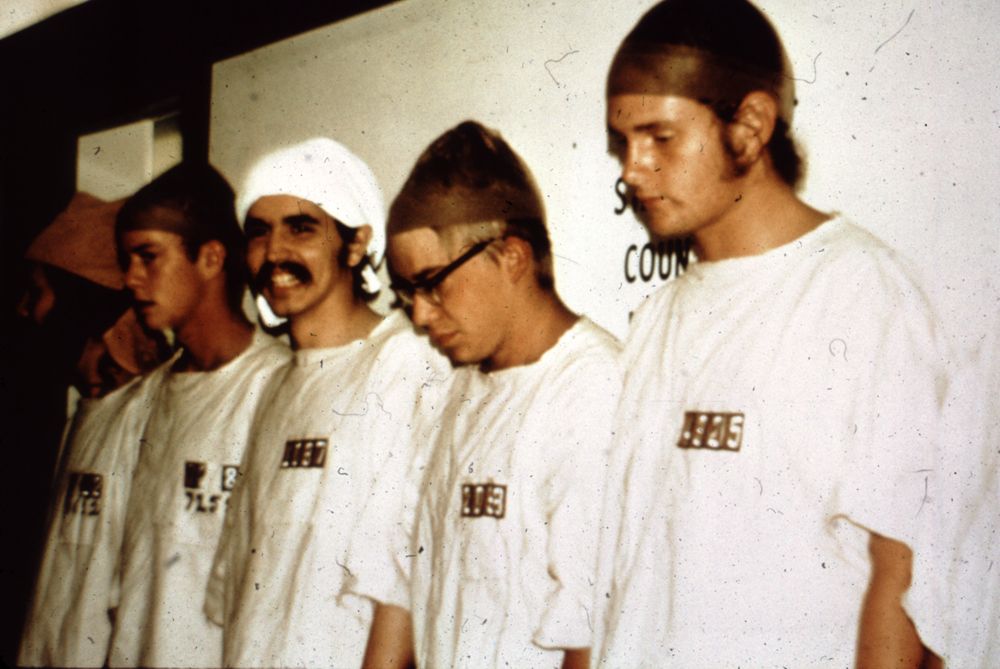
The Stanford Prison Experiment
Kickstarting our list is the controversial Stanford Prison Experiment. Dr. Philip Zimbardo conducted this experiment in 1971 to observe what would happen when you put good people in bad situations.
He took 24 male students and split them into two groups: prisoners and prison guards. The prisoners were stripped of their clothes and given smocks, while the guards were given uniforms and nightsticks.
The study was intended to last two weeks but shut down after six days due to the horrific conditions.
The ‘prisoners’ were constantly harassed and abused by the ‘guards.’ As a result, some even began to show signs of mental breakdowns due to psychological and physical abuse.
This study is still controversial today, with many people arguing that the participants should never have been put in such a position in the first place. However, it undeniably helped shape our understanding of how power can affect people’s behavior.
The Priming Experiment (Elderly Words Provoke Walking Slow)
Next on our list is a study conducted in 1998 by John Bargh. This experiment is often known as the ‘elderly words provoke walking slow’ study, which aimed to observe how subliminal messaging can affect behavior.
They had two groups complete a word association task to do this. One group was given words related to the elderly (for example, ‘wrinkled,’ ‘grey,’ and ‘bingo’), while they gave others neutral words.
The participants were then asked to walk down a hallway, with the researchers timing how long it took them to reach the end.
Unsurprisingly, those in the first group who had been exposed to words related to the elderly walked down the hall significantly slower than those in the second group.
This study was controversial at the time as it questioned how much control we have over our behavior.
At the time, many people were worried that if advertisers and others could influence our behavior in such a way, we would no longer be able to make our own decisions.
However, this was mainly so controversial because it was later debunked. A different lab led by Stephane Doyen could not produce the same results.
While there’s a lot of hearsay and rumors, social priming is a controversial phenomenon that can have dangerous consequences.
Bargh’s original experiment was flawed, inconsistent, lacked thoroughness, biased, and subject to equipment errors.
Even today, it’s still unclear exactly how much subliminal messaging can influence our behavior.
The Milgram Experiment
Another well-known and controversial experiment is the Milgram experiment conducted in 1961 by Stanley Milgram. This study observed how far people would go in obeying an authority figure, even if it meant harming another person.
Not coincidently, this experiment took place three months after the trial of Adolf Eichmann had started in Jerusalem.
This iconic experiment attempted to break down the effects of genocide psychologically and see whether Eichmann and others like him were ‘following orders’ during the Holocaust or were evil beings.
He recruited participants and told them they were participating in a study about memory and learning.
They were then paired with another participant, who was an actor, and the test subjects were told to shock them whenever they got an answer wrong.
The shocks were fake, but the actors pretended to be in pain. Even pre-recorded electrical shock sounds were played through the room to ensure the shock seemed authentic.
The actors were strapped to the chair, and the participant was told that this was to ensure the actors could not leave, no matter how bad it got.
The participants were also given a real electric shock before the test to provide them with an idea of what the actors would be going through.
And so the test commenced.
The test was simple. Lists of pairs of words were given and recalled by the participant and the actor.
The participant would then provide a list of four possible answers, and the actor would use a button to identify which sequence of words was correct.
If they were wrong, they would receive an electric shock, and the voltage would be turned up by 15 volts, with the max being 450 volts.
Of course, as the voltage was increased, the actors would pretend to be in more pain. In later versions of the experiment, some actors would even beg for mercy or plead that they had a heart condition. But still, the shocks continued.
Whenever the participant started to show signs that they wanted to stop the experiment, or at least not carry on, the experimenters replied with these statements, in this order of severity.
- Please continue or Please go on.
- The experiment requires that you continue.
- It is absolutely essential that you continue.
- You have no other choice; you must go on.
They would move on to the next if the first statement didn’t work. The experiment would stop if the participant didn’t continue after the fourth prompt.
As the test was run, 65% of the participants made it to the final 450-volt mark, all participants making it to at least the 300-volt mark, showcasing that people will go to great lengths to obey authority figures.
This study was controversial because it showed how easily people could be coerced into harming others, even if they don’t want to. It also raised ethical concerns about the use of deception in research.
Despite these concerns, the Milgram experiment is still considered a critical study, providing insight into how people respond to authority figures.
The ‘Little Albert’ Experiment
One of the most controversial psychological experiments of all time is the ‘Little Albert’ experiment , conducted by John Watson and Rosalie Rayner in 1920. This study aimed to observe how fear could be conditioned in a child.
To do this, they used a nine-month-old boy who was called Albert. He was exposed to several animals, including rats, rabbits, and dogs. Each time he saw them, he was given a slight shock.
After some time, Albert began to show signs of fear whenever he saw any of the animals, even if he wasn’t shocked. This showed that fear can be conditioned in children and doesn’t happen naturally.
The ‘Little Albert’ experiment was controversial because it showed how easy it is to manipulate a child’s emotions. It also raised ethical concerns about the use of animals in research.
Despite these concerns, the ‘Little Albert’ experiment is still considered a critical study, as it provides insight into how fear is learned, enabling us to understand better and treat anxiety disorders.
The Facebook Emotion Experiment
One of the most recent and controversial psychological experiments is the Facebook emotion experiment , conducted by a team of researchers from Cornell University in 2014. This study aimed to observe how social media can affect our emotions.
To do this, they manipulated the news feeds of over 700,000 Facebook users, showing some users positive content and others negative content. They then monitored how these users responded emotionally.
The study results showed that those exposed to positive content were more likely to post positive content themselves, and vice versa for those exposed to negative content.
This study was controversial because it showed that social media could impact our emotions. It also raised ethical concerns about the manipulation of people’s news feeds.
Despite these concerns, the Facebook emotion experiment is still considered an important study, providing insight into how social media can affect our moods and behaviors.
You can see how these controversial psychological experiments have shaped our understanding of the human mind.
While they may have raised some ethical concerns, they are still essential studiesproviding valuable insights into our thinking and behaviore.
Operation Midnight Climax
In the 1950s, the CIA ran what was known as ‘Operation Midnight Climax’ under the highly controversial MKULTRA program.
Under this program, the CIA used prostitutes to lure men back to safe houses in New York and San Francisco, where they would be drugged without their knowledge (usually slipping them into drinks) and observed through one-way mirrors.
Such drugs included illegal chemicals, such as LSD.
Over the decade this program was run, the government was provided with information on how mind-altering drugs and narcotics affected the human mind and their uses. Additionally, it helped develop better surveillance equipment, and there are reports of sexual blackmail.
However, the operation was reportedly shut down in 1965, though some say it continued unofficially under different names.
The Monster Study
In concluding our list, we have one of the most traumatic and controversial studies ever, which became known as The Monster Study of 1939.
It started with two researchers, Wendall Johnson and Mary Tudor, who were deep-diving into how the process and outcomes of positive reinforcement work.
Tudor was interested in how stuttering could be lessened or even cured by providing positive reinforcement to those who spoke without issues.
Sounds reasonable for now.
To figure this out, Wendall and Johnson divided 22 orphaned children between six and nine with no history of speech problems into two groups.
The first group was constantly bombarded with positive feedback and praise for how excellent and fluent their speech was, regardless of what their speech was like.
However, the second group was treated a little differently. They would receive negative feedback and be punished, regardless of their speech fluency.
Things got so bad for this group that one girl even ran away from the orphanage where this was taking place, as reported by the New York Times at the time.
If you put yourself in that position and imagine what life must have been like as a six-year-old going through such trauma, and you have no understanding of why you’ll be quick to see how cruel and controversial this experiment was.
These children carried that trauma with them for the rest of their lives.
Related Posts

The Lovers of Valdaro – A Double Burial From Neolithic Italy

Quiz: How well do you know US presidents?
2 thoughts on “the 7 most controversial psychological experiments of all time”.
Why was the Tuskegee Syphilis Study not on this list? That was extremely horrific and controversial that went on for 40 years!
Because it’s an article limited to psychological experiments, as per the title, perhaps
Leave a Comment Cancel Reply
Your email address will not be published. Required fields are marked *
Save my name, email, and website in this browser for the next time I comment.
Every print subscription comes with full digital access
Science News
Lies, damned lies and psychology experiments.
Researchers may deceive themselves when they mislead study participants
Share this:
By Bruce Bower
October 22, 2010 at 2:09 pm
BASEL, Switzerland — As dusk settled over this charming city by the Rhine in early October, psychologist Ralph Hertwig sipped scotch in his office with a visiting journalist and bemoaned the toxic — and for some researchers, intoxicating — effects of telling lies to gather data and get published.
Hertwig’s theme: Inauthentic experimenters and the research subjects who follow their lead. His case in point: A study in the May Psychological Science reporting that people who wear discount, mock designer sunglasses feel phony as a result and become more likely to cheat and to judge others as unethical.
With apologies to Jerry Lee Lewis, there was a whole lotta fakin’ going on in this investigation. Half of female participants in one trial completed a bogus questionnaire and were told that their answers reflected a preference for counterfeit products. They were then instructed to take a pair of sunglasses from a box marked “Counterfeit Sunglasses” — which actually contained expensive designer shades — and wear them while walking outside the lab for five minutes and then while working on lab tasks that paid money for correct responses.
Volunteers recorded their responses on a work sheet, after having been promised anonymity by the experimenters. But numbers on work sheets were used to identify each responder so that her actual and self-reported performance could be compared.
And behold—relative to women who hadn’t been misled about favoring faux stuff, tricked participants claimed to have made more correct responses than they actually did. In another experiment, misled women frequently described others as unethical and devious.
Hertwig rubbed his eyes wearily. “It’s just as likely that the experimenters’ own behavior encouraged the dishonest behavior that they observed,” he said.
Participants in the counterfeit condition could have read the situation as one in which normal standards of behavior didn’t apply because the researchers approved of designer knock-offs, Hertwig explained. Each woman saw that the experimenter had somehow acquired fake designer gear and displayed it openly. What’s more, the experimenter claimed special insights into people’s likings for counterfeit products, told volunteers to wear the glasses in public and had them evaluate positive statements about the glasses.
Sociologists’ “broken-windows” theory posits that signs of disorder and petty criminal behavior cause such acts to spread in communities. If that’s the case, Hertwig noted, the counterfeit-sunglasses scientists metaphorically “broke their lab’s window and cried foul when participants sprayed graffiti on the wall.”
And assuming volunteers were debriefed after the experiment, as required by the American Psychological Association’s rules of conduct, one shouldn’t expect them to trust any future researchers’ pledges of anonymity.
Ironically, psychologists’ blindness to these issues could stem from a counterfeit-sunglasses effect. “Deceptive research practices may induce a sense of self-alienation and lack of authenticity among experimenters that interferes with analyzing the signals that the experimental situation conveys to participants,” Hertwig mused.
Some of the most famous psychology experiments of the past 60 years have hinged on trickery, despite longstanding ethical and practical concerns about fooling people in the name of science ( SN: 6/20/98, p. 394 ).
Deceptive psychology’s heyday occurred in the 1960s and 1970s. Literature searches conducted by Hertwig and economist Andreas Ortmann of the University of New South Wales in Sydney, Australia, indicate that experimenters still mislead volunteers in between one-third and one-half of studies published in major social psychology journals.
Hertwig doesn’t want to ban deceptive research practices. He’d settle for researchers taking off their rose-colored, counterfeit sunglasses and scrutinizing how their devious methods may shape volunteers’ responses.
In other words, let the liar beware.
More Stories from Science News on Psychology

Online spaces may intensify teens’ uncertainty in social interactions

Language models may miss signs of depression in Black people’s Facebook posts

Timbre can affect what harmony is music to our ears

Not all cultures value happiness over other aspects of well-being

What parrots can teach us about human intelligence

Most people say self-control is the same as willpower. Researchers disagree

Here’s how to give a good gift, according to science

Why scientists are expanding the definition of loneliness
Subscribers, enter your e-mail address for full access to the Science News archives and digital editions.
Not a subscriber? Become one now .
- svg]:fill-accent-900 [&>svg]:stroke-accent-900">
7 famous psych studies with troubling backstories
By Eleanor Cummins
Posted on Aug 23, 2018 10:30 PM EDT
8 minute read
Psychology 101 textbooks typically include epic tales of the discipline’s history. They chronicle inventive experiments and dazzling results from days of old. But many of the things we think we know about human mind—like the depth of the parent-child bond, or our inclination to submit to authority even when it feels unethical—come from research that’s since been found flimsy, biased, or too unethical to be repeated today. Here are the troublesome backstories to seven classic psychological studies.
Little Albert
In the early 20th century, many American psychologists were under the influence of “behaviorism,” the belief that our behaviors aren’t so much a matter of free will, but of animal-like reflexes and learned responses guided by past experiences. Russian scientist Ivan Pavlov showed that dogs could be taught to salivate at the sound of a bell. But John B. Watson and his colleagues at Johns Hopkins University wanted to show they applied to humans, too.
To do this, they borrowed a 9-month-old baby they called “Albert” and tried to teach him a specific fear. Every time the baby touched a white rat, the researchers made a harsh sound with a hammer, causing him to cry. Eventually, the baby would cry at the sight of the white rat—or a rabbit, or a Santa Claus mask—alone.
At the time the results were published in February 1920, the study was well-regarded and it even appears to have inspired promising new psychologists to enter the field. But harsh criticism of the research, both ethical and practical in nature, has arisen over the intervening century. Albert could not give informed consent to such experimentation, and likely continued to fear certain stimuli long after the study was finished. At the same time, with just one participant and no control group, Watson’s data was effectively meaningless.
The Monster Study
Wendell Johnson was a life-long stutterer. A psychologist and preeminent speech pathologist at the University of Iowa in the 1930s, he set about researching the origins of his own condition. Like the Little Albert experimenters, Johnson harbored a belief that stuttering “begins not in the child’s mouth but in the parent’s ear.” In other words, it had nothing to do with atypical neurological or muscular patterns, it was learned.
Determined to test this hypothesis, Johnson and his collaborator, Mary Tudor, took a dozen children with normal speech patterns from a Davenport, Iowa orphanage and divided them into two groups. Kids in one group were told they had stutters. Kids in the other group weren’t. Tudor’s experiment had mixed results: two children improved their elocution, two didn’t change, and two lost fluency.
Sixty years later, as the New York Times reported , the orphans—now grown up—sued the state and the university, “citing among other things the infliction of emotional distress and fraudulent misrepresentation.” Needless to say, “the monster study,” as it quickly came to be known, could not be repeated today given its long-term consequences for young participants.
Project MKUltra
From 1953 to 1973, the CIA funded covert research on mind control at dozens of reputable institutions, including universities and hospitals. A source of inspiration to horror-fueled shows like Stranger Things and films like Conspiracy Theory, the covert project is today recognized as torture. In the hopes of revealing strategies by which the government could deprogram and reprogram spies or prisoners of wars, unwitting civilians were drugged, hypnotized, submitted to electroshock therapy, and shut away, sometimes for months, in sensory deprivation tanks and isolation chambers.
One of the proponents and practitioners of this research was psychiatrist Donald Ewen Cameron of McGill University’s Allan Memorial Institute. There, patients who entered with everyday conditions like mild anxiety would be submitted to the full bevy of “psychic driving” techniques, which left many of them amnesic, incontinent, child-like in their dependence, and deeply traumatized. His work led to dozens of lawsuits, new legislation, and large settlements to the victims. But at the time he was widely regarded, heading up the American, Canadian, and World psychiatric associations, and even participating in the Nuremberg doctors’ trial that censured experimentation and mass murder by Nazi physicians.
Of course, Cameron’s practices would never pass muster with an ethics review board today… but they probably wouldn’t have passed then, either.
Robbers Cave
The same year Lord of the Flies was published (1954), married psychologists Muzafer and Carolyn Wood Sherif took a group of 22 boys into the woods of Robbers Cave State Park in Oklahoma for a better look at realistic conflict theory.
Over the course of three weeks, the researchers planned to divide the children into two groups; ask them to compete at camp games with the secret hope of creating negativity between the groups; and then force them to come together and cooperate in a crisis. Along the way, the researchers manipulated the circumstances , encouraging the boys to fight and supplying them with tools to fuel their infighting.
The research made Muzafer Sherif a hero in his field, and the study remains important to conflict theorists. But a closer inspection suggests the results are unreliable (though not meaningless). Worse, the whole thing was unethical: Neither the boys nor, it seems, their parents, were informed about the true nature of the summer camp, according to Gina Perry, author of the new book The Lost Boys , which documents Sherif’s work.
Harlow’s monkeys
In the 1950s, University of Wisconsin psychologist Harry Harlow constructed a series of experiments to study the impact of isolation , separation, and neglect on children. To his credit, he didn’t use human babies (as some of his predecessors might have), but the effect on his long-established rhesus macaque colony is historically harrowing.
While his studies spanned decades and took many forms, his most famous experiment forced baby monkeys to choose between two fake surrogates. The “iron maiden” was made only of wire, but had bottles full of milk protruding from its metal chest. The other was covered in a soft cloth, but entirely devoid of food.
If Harlow’s behaviorist theories were right—that parents were there to provide resources, not comfort—the babies should have chosen the surrogate who offered them food over the surrogate who offered them nothing but comfort. But that theory quickly crumbled. The monkeys spent most of their time clinging to the cloth mother, crying out in pain. They visited the iron maiden only when they were too hungry to avoid her metallic frame any longer.
Harlow’s monkey studies were considered foundational to the field of parent-child research, but many contemporary psychologists argue such experiments should never be repeated—on humans or animals.
Milgram experiment
In the 1960s, Yale University psychologist Stanley Milgram devised a way to test the most pressing existential question of the era: Could obedience to authority be enough to persuade ostensibly good people to commit acts generally considered evil?
In the lab, Milgram assigned research participants the role of teacher, then asked them to administer ever-increasing electric shocks to their “student.” As the shocks escalated, the student—secretly a member of the research team and safe from any real harm—cried, yelled, and begged to be freed. Some of the “teachers” refused to continue. But roughly 65 percent administered the most intense voltage anyway.
Controversial since its conception, “the procedure created extreme levels of nervous tension,” Milgram wrote in his original 1963 study. “Profuse sweating, trembling, and stuttering were typical expressions of this emotional disturbance. One unexpected sign of tension—yet to be explained—was the regular occurrence of nervous laughter.” Whether they quit early, or made it to the finish line, participants were riled.
Despite the distress such studies clearly generate, the shock experiment continues to be replicated today, often with similar results. And new research is using Milgram-like methods to study human-robot relationships .
Stanford prison experiment
In 1971, Stanford psychology professor Philip Zimbardo put a group of college students in a fake makeshift jail, randomly assigned them to be guards or prisoners, and watched what unfolded. It appears many of the guards began to act in stereotypically authoritarian ways, though only after some poking and prodding from Zimbardo, the self-appointed prison superintendent. The prisoners, meanwhile, reportedly accepted much of this abuse, though some quit the experiments. Ultimately, the situation escalated to the point that Zimbardo abandoned the project after just six days.
The experiment remains legendary—the stuff of films, documentaries, and textbooks. But scrutiny of Zimbardo’s methodologies, conclusions, and ethics have grown to the point many professors now omit the experiment from their curriculum. “From the beginning, I have always said it’s a demonstration. The only thing that makes it an experiment is the random assignment to prisoners and guards, that’s the independent variable. There is no control group. There’s no comparison group. So it doesn’t fit the standards of what it means to be ‘an experiment,'” Zimbardo said in defense of his work . “It’s a very powerful demonstration of a psychological phenomenon, and it has had relevance.”
Latest in Psychology
How ‘psychics’ use psychology to create the illusion of telepathy how ‘psychics’ use psychology to create the illusion of telepathy.
By Chris French / MIT Press Reader
Social media bans could deny teenagers mental health help Social media bans could deny teenagers mental health help
By Daniel Chang / KFF Health News

How the Classics Changed Research Ethics
Some of history’s most controversial psychology studies helped drive extensive protections for human research participants. some say those reforms went too far..
- Behavioral Research
- Institutional Review Board (IRB)
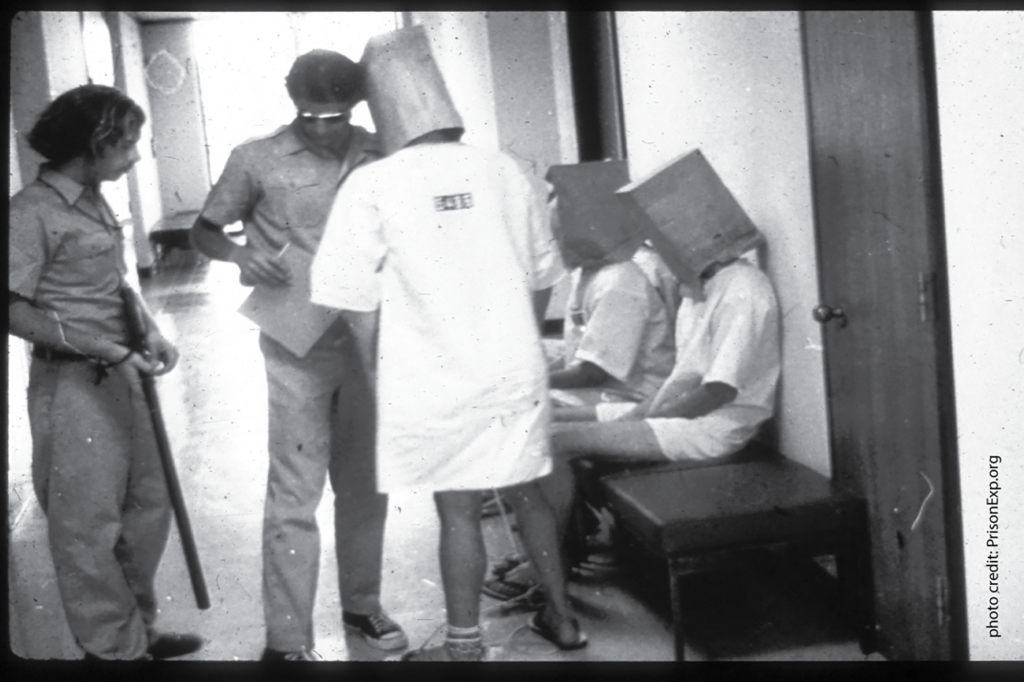
Photo above: In 1971, APS Fellow Philip Zimbardo halted his classic prison simulation at Stanford after volunteer “guards” became abusive to the “prisoners,” famously leading one prisoner into a fit of sobbing. Photo credit: PrisonExp.org
Nearly 60 years have passed since Stanley Milgram’s infamous “shock box” study sparked an international focus on ethics in psychological research. Countless historians and psychology instructors assert that Milgram’s experiments—along with studies like the Robbers Cave and Stanford prison experiments—could never occur today; ethics gatekeepers would swiftly bar such studies from proceeding, recognizing the potential harms to the participants.
But the reforms that followed some of the 20th century’s most alarming biomedical and behavioral studies have overreached, many social and behavioral scientists complain. Studies that pose no peril to participants confront the same standards as experimental drug treatments or surgeries, they contend. The institutional review boards (IRBs) charged with protecting research participants fail to understand minimal risk, they say. Researchers complain they waste time addressing IRB concerns that have nothing to do with participant safety.
Several factors contribute to this conflict, ethicists say. Researchers and IRBs operate in a climate of misunderstanding, confusing regulations, and a systemic lack of ethics training, said APS Fellow Celia Fisher, a Fordham University professor and research ethicist, in an interview with the Observer .
“In my view, IRBs are trying to do their best and investigators are trying to do their best,” Fisher said. “It’s more that we really have to enhance communication and training on both sides.”
‘Sins’ from the past
Modern human-subjects protections date back to the 1947 Nuremberg Code, the response to Nazi medical experiments on concentration-camp internees. Those ethical principles, which no nation or organization has officially accepted as law or official ethics guidelines, emphasized that a study’s benefits should outweigh the risks and that human subjects should be fully informed about the research and participate voluntarily.
See the 2014 Observer cover story by APS Fellow Carol A. Tavris, “ Teaching Contentious Classics ,” for more about these controversial studies and how to discuss them with students.
But the discovery of U.S.-government-sponsored research abuses, including the Tuskegee syphilis experiment on African American men and radiation experiments on humans, accelerated regulatory initiatives. The abuses investigators uncovered in the 1970s, 80s, and 90s—decades after the experiments had occurred—heightened policymakers’ concerns “about what else might still be going on,” George Mason University historian Zachary M. Schrag explained in an interview. These concerns generated restrictions not only on biomedical research but on social and behavioral studies that pose a minute risk of harm.
“The sins of researchers from the 1940s led to new regulations in the 1990s, even though it was not at all clear that those kinds of activities were still going on in any way,” said Schrag, who chronicled the rise of IRBs in his book Ethical Imperialism: Institutional Review Boards and the Social Sciences, 1965–2009.
Accompanying the medical research scandals were controversial psychological studies that provided fodder for textbooks, historical tomes, and movies.
- In the early 1950s, social psychologist Muzafer Sherif and his colleagues used a Boy Scout camp called Robbers Cave to study intergroup hostility. They randomly assigned preadolescent boys to one of two groups and concocted a series of competitive activities that quickly sparked conflict. They later set up a situation that compelled the boys to overcome their differences and work together. The study provided insights into prejudice and conflict resolution but generated criticism because the children weren’t told they were part of an experiment.
- In 1961, Milgram began his studies on obedience to authority by directing participants to administer increasing levels of electric shock to another person (a confederate). To Milgram’s surprise, more than 65% of the participants delivered the full voltage of shock (which unbeknownst to them was fake), even though many were distressed about doing so. Milgram was widely criticized for the manipulation and deception he employed to carry out his experiments.
- In 1971, APS Fellow Philip Zimbardo halted his classic prison simulation at Stanford after volunteer “guards” became abusive to the “prisoners,” famously leading one prisoner into a fit of sobbing.
Western policymakers created a variety of safeguards in the wake of these psychological studies and other medical research. Among them was the Declaration of Helsinki, an ethical guide for human-subjects research developed by the Europe-based World Medical Association. The U.S. Congress passed the National Research Act of 1974, which created a commission to oversee participant protections in biomedical and behavioral research. And in the 90s, federal agencies adopted the Federal Policy for the Protection of Human Subjects (better known as the Common Rule), a code of ethics applied to any government-funded research. IRBs review studies through the lens of the Common Rule. After that, social science research, including studies in social psychology, anthropology, sociology, and political science, began facing widespread institutional review (Schrag, 2010).
Sailing Through Review
Psychological scientists and other researchers who have served on institutional review boards provide these tips to help researchers get their studies reviewed swiftly.
- Determine whether your study qualifies for minimal-risk exemption from review. Online tools are even in development to help researchers self-determine exempt status (Ben-Shahar, 2019; Schneider & McClutcheon, 2018).
- If you’re not clear about your exemption, research the regulations to understand how they apply to your planned study. Show you’ve done your homework and have developed a protocol that is safe for your participants.
- Consult with stakeholders. Look for advocacy groups and representatives from the population you plan to study. Ask them what they regard as fair compensation for participation. Get their feedback about your questionnaires and consent forms to make sure they’re understandable. These steps help you better show your IRB that the population you’re studying will find the protections adequate (Fisher, 2022).
- Speak to IRB members or staff before submitting the protocol. Ask them their specific concerns about your study, and get guidance on writing up the protocol to address those concerns. Also ask them about expected turnaround times so you can plan your submission in time to meet any deadlines associated with your study (e.g., grant application deadlines).
Ben-Shahar, O. (2019, December 2). Reforming the IRB in experimental fashion. The Regulatory Review . University of Pennsylvania. https://www.theregreview.org/2019/12/02/ben-shahar-reforming-irb-experimental-fashion/
Fisher, C. B. (2022). Decoding the ethics code: A practical guide for psychologists (5 th ed.). Sage Publications.
Schneider, S. L. & McCutcheon, J. A. (2018). Proof of concept: Use of a wizard for self-determination of IRB exempt status . Federal Demonstration Partnership. http://thefdp.org/default/assets/File/Documents/wizard_pilot_final_rpt.pdf
Social scientists have long contended that the Common Rule was largely designed to protect participants in biomedical experiments—where scientists face the risk of inducing physical harm on subjects—but fits poorly with the other disciplines that fall within its reach.
“It’s not like the IRBs are trying to hinder research. It’s just that regulations continue to be written in the medical model without any specificity for social science research,” she explained.
The Common Rule was updated in 2018 to ease the level of institutional review for low-risk research techniques (e.g., surveys, educational tests, interviews) that are frequent tools in social and behavioral studies. A special committee of the National Research Council (NRC), chaired by APS Past President Susan Fiske, recommended many of those modifications. Fisher was involved in the NRC committee, along with APS Fellows Richard Nisbett (University of Michigan) and Felice J. Levine (American Educational Research Association), and clinical psychologist Melissa Abraham of Harvard University. But the Common Rule reforms have yet to fully expedite much of the research, partly because the review boards remain confused about exempt categories, Fisher said.
Interference or support?
That regulatory confusion has generated sour sentiments toward IRBs. For decades, many social and behavioral scientists have complained that IRBs effectively impede scientific progress through arbitrary questions and objections.
In a Perspectives on Psychological Science paper they co-authored, APS Fellows Stephen Ceci of Cornell University and Maggie Bruck of Johns Hopkins University discussed an IRB rejection of their plans for a study with 6- to 10-year-old participants. Ceci and Bruck planned to show the children videos depicting a fictional police officer engaging in suggestive questioning of a child.
“The IRB refused to approve the proposal because it was deemed unethical to show children public servants in a negative light,” they wrote, adding that the IRB held firm on its rejection despite government funders already having approved the study protocol (Ceci & Bruck, 2009).
Other scientists have complained the IRBs exceed their Common Rule authority by requiring review of studies that are not government funded. In 2011, psychological scientist Jin Li sued Brown University in federal court for barring her from using data she collected in a privately funded study on educational testing. Brown’s IRB objected to the fact that she paid her participants different amounts of compensation based on need. (A year later, the university settled the case with Li.)
In addition, IRBs often hover over minor aspects of a study that have no genuine relation to participant welfare, Ceci said in an email interview.
“You can have IRB approval and later decide to make a nominal change to the protocol (a frequent one is to add a new assistant to the project or to increase the sample size),” he wrote. “It can take over a month to get approval. In the meantime, nothing can move forward and the students sit around waiting.”
Not all researchers view institutional review as a roadblock. Psychological scientist Nathaniel Herr, who runs American University’s Interpersonal Emotion Lab and has served on the school’s IRB, says the board effectively collaborated with researchers to ensure the study designs were safe and that participant privacy was appropriately protected
“If the IRB that I operated on saw an issue, they shared suggestions we could make to overcome that issue,” Herr said. “It was about making the research go forward. I never saw a project get shut down. It might have required a significant change, but it was often about confidentiality and it’s something that helps everybody feel better about the fact we weren’t abusing our privilege as researchers. I really believe it [the review process] makes the projects better.”
Some universities—including Fordham University, Yale University, and The University of Chicago—even have social and behavioral research IRBs whose members include experts optimally equipped to judge the safety of a psychological study, Fisher noted.
Training gaps
Institutional review is beset by a lack of ethics training in research programs, Fisher believes. While students in professional psychology programs take accreditation-required ethics courses in their doctoral programs, psychologists in other fields have no such requirement. In these programs, ethics training is often limited to an online program that provides, at best, a perfunctory overview of federal regulations.
“It gives you the fundamental information, but it has nothing to do with our real-world deliberations about protecting participants,” she said.
Additionally, harm to a participant is difficult to predict. As sociologist Martin Tolich of University of Otago in New Zealand wrote, the Stanford prison study had been IRB-approved.
“Prediction of harm with any certainty is not necessarily possible, and should not be the aim of ethics review,” he argued. “A more measured goal is the minimization of risk, not its eradication” (Tolich, 2014).
Fisher notes that scientists aren’t trained to recognize and respond to adverse events when they occur during a study.
“To be trained in research ethics requires not just knowing you have to obtain informed consent,” she said. “It’s being able to apply ethical reasoning to each unique situation. If you don’t have the training to do that, then of course you’re just following the IRB rules, which are very impersonal and really out of sync with the true nature of what we’re doing.”
Researchers also raise concerns that, in many cases, the regulatory process harms vulnerable populations rather than safeguards them. Fisher and psychological scientist Brian Mustanski of University of Illinois at Chicago wrote in 2016, for example, that the review panels may be hindering HIV prevention strategies by requiring researchers to get parental consent before including gay and bisexual adolescents in their studies. Under that requirement, youth who are not out to their families get excluded. Boards apply those restrictions even in states permitting minors to get HIV testing and preventive medication without parental permission—and even though federal rules allow IRBs to waive parental consent in research settings (Mustanski & Fisher, 2016)
IRBs also place counterproductive safety limits on suicide and self-harm research, watching for any sign that a participant might need to be removed from a clinical study and hospitalized.
“The problem is we know that hospitalization is not the panacea,” Fisher said. “It stops suicidality for the moment, but actually the highest-risk period is 3 months after the first hospitalization for a suicide attempt. Some of the IRBs fail to consider that a non-hospitalization intervention that’s being tested is just as safe as hospitalization. It’s a difficult problem, and I don’t blame them. But if we have to take people out of a study as soon as they reach a certain level of suicidality, then we’ll never find effective treatment.”
Communication gaps
Supporters of the institutional review process say researchers tend to approach the IRB process too defensively, overlooking the board’s good intentions.
“Obtaining clarification or requesting further materials serve to verify that protections are in place,” a team of institutional reviewers wrote in an editorial for Psi Chi Journal of Psychological Research . “If researchers assume that IRBs are collaborators in the research process, then these requests can be seen as prompts rather than as admonitions” (Domenech Rodriguez et al., 2017).
Fisher agrees that researchers’ attitudes play a considerable role in the conflicts that arise over ethics review. She recommends researchers develop each protocol with review-board questions in mind (see sidebar).
“For many researchers, there’s a disdain for IRBs,” she said. “IRBs are trying their hardest. They don’t want to reject research. It’s just that they’re not informed. And sometimes if behavioral scientists or social scientists are disdainful of their IRBs, they’re not communicating with them.”
Some researchers are building evidence to help IRBs understand the level of risk associated with certain types of psychological studies.
- In a study involving more than 500 undergraduate students, for example, psychological scientists at the University of New Mexico found that the participants were less upset than expected by questionnaires about sex, trauma , and other sensitive topics. This finding, the researchers reported in Psychological Science , challenges the usual IRB assumption about the stress that surveys on sex and trauma might inflict on participants (Yeater et al., 2012).
- A study involving undergraduate women indicated that participants who had experienced child abuse , although more likely than their peers to report distress from recalling the past as part of a study, were also more likely to say that their involvement in the research helped them gain insight into themselves and hoped it would help others (Decker et al., 2011).
- A multidisciplinary team, including APS Fellow R. Michael Furr of Wake Forest University, found that adolescent psychiatric patients showed a drop in suicide ideation after being questioned regularly about their suicidal thoughts over the course of 2 years. This countered concerns that asking about suicidal ideation would trigger an increase in such thinking (Mathias et al., 2012).
- A meta-analysis of more than 70 participant samples—totaling nearly 74,000 individuals—indicated that people may experience only moderate distress when discussing past traumas in research studies. They also generally might find their participation to be a positive experience, according to the findings (Jaffe et al., 2015).
The takeaways
So, are the historians correct? Would any of these classic experiments survive IRB scrutiny today?
Reexaminations of those studies make the question arguably moot. Recent revelations about some of these studies suggest that scientific integrity concerns may taint the legacy of those findings as much as their impact on participants did (Le Texier, 2019, Resnick, 2018; Perry, 2018).
Also, not every aspect of the controversial classics is taboo in today’s regulatory environment. Scientists have won IRB approval to conceptually replicate both the Milgram and Stanford prison experiments (Burger, 2009; Reicher & Haslam, 2006). They simply modified the protocols to avert any potential harm to the participants. (Scholars, including Zimbardo himself, have questioned the robustness of those replication findings [Elms, 2009; Miller, 2009; Zimbardo, 2006].)
Many scholars believe there are clear and valuable lessons from the classic experiments. Milgram’s work, for instance, can inject clarity into pressing societal issues such as political polarization and police brutality . Ethics training and monitoring simply need to include those lessons learned, they say.
“We should absolutely be talking about what Milgram did right, what he did wrong,” Schrag said. “We can talk about what we can learn from that experience and how we might answer important questions while respecting the rights of volunteers who participate in psychological experiments.”
Feedback on this article? Email [email protected] or login to comment.
References
Burger, J. M. (2009). Replicating Milgram: Would people still obey today? American Psychologist , 64 (1), 1–11. https://doi.org/10.1037/a0010932
Ceci, S. J. & Bruck, M. (2009). Do IRBs pass the minimal harm test? Perspectives on Psychological Science , 4 (1), 28–29. https://doi.org/10.1111/j.1745-6924.2009.01084.x
Decker, S. E., Naugle, A. E., Carter-Visscher, R., Bell, K., & Seifer, A. (2011). Ethical issues in research on sensitive topics: Participants’ experiences of stress and benefit . Journal of Empirical Research on Human Research Ethics: An International Journal , 6 (3), 55–64. https://doi.org/10.1525/jer.2011.6.3.55
Domenech Rodriguez, M. M., Corralejo, S. M., Vouvalis, N., & Mirly, A. K. (2017). Institutional review board: Ally not adversary. Psi Chi Journal of Psychological Research , 22 (2), 76–84. https://doi.org/10.24839/2325-7342.JN22.2.76
Elms, A. C. (2009). Obedience lite. American Psychologist , 64 (1), 32–36. https://doi.org/10.1037/a0014473
Fisher, C. B., True, G., Alexander, L., & Fried, A. L. (2009). Measures of mentoring, department climate, and graduate student preparedness in the responsible conduct of psychological research. Ethics & Behavior , 19 (3), 227–252. https://doi.org/10.1080/10508420902886726
Jaffe, A. E., DiLillo, D., Hoffman, L., Haikalis, M., & Dykstra, R. E. (2015). Does it hurt to ask? A meta-analysis of participant reactions to trauma research. Clinical Psychology Review , 40 , 40–56. https://doi.org/10.1016/j.cpr.2015.05.004
Le Texier, T. (2019). Debunking the Stanford Prison experiment. American Psychologist , 74 (7), 823–839. http://dx.doi.org/10.1037/amp0000401
Mathias, C. W., Furr, R. M., Sheftall, A. H., Hill-Kapturczak, N., Crum, P., & Dougherty, D. M. (2012). What’s the harm in asking about suicide ideation? Suicide and Life-Threatening Behavior , 42 (3), 341–351. https://doi.org/10.1111/j.1943-278X.2012.0095.x
Miller, A. G. (2009). Reflections on “Replicating Milgram” (Burger, 2009). American Psychologist , 64 (1), 20–27. https://doi.org/10.1037/a0014407
Mustanski, B., & Fisher, C. B. (2016). HIV rates are increasing in gay/bisexual teens: IRB barriers to research must be resolved to bend the curve. American Journal of Preventive Medicine , 51 (2), 249–252. https://doi.org/10.1016/j.amepre.2016.02.026
Perry, G. (2018). The lost boys: Inside Muzafer Sherif’s Robbers Cave experiment. Scribe Publications.
Reicher, S. & Haslam, S. A. (2006). Rethinking the psychology of tyranny: The BBC prison study. British Journal of Social Psychology , 45 , 1–40. https://doi.org/10.1348/014466605X48998
Resnick, B. (2018, June 13). The Stanford prison experiment was massively influential. We just learned it was a fraud. Vox. https://www.vox.com/2018/6/13/17449118/stanford-prison-experiment-fraud-psychology-replication
Schrag, Z. M. (2010). Ethical imperialism: Institutional review boards and the social sciences, 1965–2009 . Johns Hopkins University Press.
Tolich, M. (2014). What can Milgram and Zimbardo teach ethics committees and qualitative researchers about minimal harm? Research Ethics , 10 (2), 86–96. https://doi.org/10.1177/1747016114523771
Yeater, E., Miller, G., Rinehart, J., & Nason, E. (2012). Trauma and sex surveys meet minimal risk standards: Implications for institutional review boards. Psychological Science , 23 (7), 780–787. https://doi.org/10.1177/0956797611435131
Zimbardo, P. G. (2006). On rethinking the psychology of tyranny: The BBC prison study. British Journal of Social Psychology , 45 , 47–53. https://doi.org/10.1348/014466605X81720
APS regularly opens certain online articles for discussion on our website. Effective February 2021, you must be a logged-in APS member to post comments. By posting a comment, you agree to our Community Guidelines and the display of your profile information, including your name and affiliation. Any opinions, findings, conclusions, or recommendations present in article comments are those of the writers and do not necessarily reflect the views of APS or the article’s author. For more information, please see our Community Guidelines .
Please login with your APS account to comment.
About the Author
Scott Sleek is a freelance writer in Silver Spring, Maryland, and the former director of news and information at APS.

Inside Grants: National Science Foundation Research Data Ecosystems (RDE)
The National Science Foundation’s Research Data Ecosystems (RDE) is a $38 million effort to improve scientific research through modernized data management collection.

Up-and-Coming Voices: Methodology and Research Practices
Talks by students and early-career researchers related to methodology and research practices.

Understanding ‘Scientific Consensus’ May Correct Misperceptions About GMOs, but Not Climate Change
Explaining the meaning of “scientific consensus” may be more effective at countering some types of misinformation than others.
Privacy Overview
| Cookie | Duration | Description |
|---|---|---|
| __cf_bm | 30 minutes | This cookie, set by Cloudflare, is used to support Cloudflare Bot Management. |
| Cookie | Duration | Description |
|---|---|---|
| AWSELBCORS | 5 minutes | This cookie is used by Elastic Load Balancing from Amazon Web Services to effectively balance load on the servers. |
| Cookie | Duration | Description |
|---|---|---|
| at-rand | never | AddThis sets this cookie to track page visits, sources of traffic and share counts. |
| CONSENT | 2 years | YouTube sets this cookie via embedded youtube-videos and registers anonymous statistical data. |
| uvc | 1 year 27 days | Set by addthis.com to determine the usage of addthis.com service. |
| _ga | 2 years | The _ga cookie, installed by Google Analytics, calculates visitor, session and campaign data and also keeps track of site usage for the site's analytics report. The cookie stores information anonymously and assigns a randomly generated number to recognize unique visitors. |
| _gat_gtag_UA_3507334_1 | 1 minute | Set by Google to distinguish users. |
| _gid | 1 day | Installed by Google Analytics, _gid cookie stores information on how visitors use a website, while also creating an analytics report of the website's performance. Some of the data that are collected include the number of visitors, their source, and the pages they visit anonymously. |
| Cookie | Duration | Description |
|---|---|---|
| loc | 1 year 27 days | AddThis sets this geolocation cookie to help understand the location of users who share the information. |
| VISITOR_INFO1_LIVE | 5 months 27 days | A cookie set by YouTube to measure bandwidth that determines whether the user gets the new or old player interface. |
| YSC | session | YSC cookie is set by Youtube and is used to track the views of embedded videos on Youtube pages. |
| yt-remote-connected-devices | never | YouTube sets this cookie to store the video preferences of the user using embedded YouTube video. |
| yt-remote-device-id | never | YouTube sets this cookie to store the video preferences of the user using embedded YouTube video. |
| yt.innertube::nextId | never | This cookie, set by YouTube, registers a unique ID to store data on what videos from YouTube the user has seen. |
| yt.innertube::requests | never | This cookie, set by YouTube, registers a unique ID to store data on what videos from YouTube the user has seen. |
Unethical Behavior in Organizations and Ethics Programs: The Mediation Role of Trust in Top Management
- Original Article
- Published: 07 August 2024
Cite this article

- Juliana Barreiros Porto ORCID: orcid.org/0000-0001-9164-2719 1 ,
- Jeanine Â. Vieira Zagheto ORCID: orcid.org/0000-0003-2223-4628 1 &
- Adelino José ORCID: orcid.org/0000-0003-3446-181X 1
23 Accesses
Explore all metrics
Researchers and professionals have made considerable effort to understand the effects of ethics programs on ethical behavior. Although there have been advancements, the literature on the subject lacks information about the mechanisms that cause this effect. This study aims at this gap and explores the mediating effect of trust in top management on the relationship between compliance- and values-oriented ethics programs and unethical behavior. A cross-sectional study was conducted with 241 workers. The scales used measured unethical behavior, trust in management, and type of integrity program. Social desirability was controlled. Semi-Confirmatory Factor Analyses were conducted for all scales. Results of a path analysis showed that trust mediated the relationship between values-oriented ethics programs and unethical behavior. Compliance-oriented programs did not influence unethical behavior but significantly impacted trust in top management. In conclusion, this study shows that ethics programs prioritizing values are more successful in reducing unethical behavior than compliance-oriented programs.
This is a preview of subscription content, log in via an institution to check access.
Access this article
Subscribe and save.
- Get 10 units per month
- Download Article/Chapter or eBook
- 1 Unit = 1 Article or 1 Chapter
- Cancel anytime
Price includes VAT (Russian Federation)
Instant access to the full article PDF.
Rent this article via DeepDyve
Institutional subscriptions

Similar content being viewed by others
The pluralist theory of ethics programs orientations and ideologies: an empirical study anchored in requisite variety.

Can Corporate Ethics Programs Reduce Unethical Behavior? Threat Appraisal or Coping Appraisal
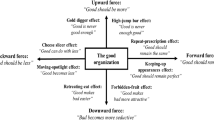
A Paradox of Ethics: Why People in Good Organizations do Bad Things
Explore related subjects.
- Medical Ethics
Data Availability
The datasets generated and analyzed during the current study are not publicly available due the fact that they constitute an excerpt of research in progress but are available from the corresponding author on reasonable request.
Code Availability
Not applicable.
Bernardi, R. A. (2006). Associations between Hofstede’s cultural constructs and social desirability response bias. Journal of Business Ethics, 65 (1), 43–53. https://doi.org/10.1007/s10551-005-5353-0
Article Google Scholar
Brasil. (2020). Manual de Conduta do Agente Público Civil do Poder Executivo Federal (1st ed.). SGP/Ministério da Economia.
Cropanzano, R., & Mitchell, M. S. (2005). Social exchange theory: An interdisciplinary review. Journal of Management, 31 (6), 874–900. https://doi.org/10.1177/0149206305279602
Cushman, F., Young, L., & Greene, J. D. (2010). Multi‐system Moral Psychology. In The Moral Psychology Handbook (pp. 47–71). Oxford University Press. https://doi.org/10.1093/acprof:oso/9780199582143.003.0003
Decreto da Presidência da República nº 9.203 (2017). https://www.planalto.gov.br/ccivil_03/_Ato2015-2018/2017/Decreto/D9203.htm
Dietz, G., & Den Hartog, D. N. (2006). Measuring trust inside organisations. Personnel Review, 35 (5), 557–588. https://doi.org/10.1108/00483480610682299
Ewelt-Knauer, C., Schwering, A., & Winkelmann, S. (2022). Doing good by doing bad: How tone at the top and tone at the bottom impact performance-improving noncompliant behavior. Journal of Business Ethics, 175 (3), 609–624. https://doi.org/10.1007/s10551-020-04647-6
Fehr, R., Fulmer, A., & Keng-Highberger, F. T. (2020). How do employees react to leaders’ unethical behavior? The role of moral disengagement. Personnel Psychology, 73 (1), 73–93. https://doi.org/10.1111/peps.12366
Ferrando, P. J., & Lorenzo-Seva, U. (2018). Assessing the quality and appropriateness of factor solutions and factor score estimates in exploratory item factor analysis. Educational and Psychological Measurement, 78 (5), 762–780. https://doi.org/10.1177/0013164417719308
Article PubMed Google Scholar
Hair, J. F., Babin, B. J., Anderson, R. E., & Black, W. C. (2019). Multivariate Data Analysis (8th ed.). Cengage.
Hansen, D. S., Dunford, B. B., Alge, B. J., & Jackson, C. L. (2016). Corporate social responsibility, ethical leadership, and trust propensity: A multi-experience model of perceived ethical climate. Journal of Business Ethics, 137 (4), 649–662. https://doi.org/10.1007/s10551-015-2745-7
Hassan, S., Kaur, P., Muchiri, M., Ogbonnaya, C., & Dhir, A. (2023). Unethical leadership: Review, synthesis and directions for future research. Journal of Business Ethics, 183 (2), 511–550. https://doi.org/10.1007/s10551-022-05081-6
Henrich, J., Heine, S. J., & Norenzayan, A. (2010). The weirdest people in the world? Behavioral and Brain Sciences, 33 (2–3), 61–83. https://doi.org/10.1017/S0140525X0999152X
Jannat, T., Alam, S. S., Ho, Y. H., Omar, N. A., & Lin, C. Y. (2022). Can corporate ethics programs reduce unethical behavior? Threat appraisal or coping appraisal. Journal of Business Ethics, 176 (1), 37–53. https://doi.org/10.1007/s10551-020-04726-8
Kaptein, M. (2008). Developing a measure of unethical behavior in the workplace: A stakeholder perspective. Journal of Management, 34 (5), 978–1008. https://doi.org/10.1177/0149206308318614
Khaltar, O., & Moon, M. J. (2020). Effects of ethics and performance management on organizational performance in the public sector. Public Integrity, 22 (4), 372–394. https://doi.org/10.1080/10999922.2019.1615163
Kohlberg, L. (1984). The Psychology of Moral Development: The Nature and Validity of Moral Stages . Harper and Row.
Kuenzi, M., Mayer, D. M., & Greenbaum, R. L. (2020). Creating an ethical organizational environment: The relationship between ethical leadership, ethical organizational climate, and unethical behavior. Personnel Psychology, 73 (1), 43–71. https://doi.org/10.1111/peps.12356
Lašáková, A., Remišová, A., & Abratzky, D. V. (2022). Ethics programs in business and management literature: Bibliometric analysis of performance, content, and trends. Ethics & Bioethics, 12 (1–2), 92–107. https://doi.org/10.2478/ebce-2022-0001
Legood, A., van der Werff, L., Lee, A., & den Hartog, D. (2021). A meta-analysis of the role of trust in the leadership- performance relationship. European Journal of Work and Organizational Psychology, 30 (1), 1–22. https://doi.org/10.1080/1359432X.2020.1819241
Liao, E. Y., Wang, A. Y., & Zhang, C. Q. (2021). Who influences employemployees’side: A multi-foci meta-analysis of counterproductive workplace behaviors. Organizational Psychology Review, 11 (2), 97–143. https://doi.org/10.1177/2041386620962554
Lorenzo-Seva, U., & Ferrando, P. J. (2019). Robust Promin: A method for diagonally weighted factor rotation. Liberabit: Revista Peruana de Psicología , 25 (1), 99–106. https://doi.org/10.24265/liberabit.2019.v25n1.08
Lu, X. (2014). Ethical leadership and organizational citizenship behavior: The mediating roles of cognitive and affective trust. Social Behavior and Personality: An International Journal, 42 (3), 379–389. https://doi.org/10.2224/sbp.2014.42.3.379
Mayer, R. C., Davis, J. H., & Schoorman, F. D. (1995). Model of Trust. Academy of Management Review, 20 (3), 709–734.
Mayer, R. C., & Davis, J. H. (1999). The effect of the performance appraisal system on trust for management. Journal of Applied Psychology , 84 (1), 123–136. https://doi.org/10.1037/0021-9010.84.1.123
Memon, M. A., Cheah, J.-H., Ramayah, T., Ting, H., & Chuah, F. (2018). Mediation Analysis: issues and recommendations. Journal of Applied Structural Equation Modeling , 2 (1), i–ix. https://doi.org/10.47263/JASEM.2(1)01
Mitchell, M. S., Reynolds, S. J., & Treviño, L. K. (2020). The study of behavioral ethics within organizations: A special issue introduction. Personnel Psychology, 73 (1), 5–17. https://doi.org/10.1111/peps.12381
Mitchell, M. S., Rivera, G., & Treviño, L. K. (2023). Unethical leadership: A review, analysis, and research agenda. Personnel Psychology, 76 (2), 547–583. https://doi.org/10.1111/peps.12574
Mo, S., Lupoli, M. J., Newman, A., & Umphress, E. E. (2023). Good intentions, bad behavior: A review and synthesis of the literature on unethical prosocial behavior (UPB) at work. Journal of Organizational Behavior, 44 (2), 335–354. https://doi.org/10.1002/job.2617
Nascimento, S. M. P. do, Porto, J. B., Zagheto, J. Â. V., & Guimarães, L. N. (2023). Escala de Comportamento Ético no Trabalho (CET): Construção e Evidências de Validade. Revista Psicologia Organizações e Trabalho , 23 (1), 2301–2309. https://doi.org/10.5935/rpot/2023.1.23947
Ostroff, C., Kinicki, A. J., & Clark, M. A. (2002). Substantive and operational issues of response bias across levels of analysis: An example of climate-satisfaction relationships. Journal of Applied Psychology, 87 (2), 355–368. https://doi.org/10.1037/0021-9010.87.2.355
Parboteeah, K. P., Weiss, M., & Hoegl, M. (2024). Ethical climates across national contexts: A meta-analytical investigation. Journal of Business Ethics, 189 (3), 573–590. https://doi.org/10.1007/s10551-023-05387-z
Portaria CGU no57 (2019). https://repositorio.cgu.gov.br/handle/1/45186 (Retrieved August 5, 2024).
Porto, J. B., & Ferreira, M. C. (2016). A Scale of Organizational Values Framed on Schwartz’s Theory of Cultural Values. Psicologia : Teoria e Pesquisa, 32 (esp), 1–10. https://doi.org/10.1590/0102-3772e32ne222
Porto, J. B., & Pilati, R. (2021). Trust in Brazil: The Interplay of Jeitinho and Trust Conception. In C. T. Kwantes & B. C. H. Kuo (Eds.), Trust and Trustworthiness across Cultures (pp. 17–31). Springer International Publishing. https://doi.org/10.1007/978-3-030-56718-7
Pučėtaitė, R., Lämsä, A., & Novelskaitė, A. (2010). Building organizational trust in a low-trust societal context. Baltic Journal of Management, 5 (2), 197–217. https://doi.org/10.1108/17465261011045124
Randall, D. M., & Fernandes, M. F. (1991). The social desirability response bias in ethics research. Journal of Business Ethics, 10 (11), 805–817. https://doi.org/10.1007/BF00383696
Remišová, A., Lašáková, A., & Kirchmayer, Z. (2019). Influence of formal ethics program components on managerial ethical behavior. Journal of Business Ethics, 160 (1), 151–166. https://doi.org/10.1007/s10551-018-3832-3
Resende, M. M., Porto, J. B., & Gracia, F. J. (2024). Can we decrease unethical behavior at work? The role of ethical culture, ethical culture strength and collective moral identity. Current Psychology, 43 (8), 7153–7166. https://doi.org/10.1007/s12144-023-04615-z
Rest, J. R. (1979). Development in judging moral issues . University of Minnesota Press.
Google Scholar
Reynolds, S. J. (2006). A neurocognitive model of the ethical decision-making process: Implications for study and practice. The Journal of Applied Psychology, 91 (4), 737–748. https://doi.org/10.1037/0021-9010.91.4.737
Roy, A., Newman, A., Round, H., & Bhattacharya, S. (2024). Ethical culture in organizations: A review and agenda for future research. Business Ethics Quarterly, 34 (1), 97–138. https://doi.org/10.1017/beq.2022.44
Russell, T. L., Sparks, T. E., Campbell, J. P., Handy, K., Ramsberger, P., & Grand, J. A. (2017). Situating ethical behavior in the nomological network of job performance. Journal of Business and Psychology, 32 (3), 253–271. https://doi.org/10.1007/s10869-016-9454-9
Sarmawa, I. W. G., Widyani, A. A. D., Sugianingrat, I. A. P. W., & Martini, I. A. O. (2020). Ethical entrepreneurial leadership and organizational trust for organizational sustainability. Cogent Business and Management , 7 (1). https://doi.org/10.1080/23311975.2020.1818368
Schwepker, C. H. (2019). Strengthening customer value development and ethical intent in the salesforce: The influence of ethical values person–organization fit and trust in manager. Journal of Business Ethics, 159 (3), 913–925. https://doi.org/10.1007/s10551-018-3851-0
Schwepker, C. H., Jr., & Good, D. J. (2013). Improving salespeople’s trust in the organization, moral judgment and performance through transformational leadership. Journal of Business & Industrial Marketing, 28 (7), 535–546. https://doi.org/10.1108/JBIM-06-2011-0077
Spencer, S. J., Zanna, M. P., & Fong, G. T. (2005). Establishing a causal chain: Why experiments are often more effective than mediational analyses in examining psychological processes. Journal of Personality and Social Psychology, 89 (6), 845–851. https://doi.org/10.1037/0022-3514.89.6.845
Tenbrunsel, A. E., & Smith‐Crowe, K. (2008). Ethical decision making: where we’ve been and where we’re going. The Academy of Management Annals , 2 (1), 545–607. https://doi.org/10.1080/19416520802211677
Timmerman, M. E., & Lorenzo-Seva, U. (2011). Dimensionality assessment of ordered polytomous items with parallel analysis. Psychological Methods, 16 (2), 209–220. https://doi.org/10.1037/a0023353
Timmermans, J. (2022). Exploring the Multifaceted Relationship of Compliance and Integrity—The Case of the Defence Industry. In R. Beeres, R. Bertrand, J. Klomp, J. Timmermans, & J. Voetelink (Eds.), NL ARMS Netherlands Annual Review of Military Studies 2021 Compliance and Integrity in International Military Trade (pp. 95–114). Springer Nature.
Chapter Google Scholar
Transparência Internacional. (2021). Índice de Percepção da Corrupção 2020 . https://comunidade.transparenciainternacional.org.br/ipc-indice-de-percepcao-da-corrupcao-2020
Treviño, L. K., den Nieuwenboer, N. A., & Kish-Gephart, J. J. (2014). (Un)ethical behavior in organizations. Annual Review of Psychology, 65 , 635–660. https://doi.org/10.1146/annurev-psych-113011-143745
Treviño, L. K., Weaver, G. R., & Reynolds, S. J. (2006). Behavioral ethics in organizations: A review. Journal of Management, 32 (6). https://doi.org/10.1177/0149206306294258
Valentini, F., & Damásio, B. F. (2016). Variância Média Extraída e Confiabilidade Composta: Indicadores de Precisão. Psicologia : Teoria e Pesquisa , 32 (2). https://doi.org/10.1590/0102-3772e322225
Vecchione, M., Alessandri, G., & Barbaranelli, C. (2013). Measurement and application of egoistic and moralistic self-enhancements. International Journal of Selection and Assessment, 21 (2), 170–182. https://doi.org/10.1111/ijsa.12027
Weaver, G. R., & Treviño, L. K. (1999). Compliance and values oriented ethics programs: Influenceson employees’ attitudes and behavior. Business Ethics Quarterly, 9 (2), 315. https://doi.org/10.2307/3857477
Weaver, G. R., Treviño, L. K., & Cochran, P. L. (1999). Corporate ethics programs as control systems: Influences of executive commitment and environmental factors. Academy of Management Journal, 42 (1), 41–57. https://doi.org/10.5465/256873
Winter, B., & Aalbers, G. (2023). Índice de Capacidade de Combate à Corrupção (CCC) . Americas Society/Council of the Americas. https://www.controlrisks.com/campaigns/the-capacity-to-combat-corruption-index/
Wiernik, B. M., & Ones, D. S. (2018). Ethical employee behaviors in the consensus taxonomy of counterproductive work behaviors. International Journal of Selection and Assessment , 26 (1), 36–48. https://doi.org/10.1111/ijsa.12199
Xia, Y., & Yang, Y. (2019). RMSEA, CFI, and TLI in structural equation modeling with ordered categorical data: The story they tell depends on the estimation methods. Behavior Research Methods, 51 (1), 409–428. https://doi.org/10.3758/s13428-018-1055-2
Download references
Acknowledgements
This study was financed in part by the Coordenação de Aperfeiçoamento de Pessoal de Nível Superior – Brasil (CAPES) – Finance Code 001 , the Conselho Nacional de Desenvolvimento Científico e Tecnológico (CNPq) and Universidade de Brasília (UnB).
Author information
Authors and affiliations.
Universidade de Brasília (Graduate Program in Social, Work and Organizational Psychology), Brasília, DF, Brazil
Juliana Barreiros Porto, Jeanine Â. Vieira Zagheto & Adelino José
You can also search for this author in PubMed Google Scholar
Corresponding author
Correspondence to Juliana Barreiros Porto .
Ethics declarations
Informed consent.
Informed consent was obtained from all participants included in the study.
Conflict of Interests
The authors have no relevant financial or non-financial interests to disclose.
Rights and permissions
Springer Nature or its licensor (e.g. a society or other partner) holds exclusive rights to this article under a publishing agreement with the author(s) or other rightsholder(s); author self-archiving of the accepted manuscript version of this article is solely governed by the terms of such publishing agreement and applicable law.
Reprints and permissions
About this article
Porto, J.B., Zagheto, J.Â.V. & José, A. Unethical Behavior in Organizations and Ethics Programs: The Mediation Role of Trust in Top Management. Trends in Psychol. (2024). https://doi.org/10.1007/s43076-024-00399-8
Download citation
Accepted : 29 July 2024
Published : 07 August 2024
DOI : https://doi.org/10.1007/s43076-024-00399-8
Share this article
Anyone you share the following link with will be able to read this content:
Sorry, a shareable link is not currently available for this article.
Provided by the Springer Nature SharedIt content-sharing initiative
- Ethics program
- Organizational culture
- Ethical behavior
- Find a journal
- Publish with us
- Track your research

COMMENTS
We think we've found 20 answers to that question with our list of the most unethical experiments in psychology. ... From 1953 to 1973, the United States government conducted a series of unethical experiments meant to figure out the best ways to manipulate the mental states of citizens, and then to "develop chemical materials capable of ...
The Top 10 Unethical Psychology Experiments. 10. The Stanford Prison Experiment (1971). This example of unethical research studies occurred in August of 1971, Dr. Philip Zimbardo of Stanford University began a Navy-funded experiment examining the effects of power dynamics between prison officers and prisoners. It only took six days before the ...
Though these are highly unethical experiments, it should be mentioned that they did pave the way to induct our current ethical standards of experiments, and that should be seen as a positive. There is some crossover on this list with the Top 10 Evil Human Experiments. Three items from that list are reproduced here (items 8, 9, and 10) for the ...
At a Glance. Some of the most controversial and unethical experiments in psychology include Harlow's monkey experiments, Milgram's obedience experiments, Zimbardo's prison experiment, Watson's Little Albert experiment, and Seligman's learned helplessness experiment. These and other controversial experiments led to the formation of rules and ...
25. Emma Eckstein and Sigmund Freud. Image Source Despite seeking the help of Sigmund Freud for vague symptoms like stomach ailments and slight depression, 27-year old Emma Eckstein was "treated" by the German doctor for hysteria and excessive masturbation, a habit then considered dangerous to mental health.
5. Harlow's Monkey Experiments. In the 1950s, Harry Harlow of the University of Wisconsin tested infant dependency using rhesus monkeys in his experiments rather than human babies. The monkey ...
10 Ethically Dubious Psychology Experiments. 1. The Stanford Prison Experiment (1971) One of the most infamous experiments in psychology, the Stanford Prison Experiment was led by psychologist Philip Zimbardo. He recruited college students to play the roles of prisoners and guards in a mock prison. However, the experiment quickly spiraled out ...
Breaks were given at mealtimes (eaten sitting on the edge of the bed) and for toilet breaks. The volunteers wore visors that allowed in light but blocked any detailed vision, and touch-restricting cotton gloves. A continuous hum of air conditioning masked any small sounds that might have broken their sensory cocoon.
The Milgram "Shock Experiments". Stanley Milgram's studies conducted in the 1960s appeared to show that many people are incredibly obedient to authority. Given the instruction from a scientist, many participants applied what they thought were deadly levels of electricity to an innocent person.
Yale University psychologist Stanley Milgram conducted these experiments during the 1960s. They explored the effects of authority on obedience. In the experiments, an authority figure ordered participants to deliver what they believed were dangerous electrical shocks to another person. These results suggested that people are highly influenced ...
Here is a glimpse at some of the most controversial, unethical psychological experiments in history. Published: Dec 30, 2020 10:11 AM EST. Kashyap Vyas. 4 years ago. 0. Share; 1, 2.
The CIA has been implicated in a number of illegal mind-control experiments that went horribly wrong for the subjects. During the Cold War, the spy agency experimented with torture in the form of ...
Here are ten bizarre psychology experiments that totally crossed the line. 10. Milgram Experiment (1961) Featured Programs. The Milgram Experiment is one of the controversial experiments. Yale University social psychology professor Stanley Milgram embarked on his now infamous series of experiments in 1961. Prompted by the trial of high-ranking ...
Before that, human psychology experiments had far more potential risk. The original guidelines have, of course, been adapted and added to over the past 70 years as well — and for good reason. Below, you'll find seven examples of disturbing and highly unethical psychology experiments conducted on human subjects.
For the experiment, each subject spent three days alone in a cubicle. They were paid $20 per day. For sensory deprivation, subjects were blindfolded and wore cardboard arm cuffs that began at the ...
Oct 24, 2014, 8:50 AM PDT. Shutterstock. Some of the most important studies in the history of psychology couldn't be done today — because they were incredibly unethical. That includes the ...
1. A Class Divided Study Conducted By: Jane Elliott. Study Conducted in 1968 in an Iowa classroom. Experiment Details: Jane Elliott's famous experiment was inspired by the assassination of Dr. Martin Luther King Jr. and the inspirational life that he led. The third grade teacher developed an exercise, or better yet, a psychological experiment, to help her Caucasian students understand the ...
To mark the 50th anniversary of the experiments' publication (or, technically, the 51st), the Journal of Social Issues released a themed edition in September 2014 dedicated to all things Milgram ...
The 'Little Albert' Experiment. One of the most controversial psychological experiments of all time is the 'Little Albert' experiment, conducted by John Watson and Rosalie Rayner in 1920. This study aimed to observe how fear could be conditioned in a child. To do this, they used a nine-month-old boy who was called Albert.
Some of the most famous psychology experiments of the past 60 years have hinged on trickery, despite longstanding ethical and practical concerns about fooling people in the name of science (SN: 6 ...
Russian scientist Ivan Pavlov showed that dogs could be taught to salivate at the sound of a bell. But John B. Watson and his colleagues at Johns Hopkins University wanted to show they applied to ...
How the Classics Changed Research Ethics. Some of history's most controversial psychology studies helped drive extensive protections for human research participants. Some say those reforms went too far. Photo above: In 1971, APS Fellow Philip Zimbardo halted his classic prison simulation at Stanford after volunteer "guards" became abusive ...
In the past, some psychological experiments were run in frightening and unethical ways. From using children to experimenting on unknowing subjects, these fiv...
This study aims at this gap and explores the mediating effect of trust in top management on the relationship between compliance- and values-oriented ethics programs and unethical behavior. A cross-sectional study was conducted with 241 workers. The scales used measured unethical behavior, trust in management, and type of integrity program.